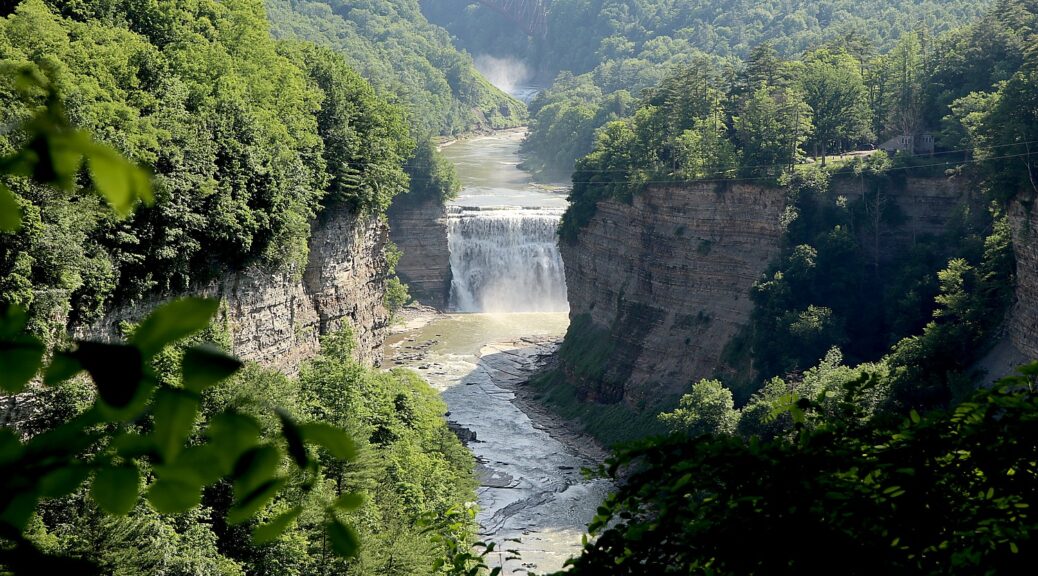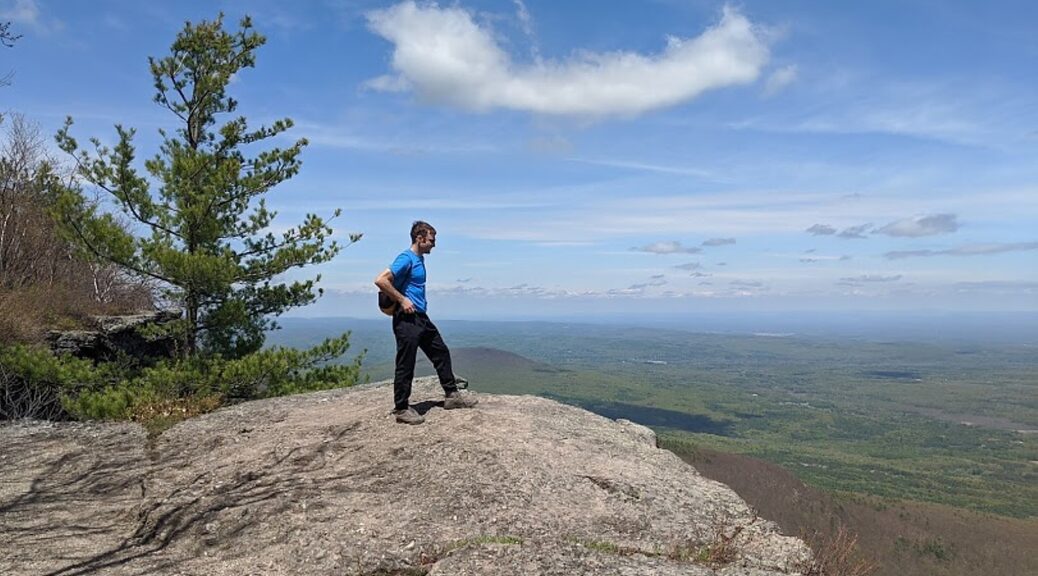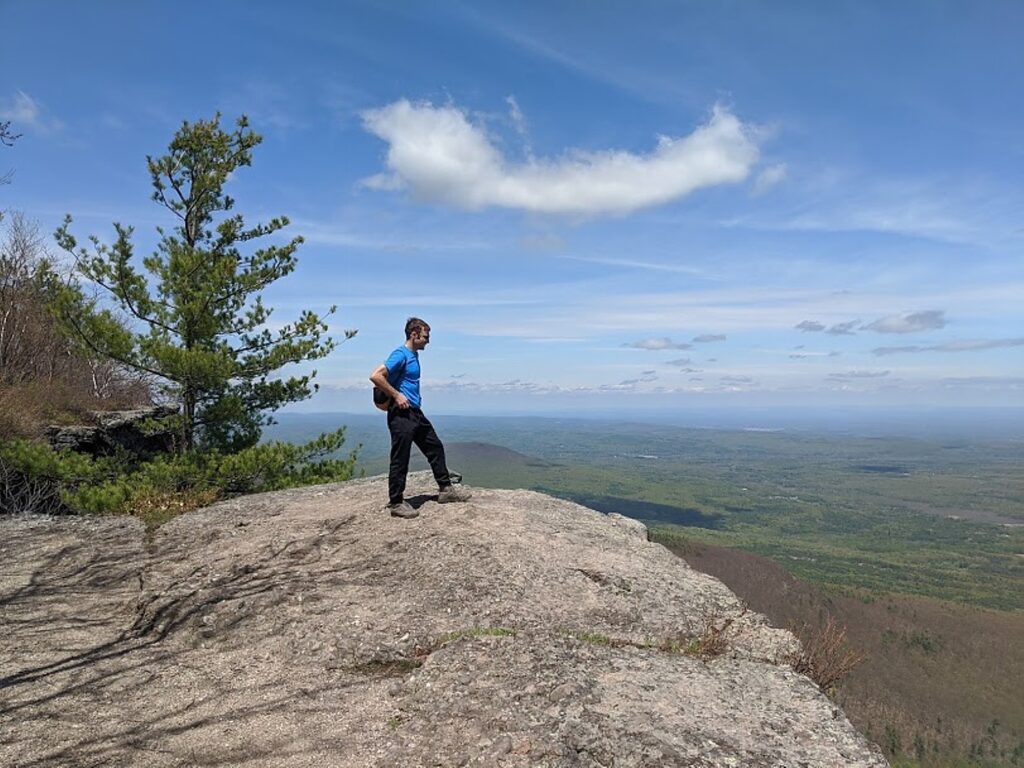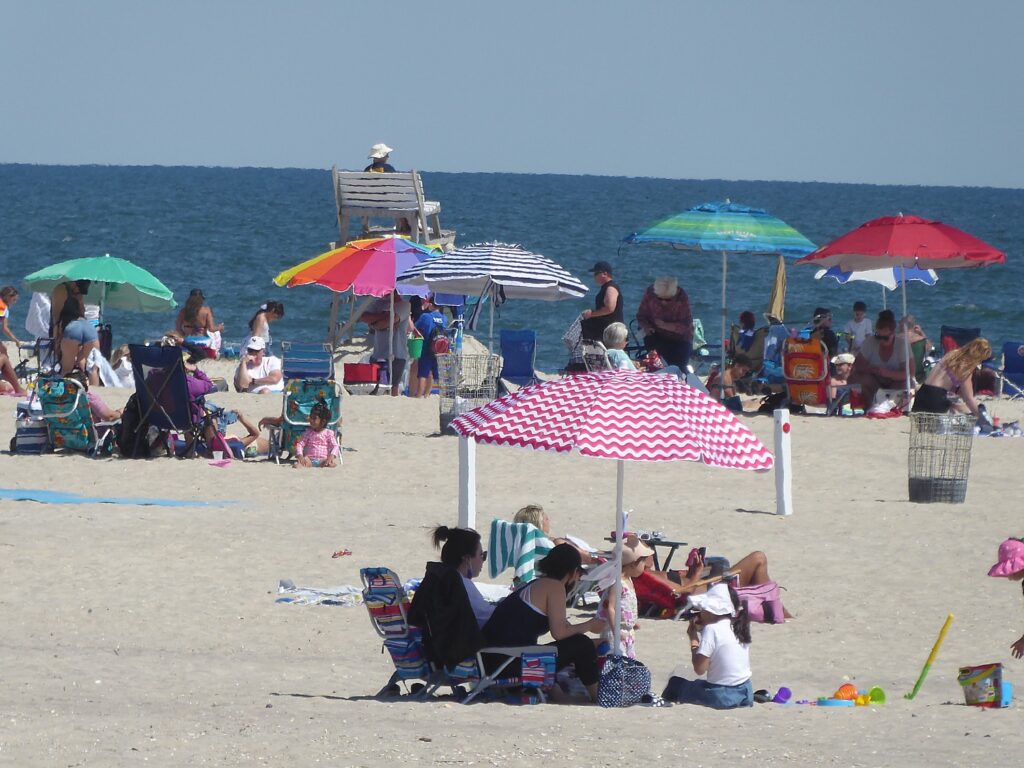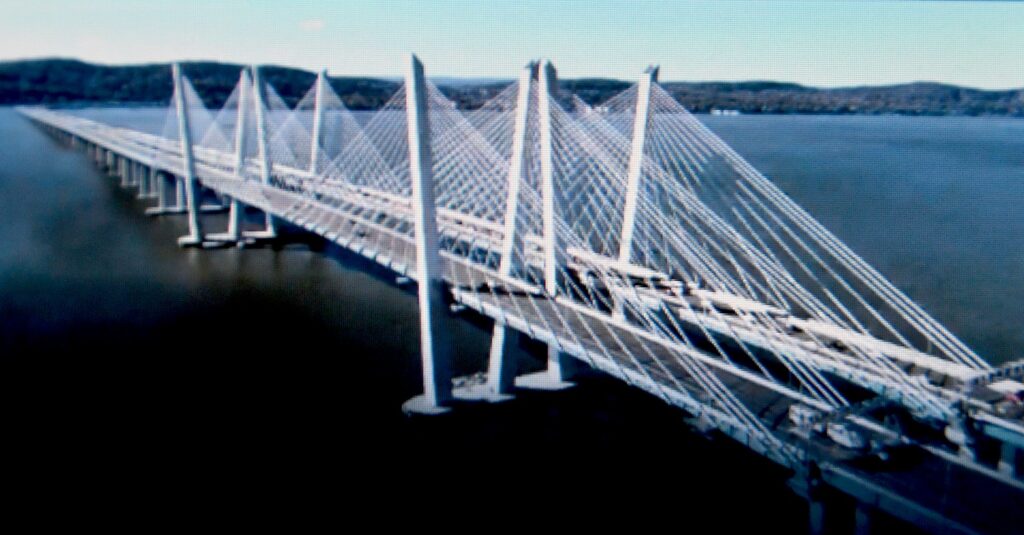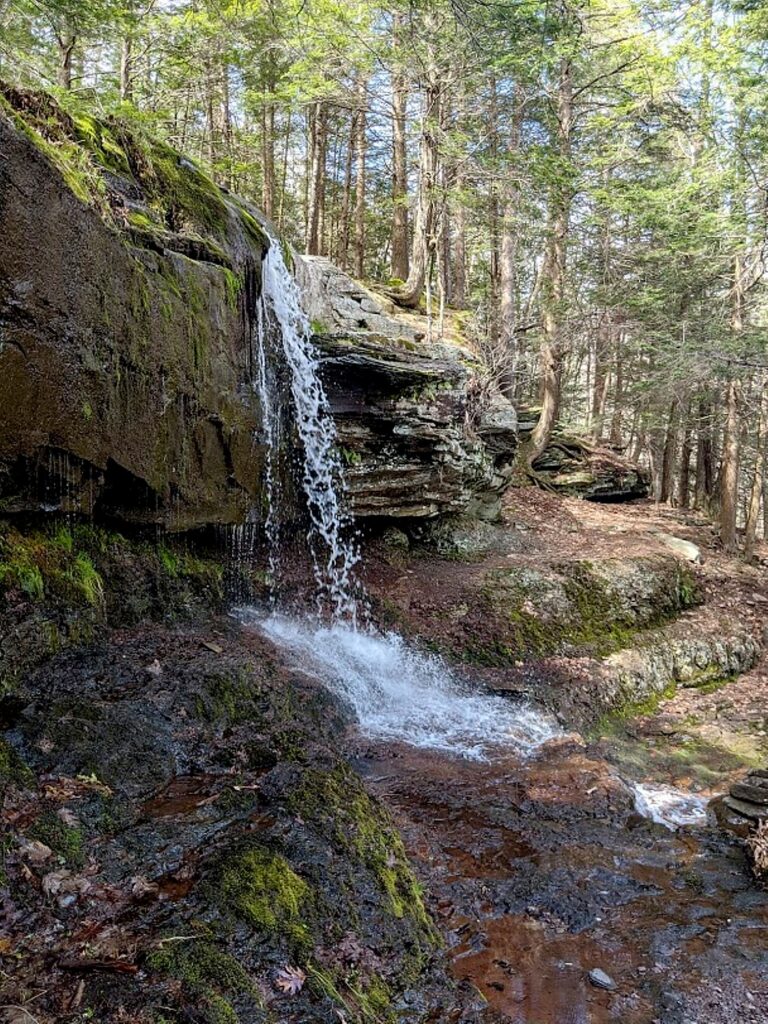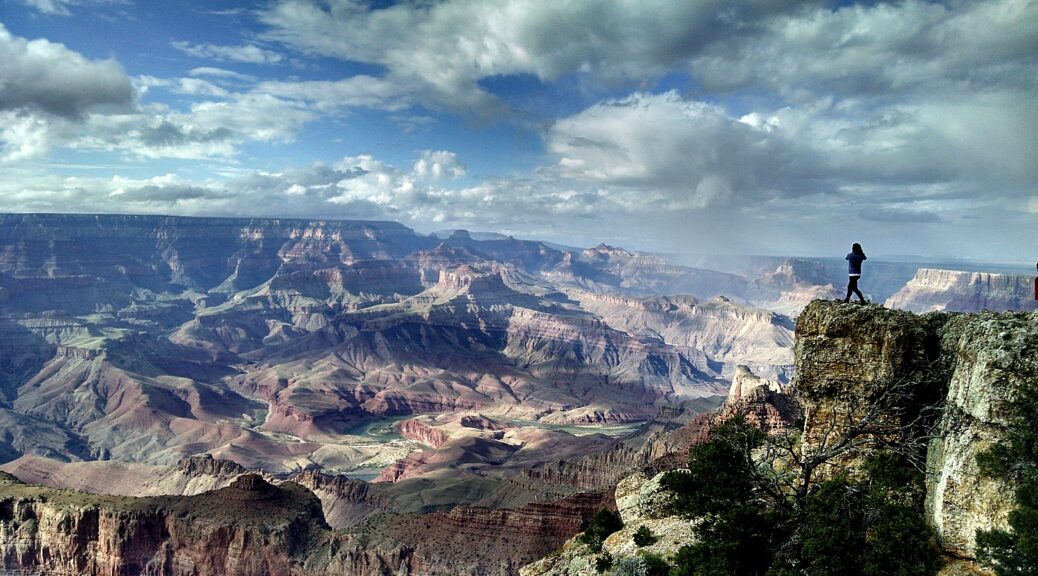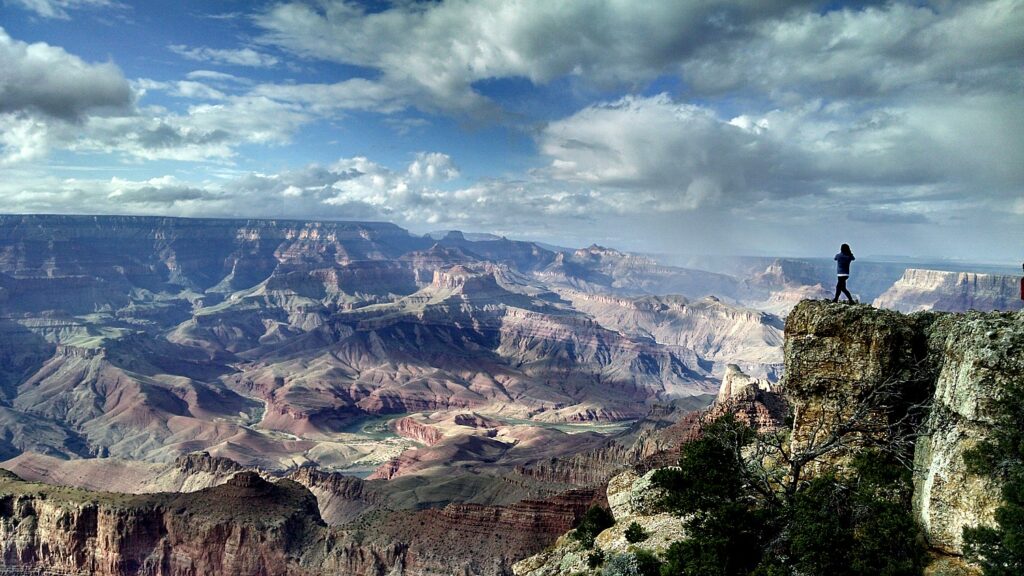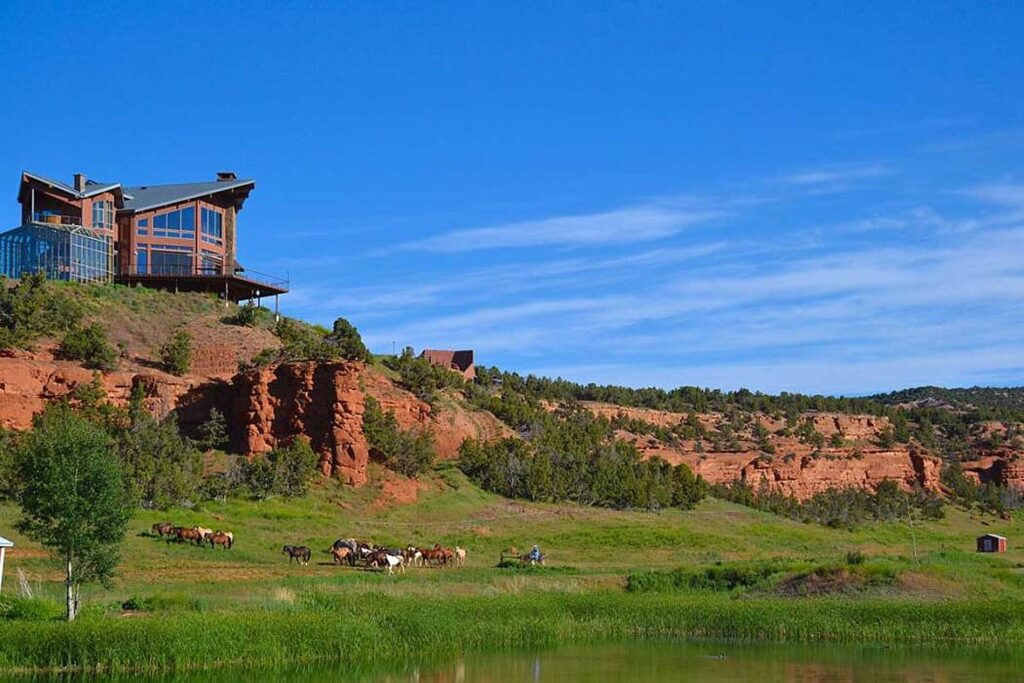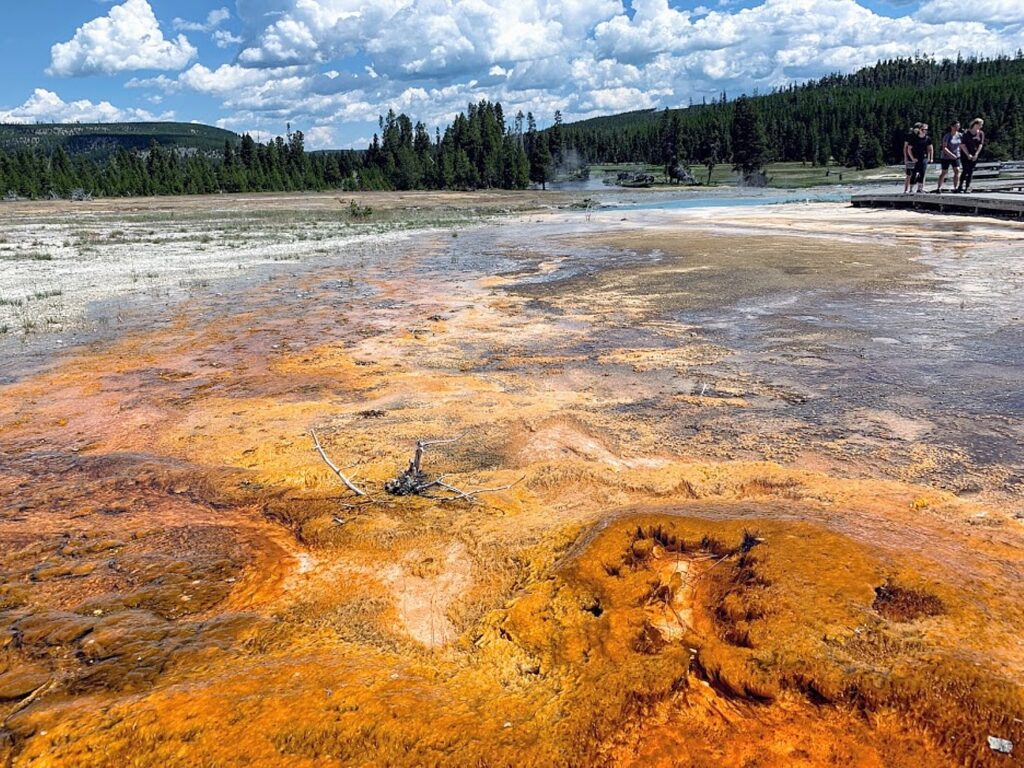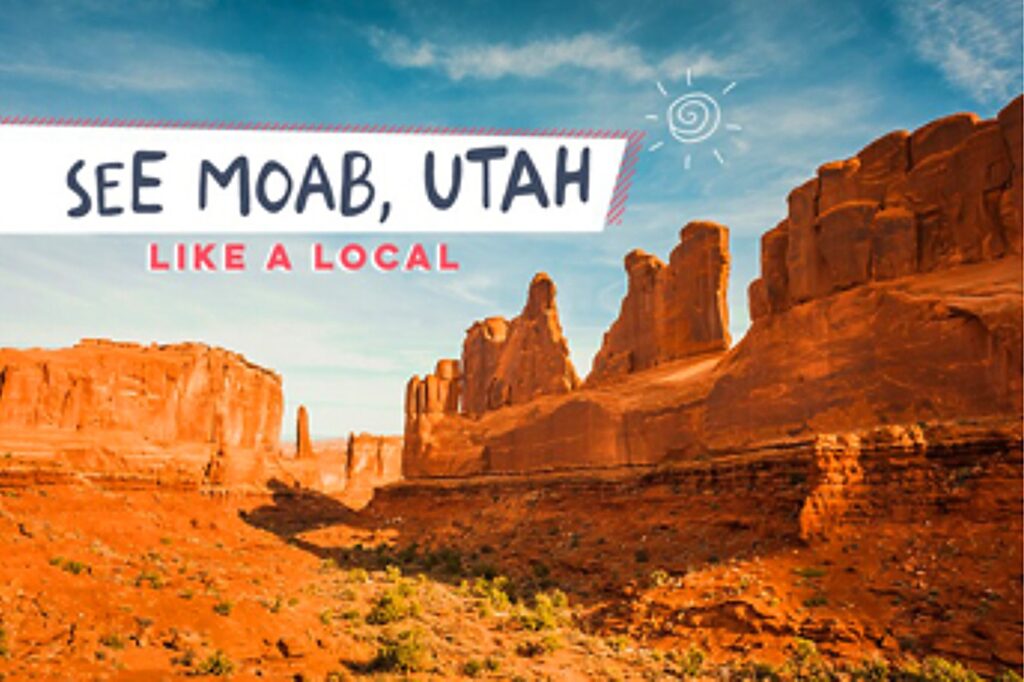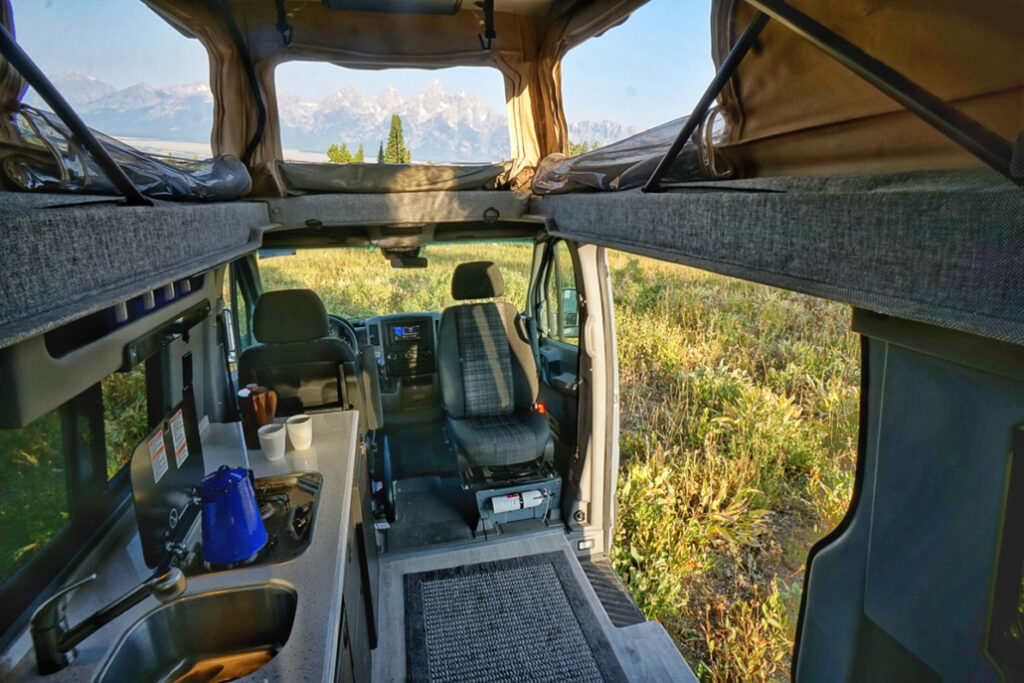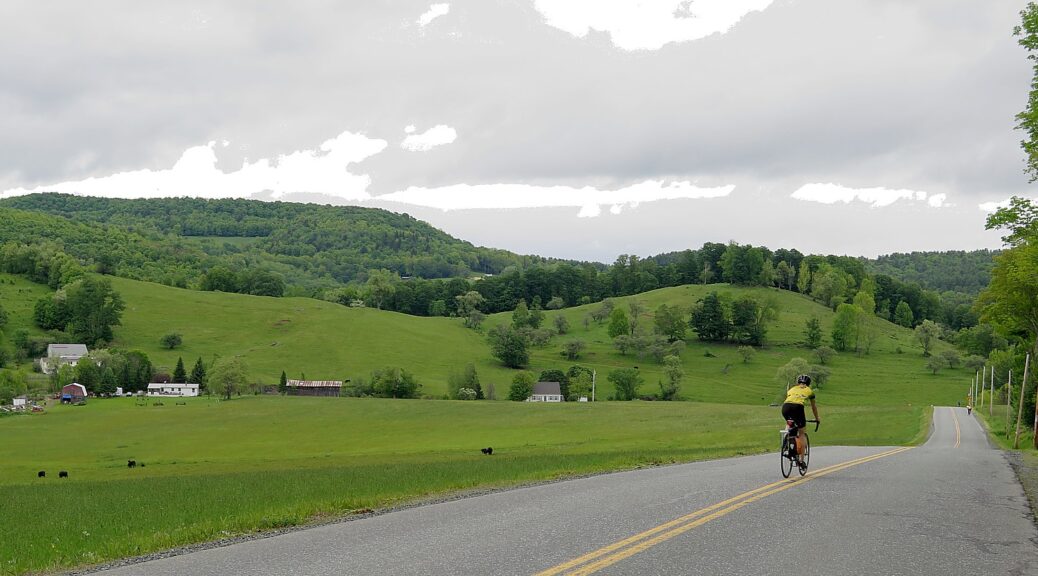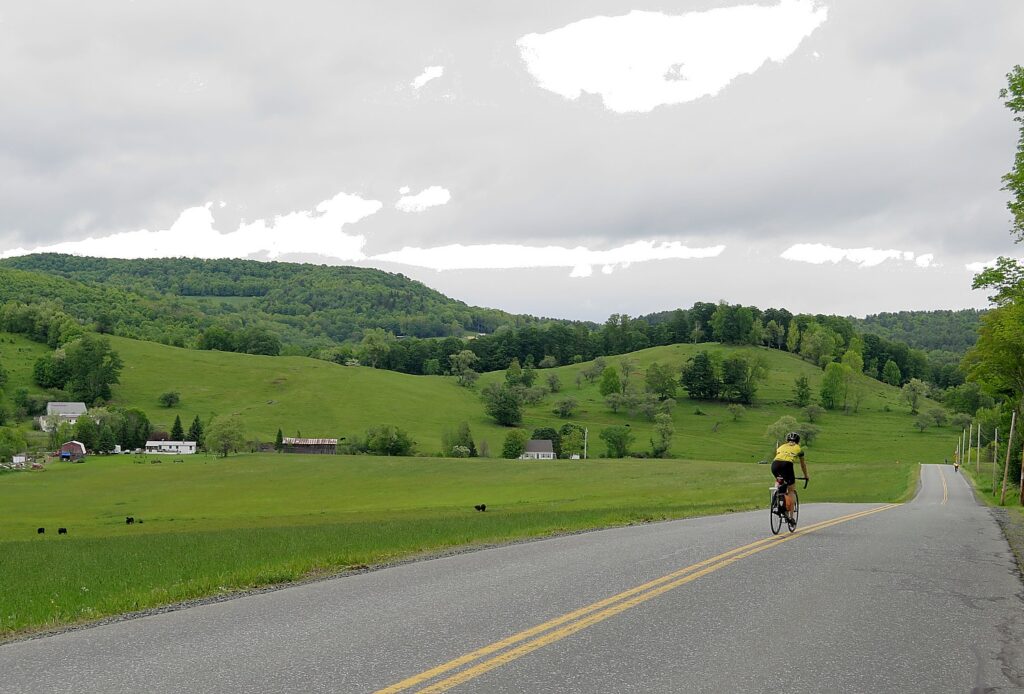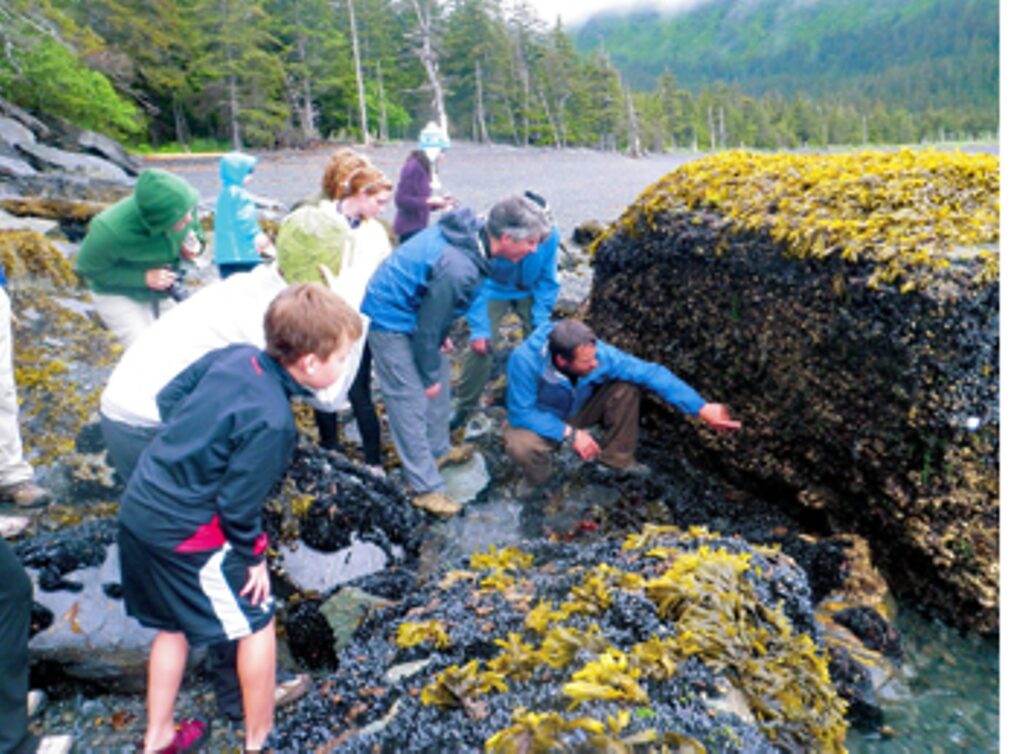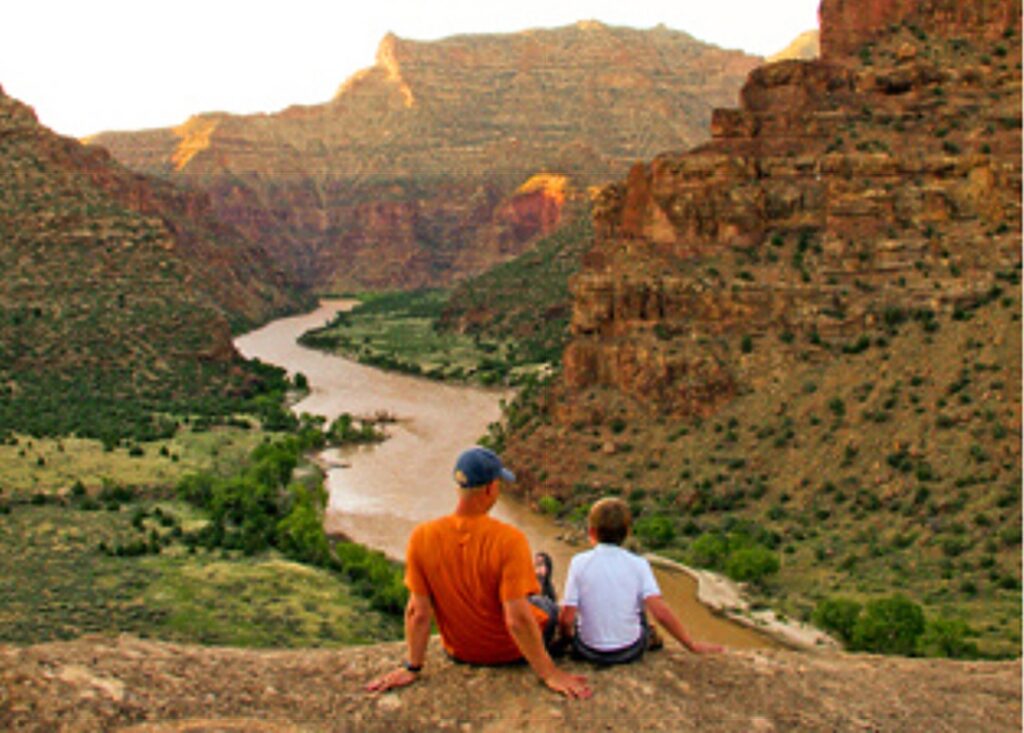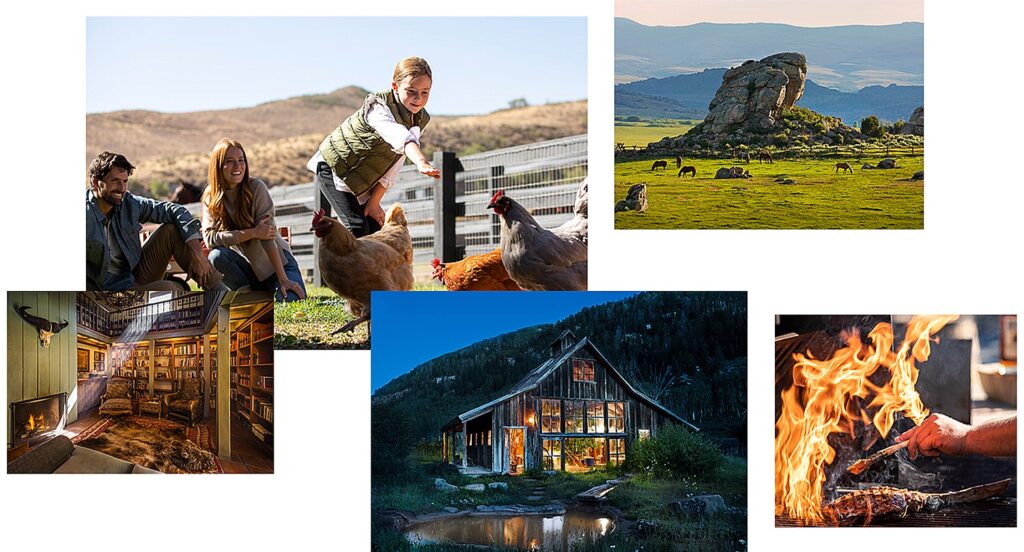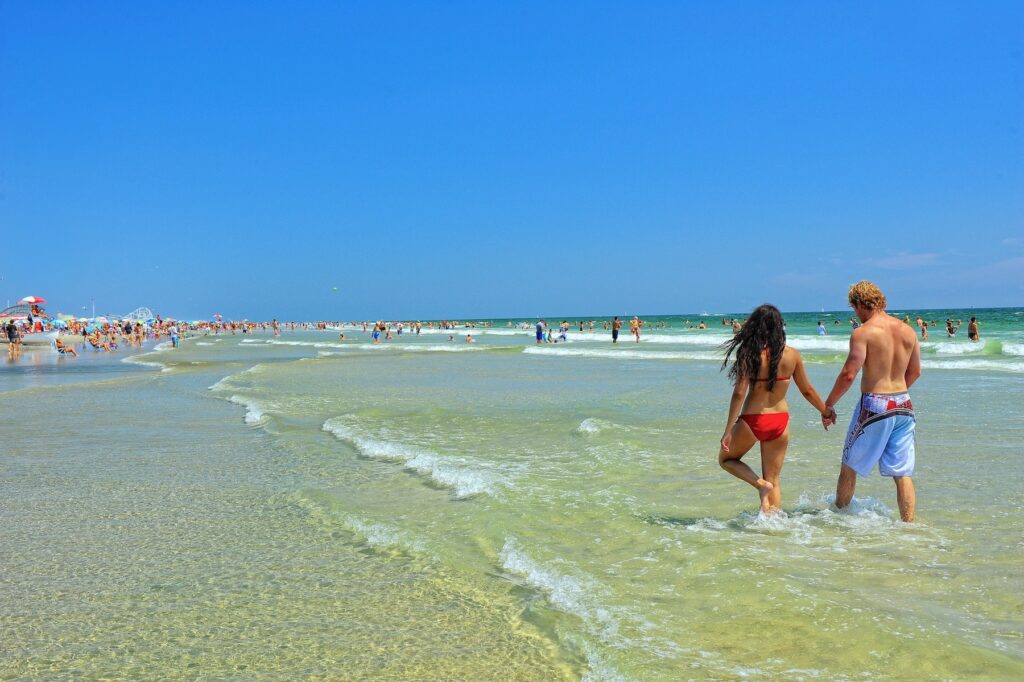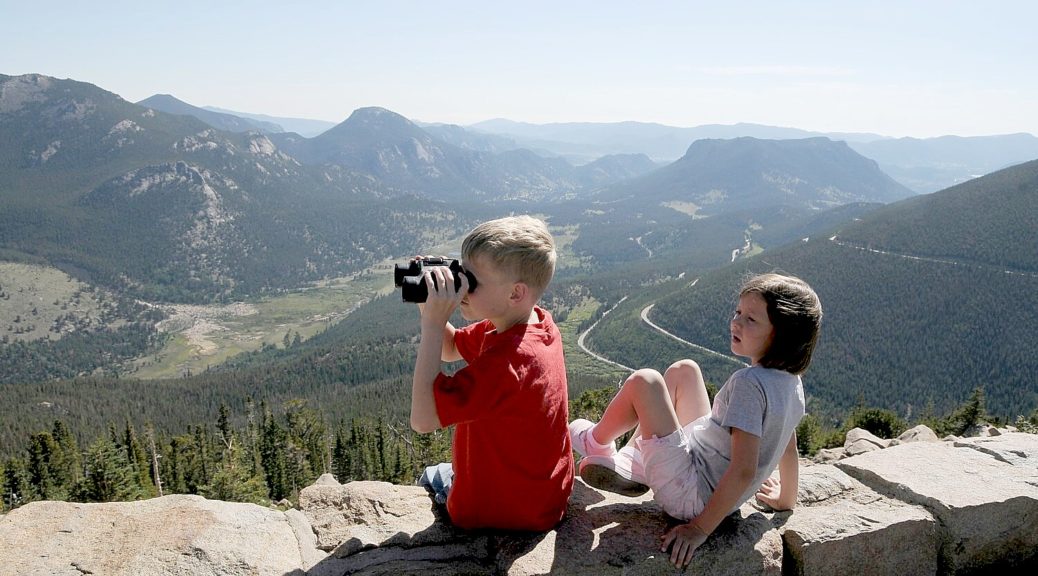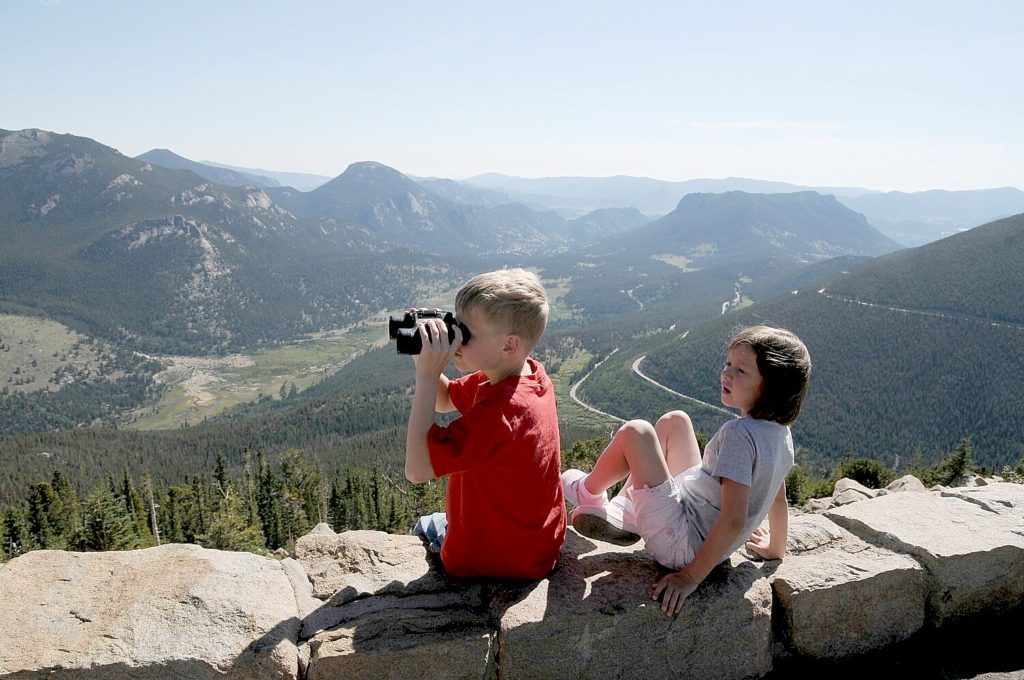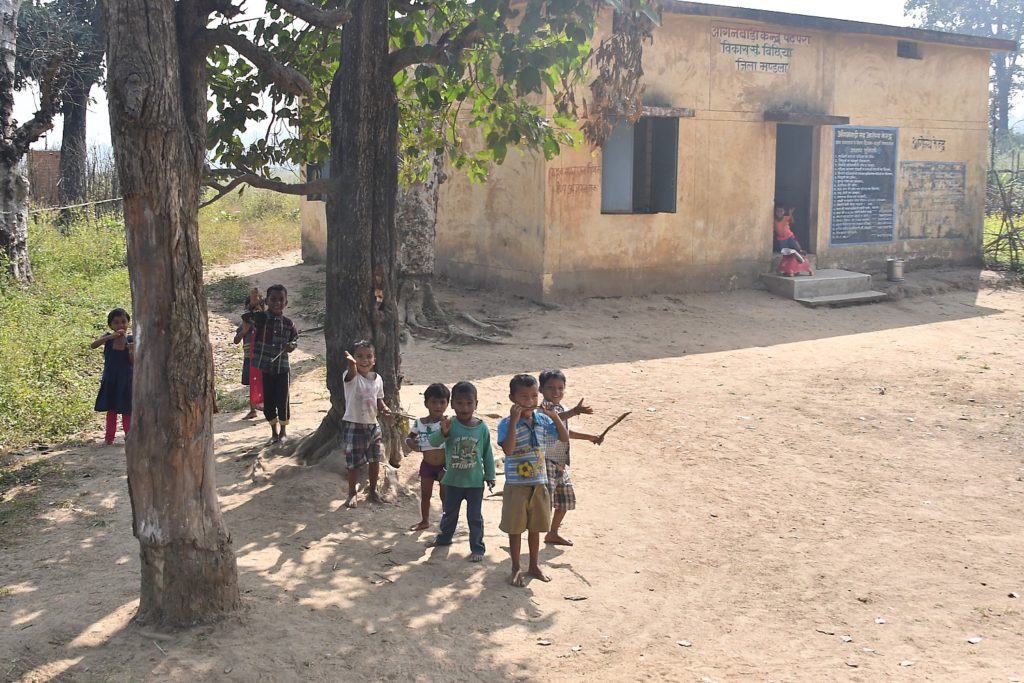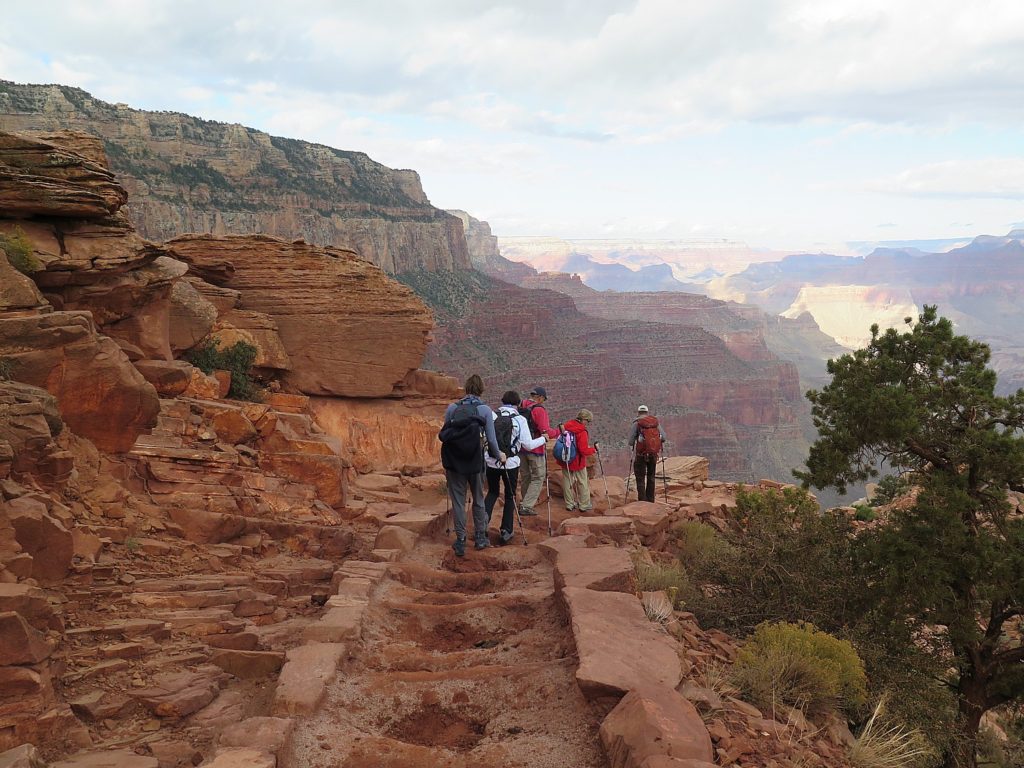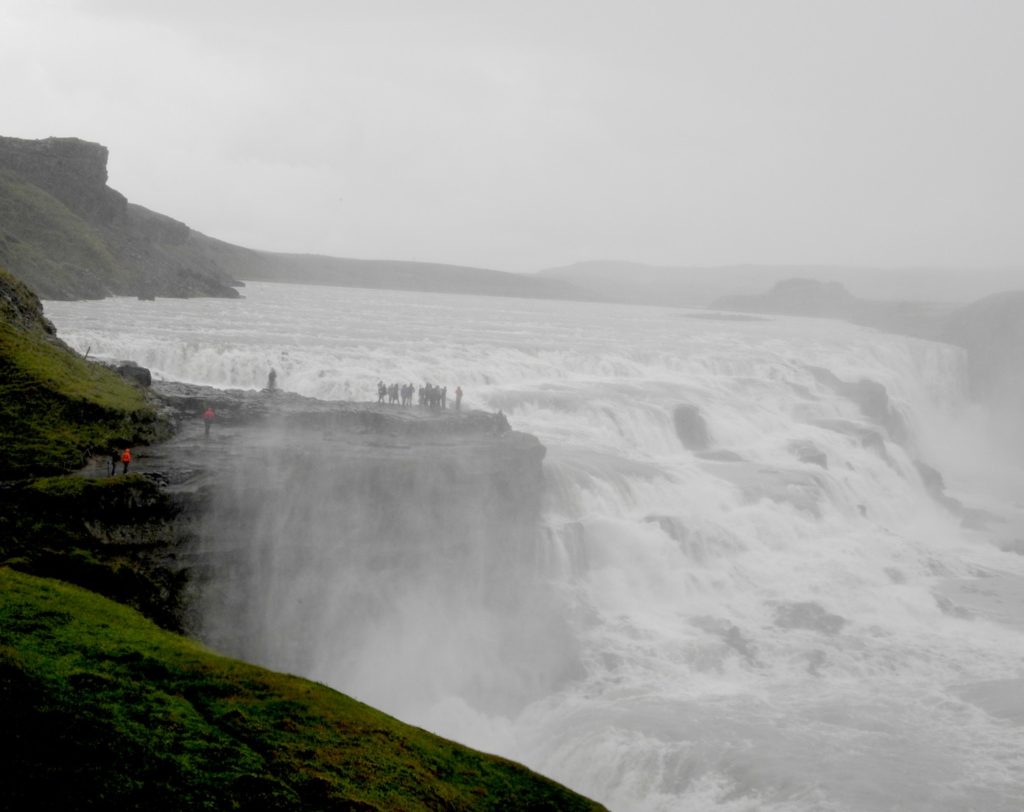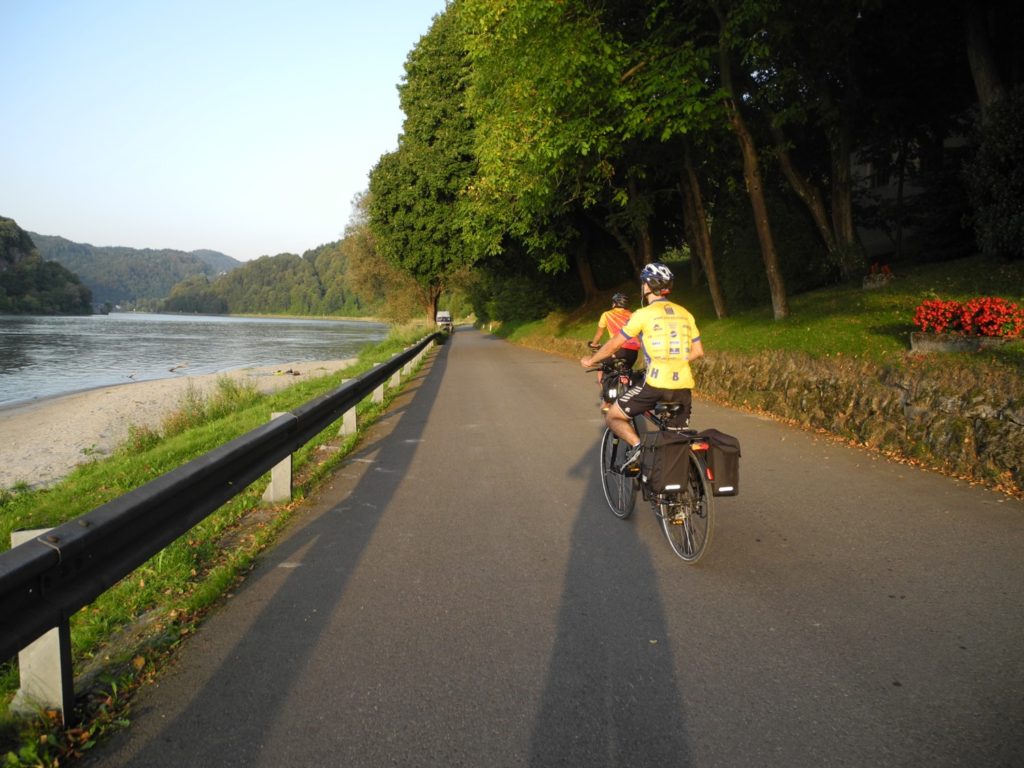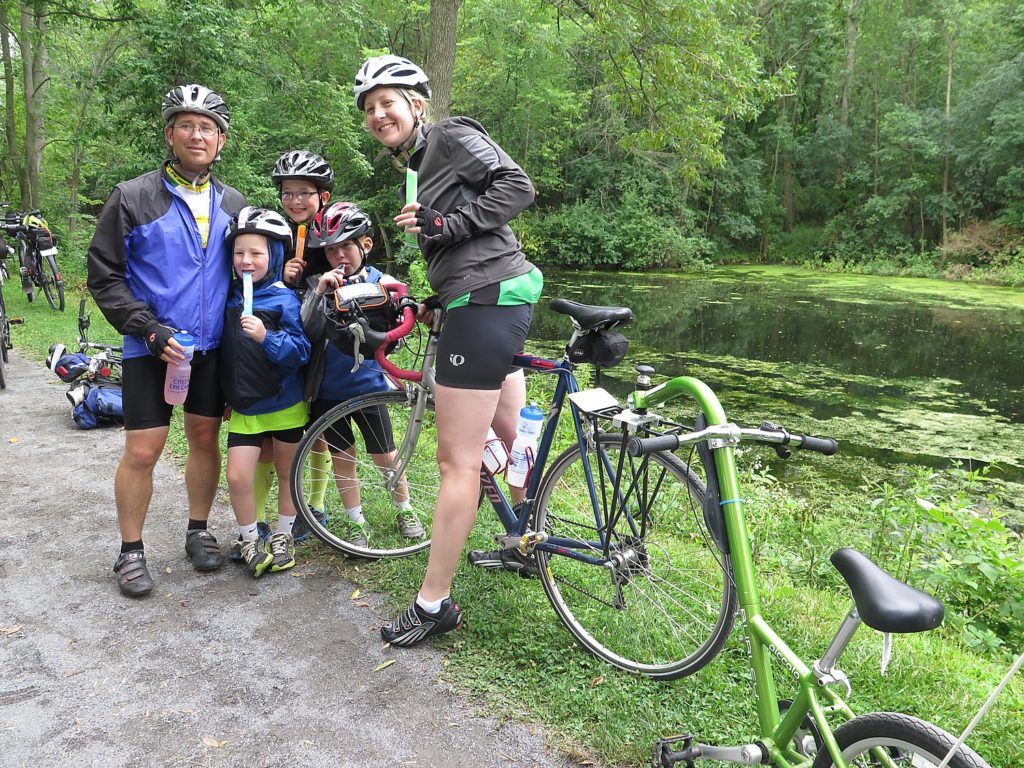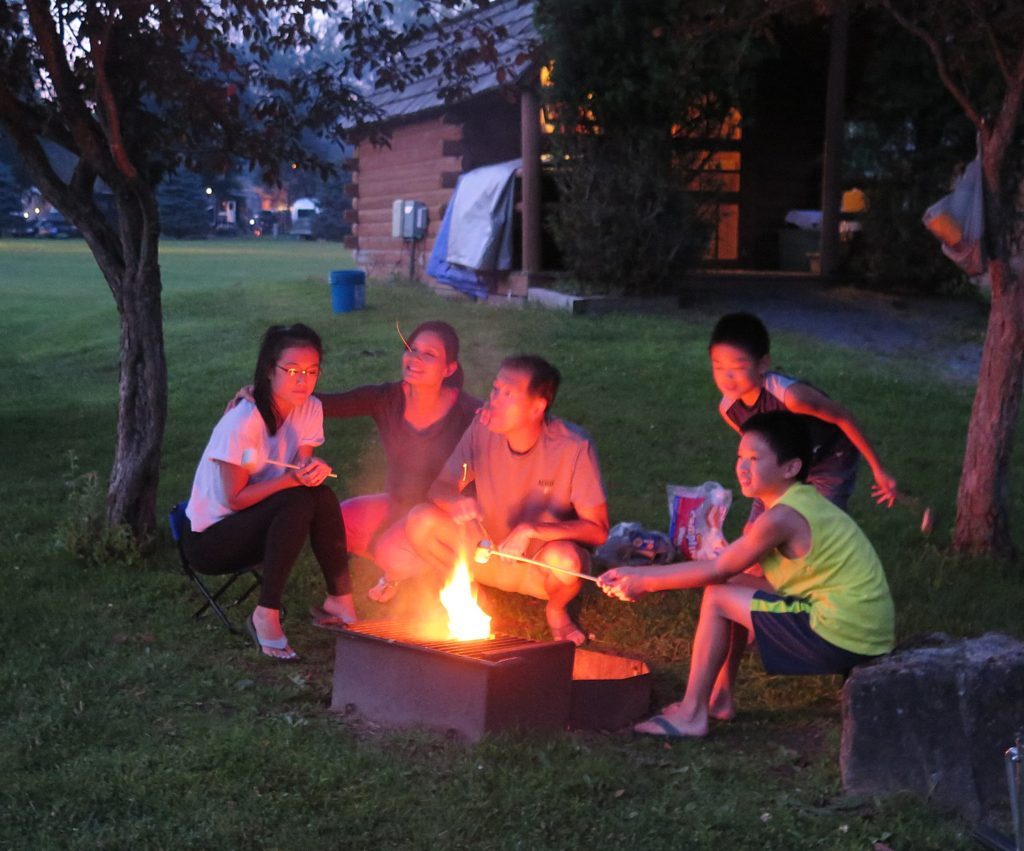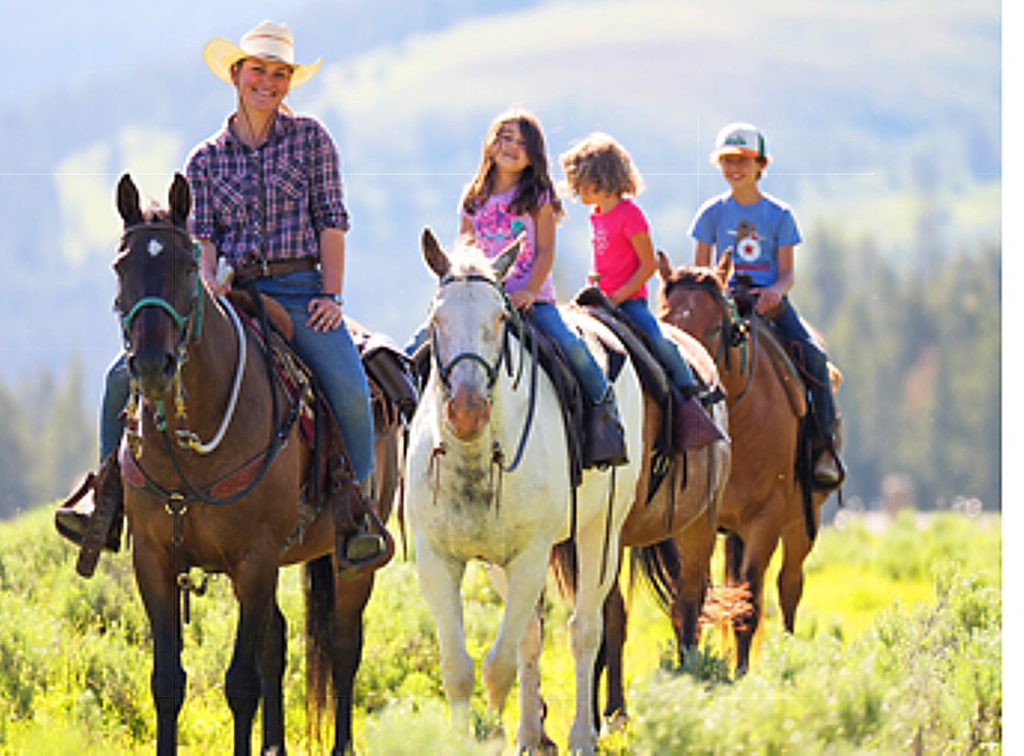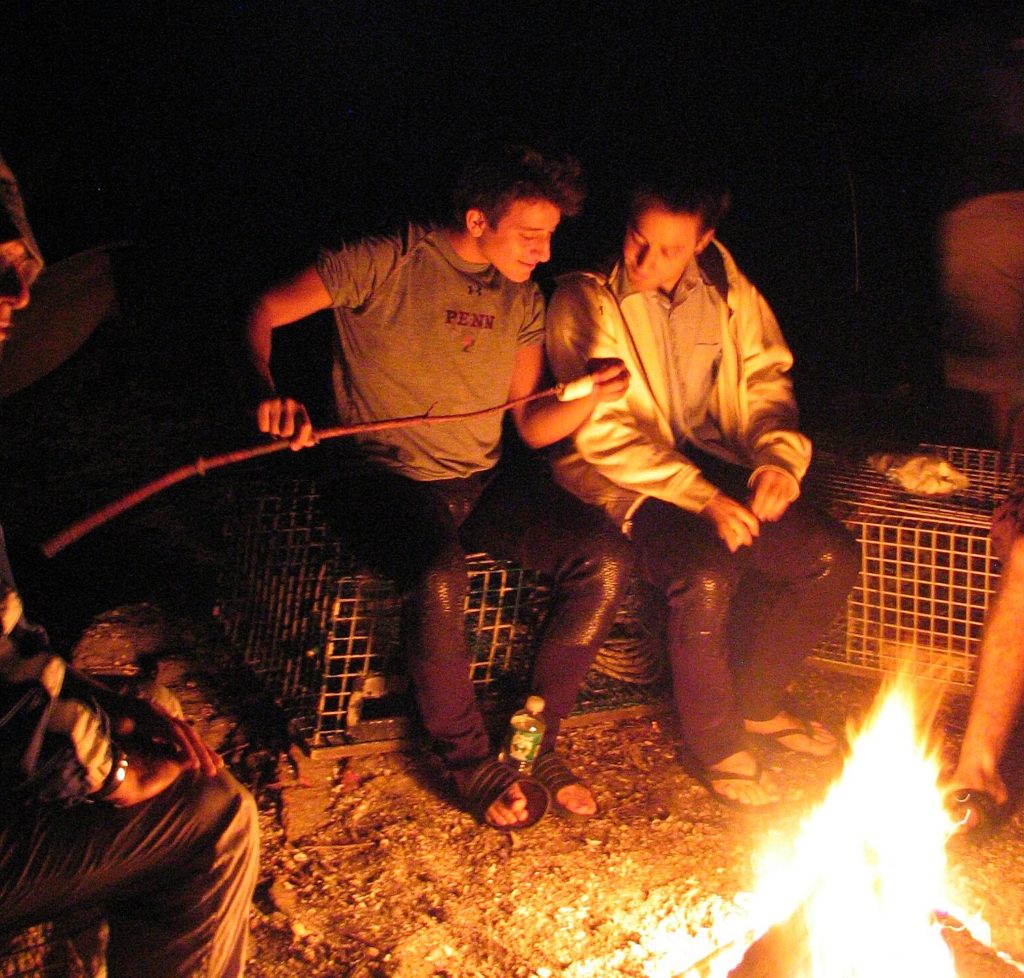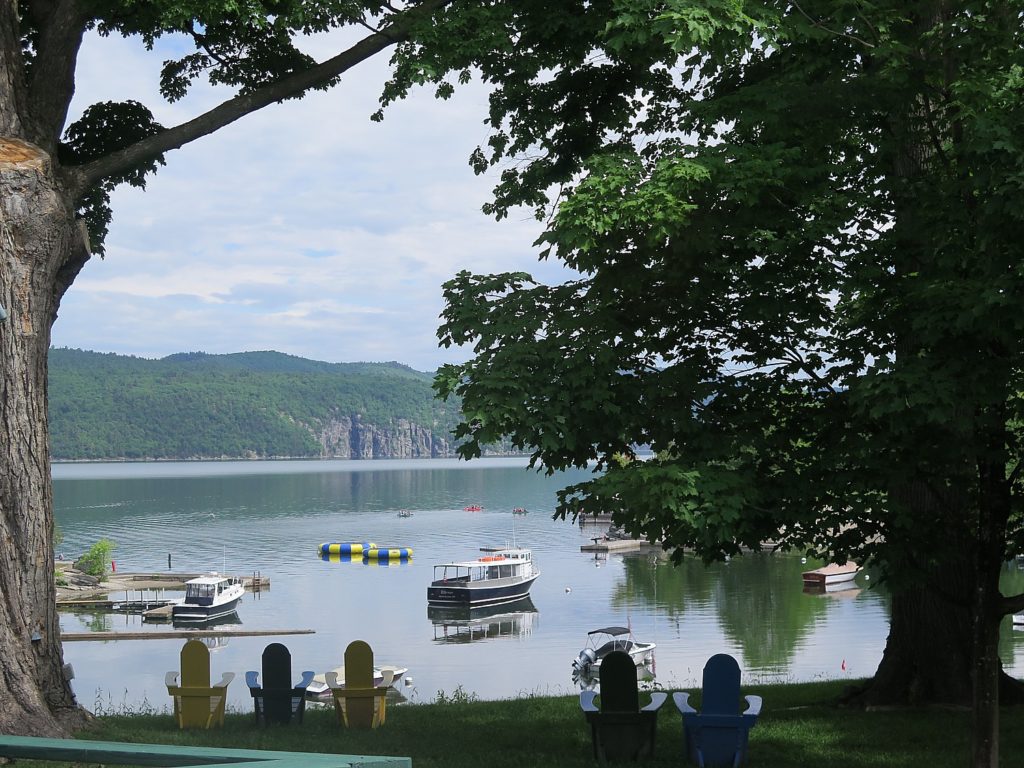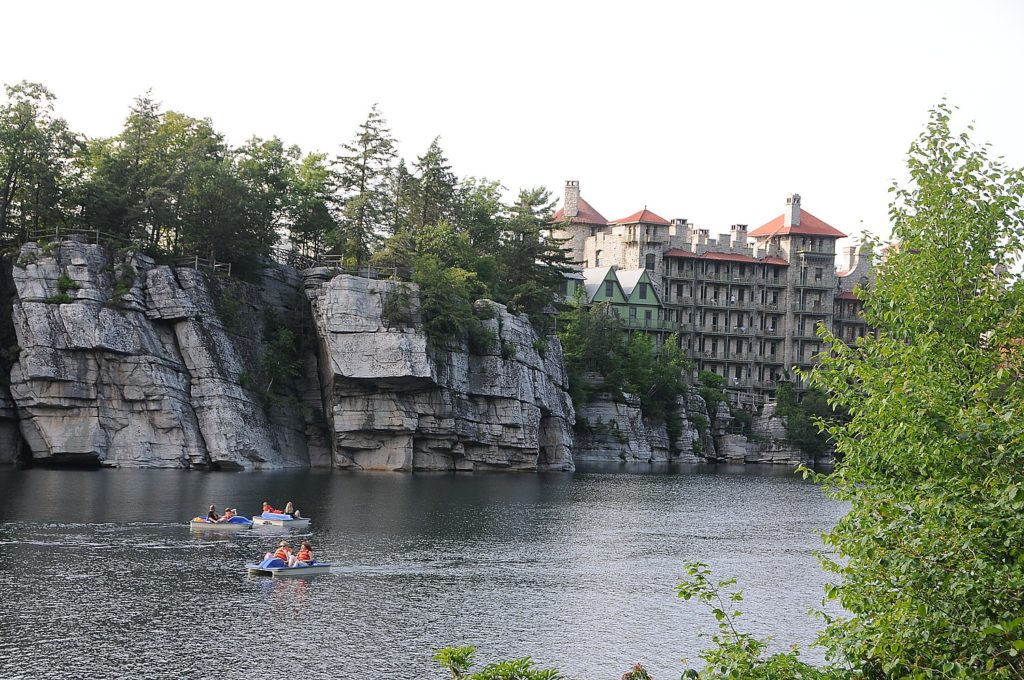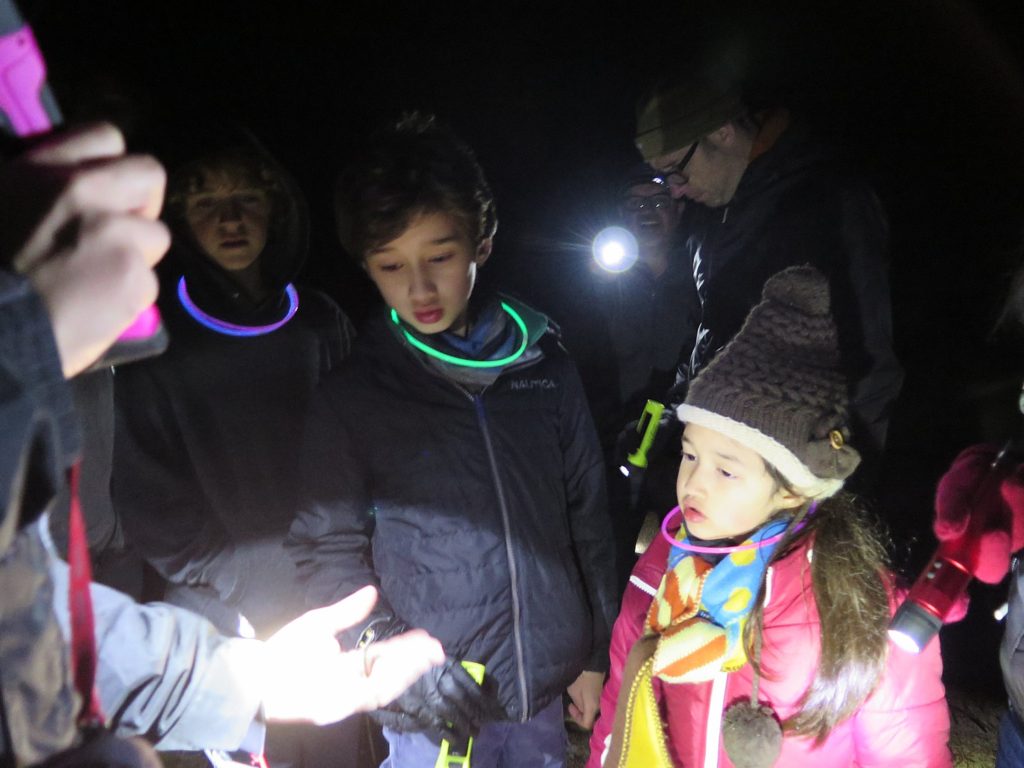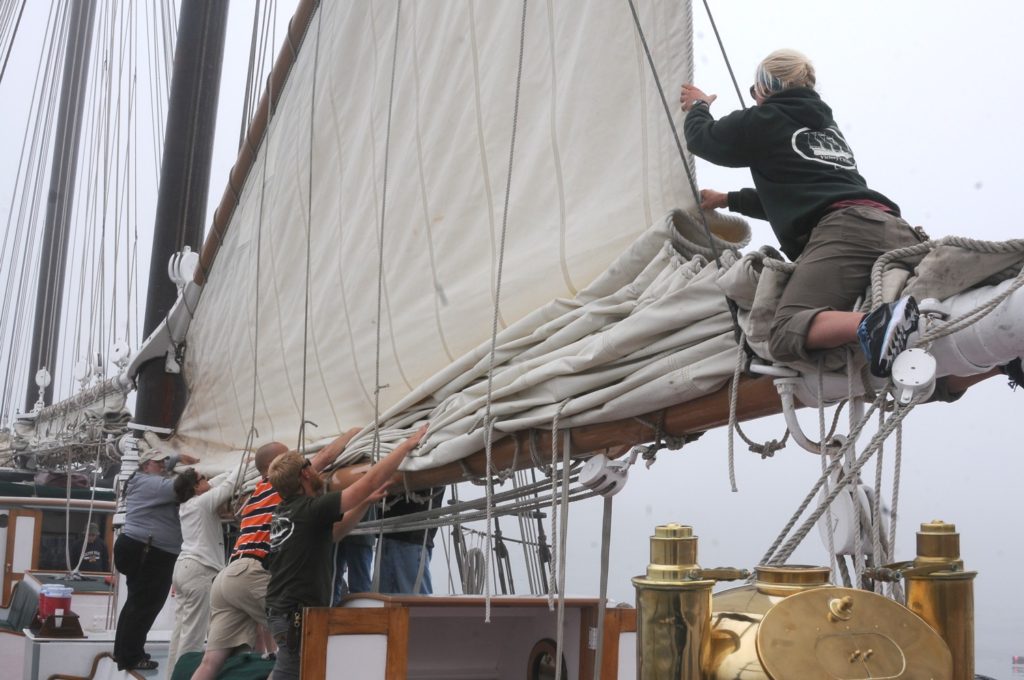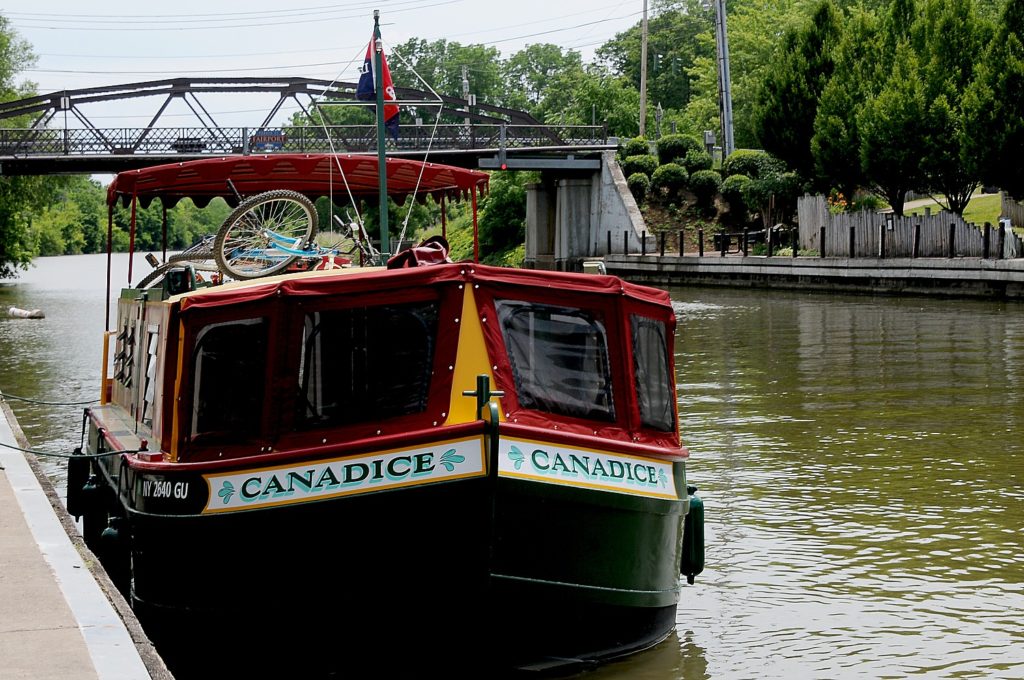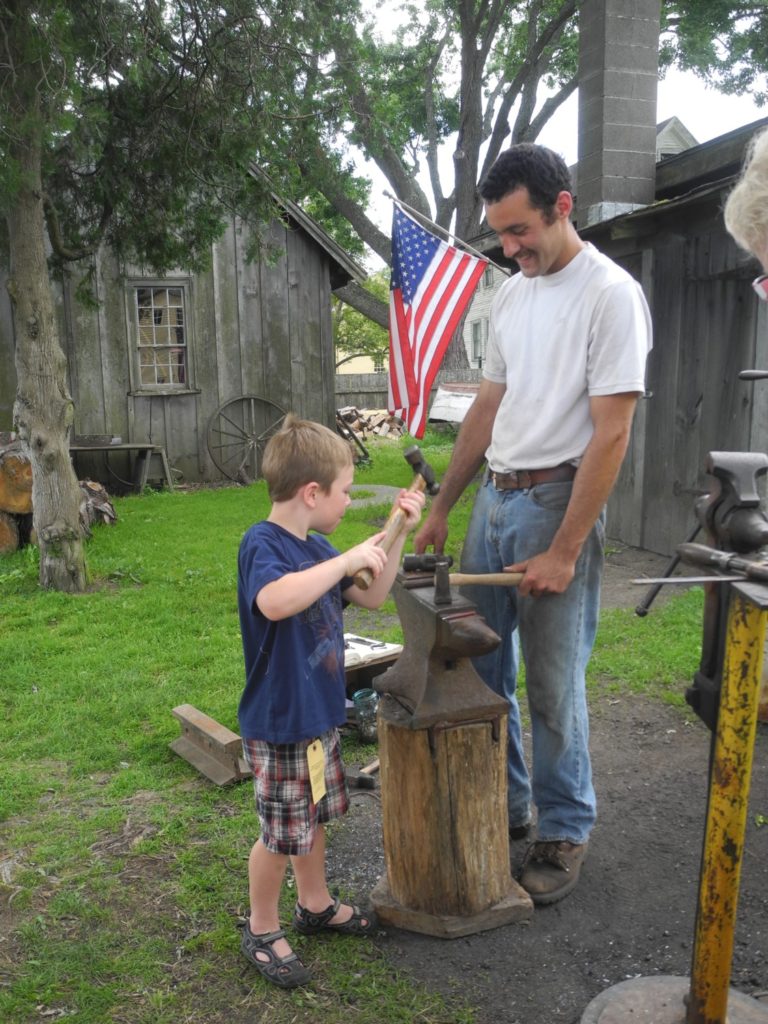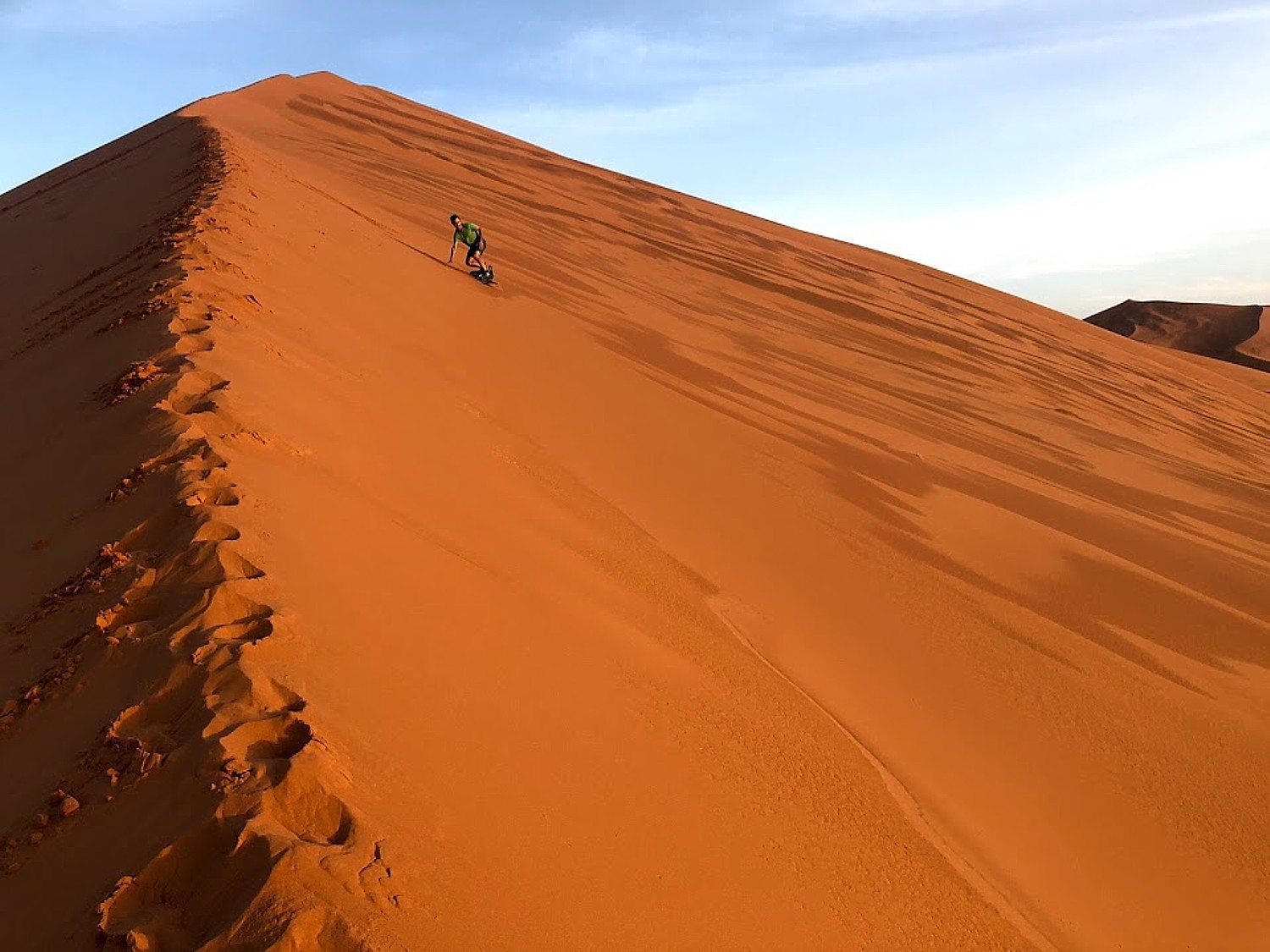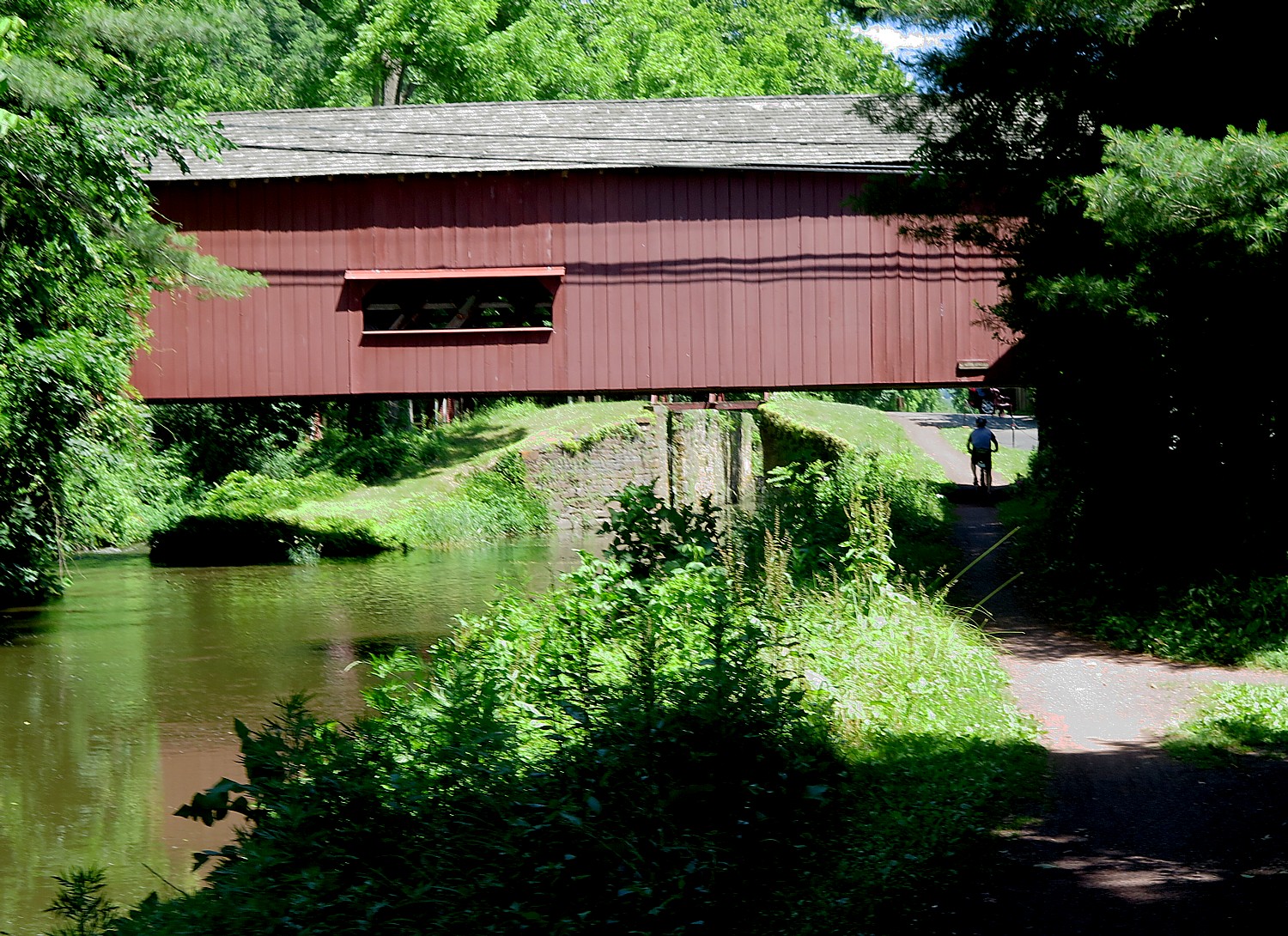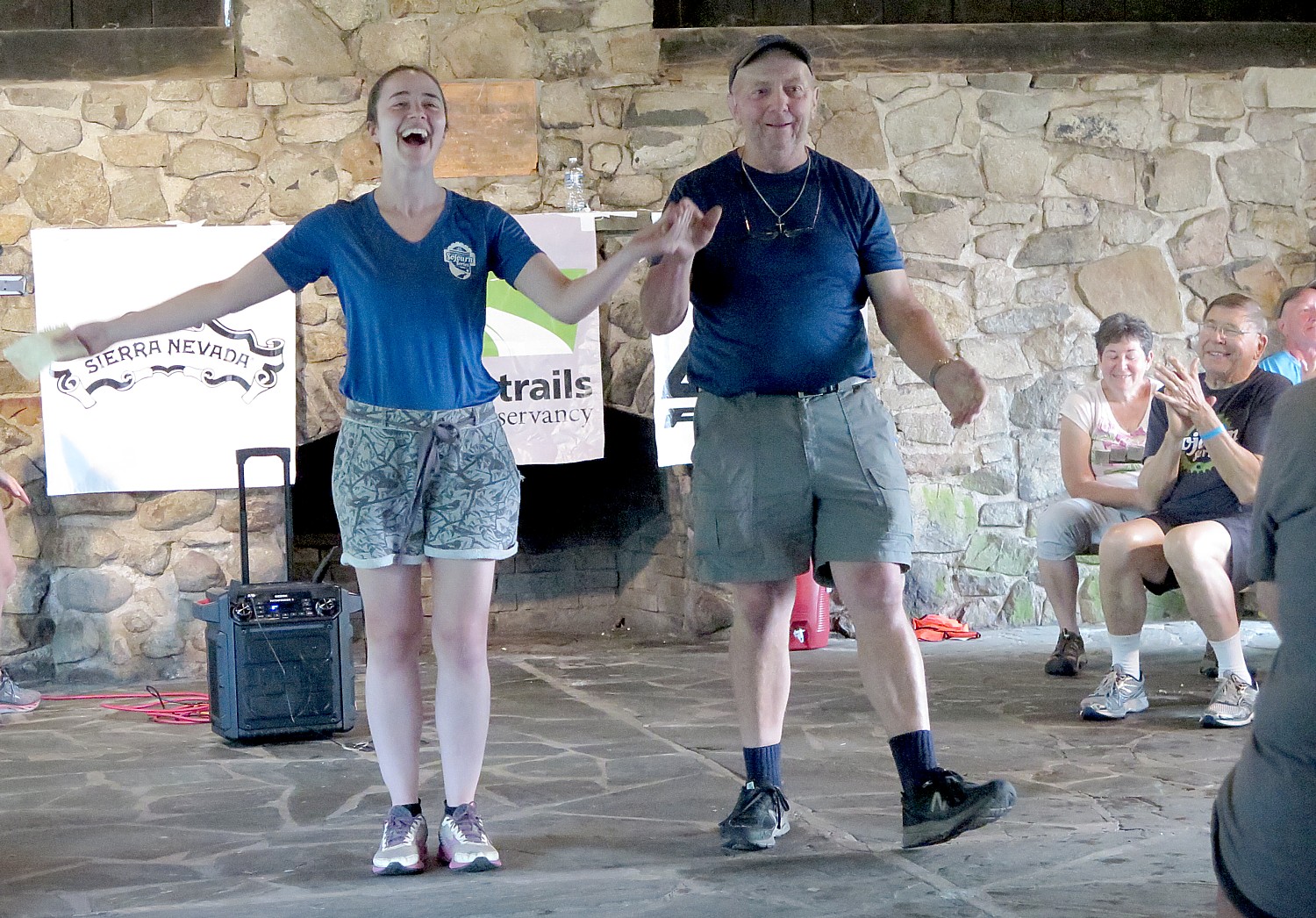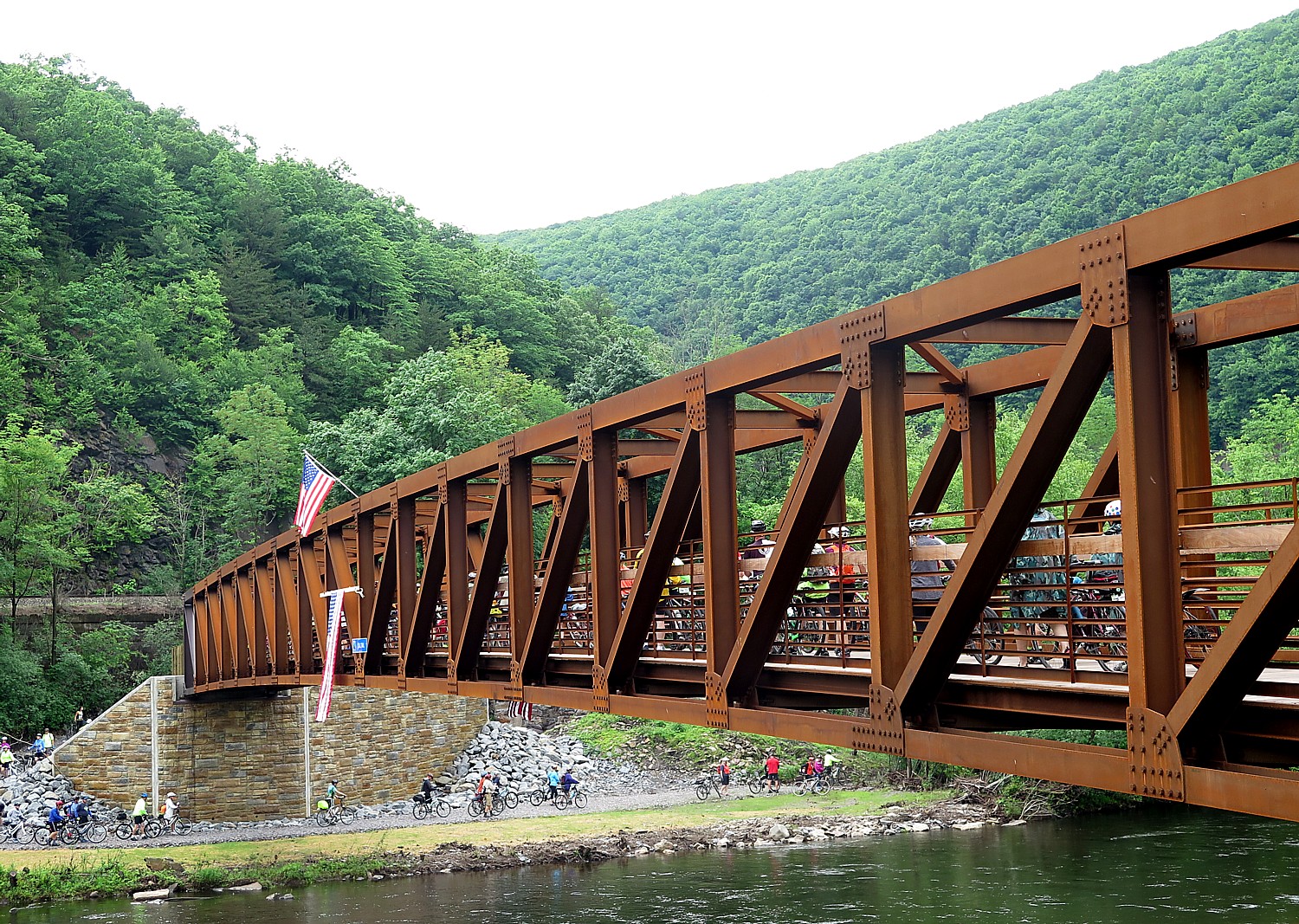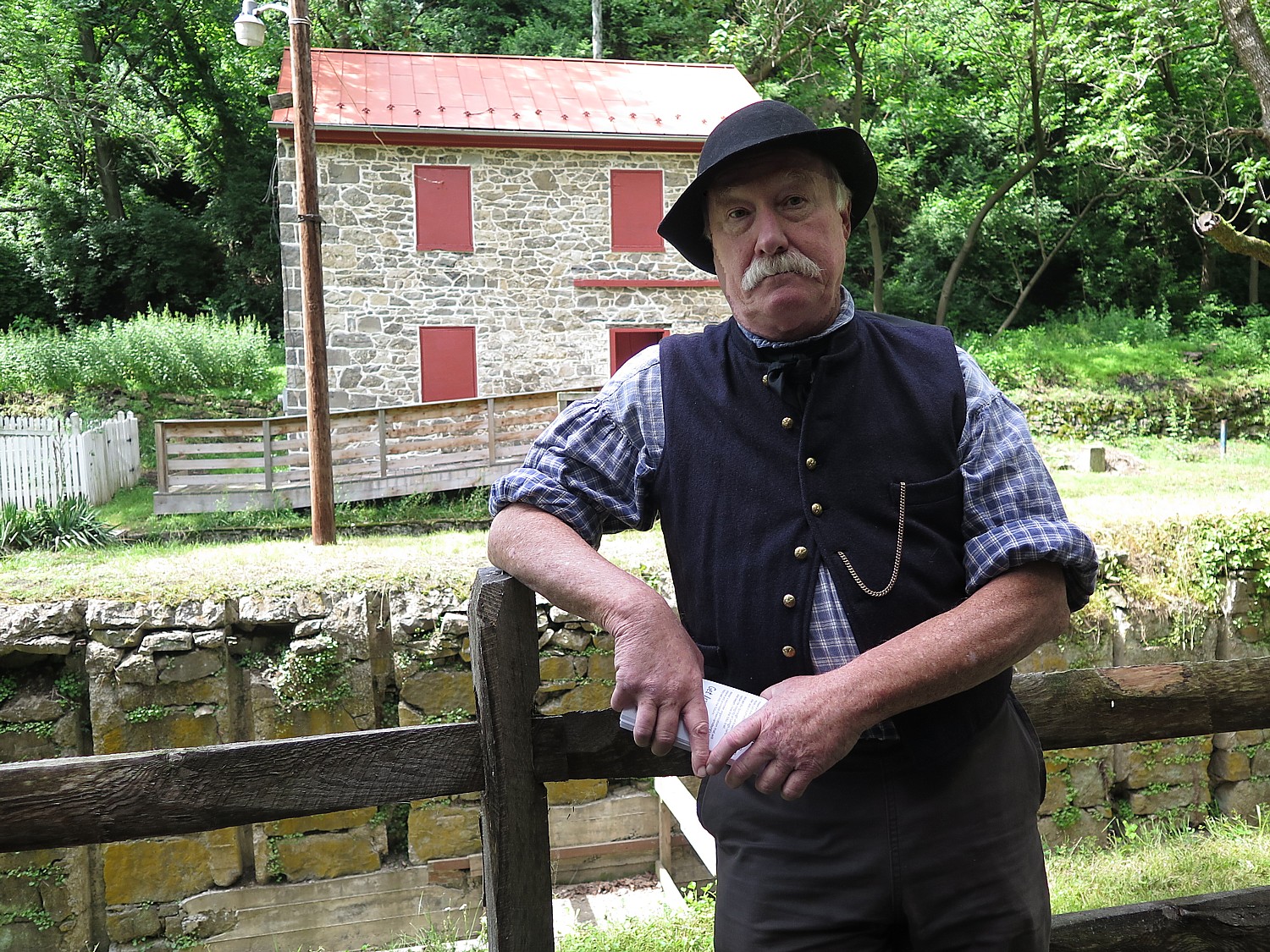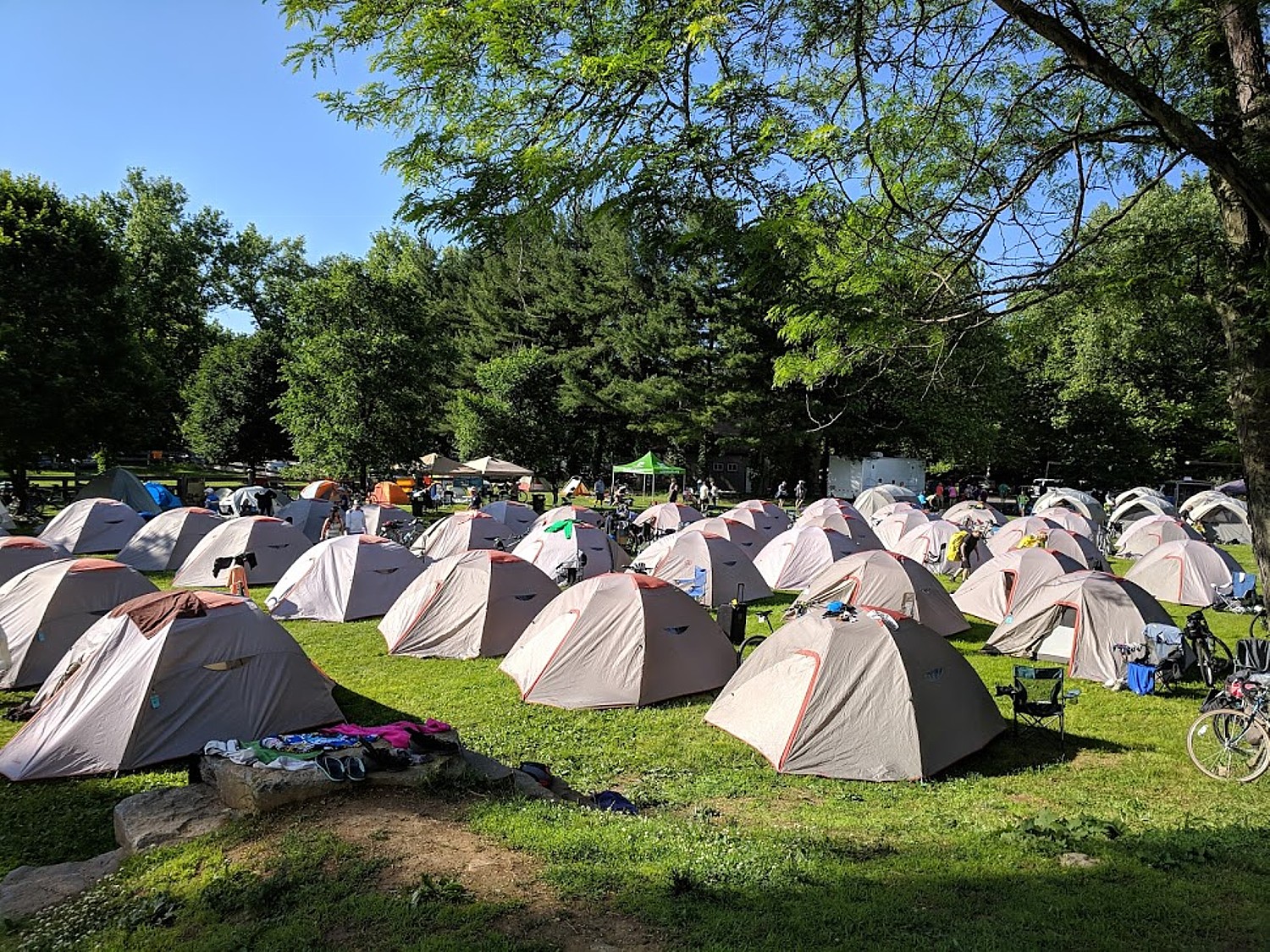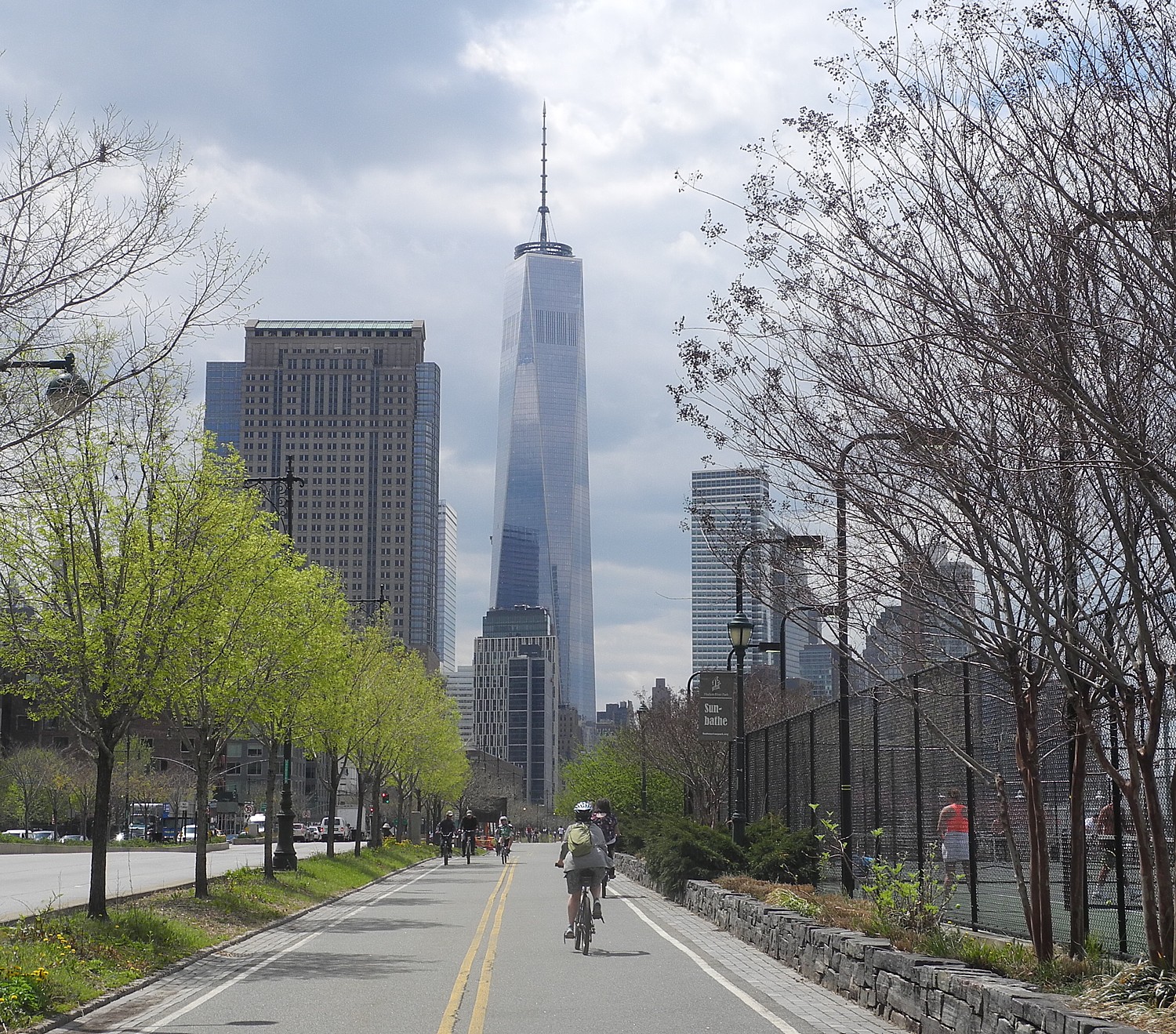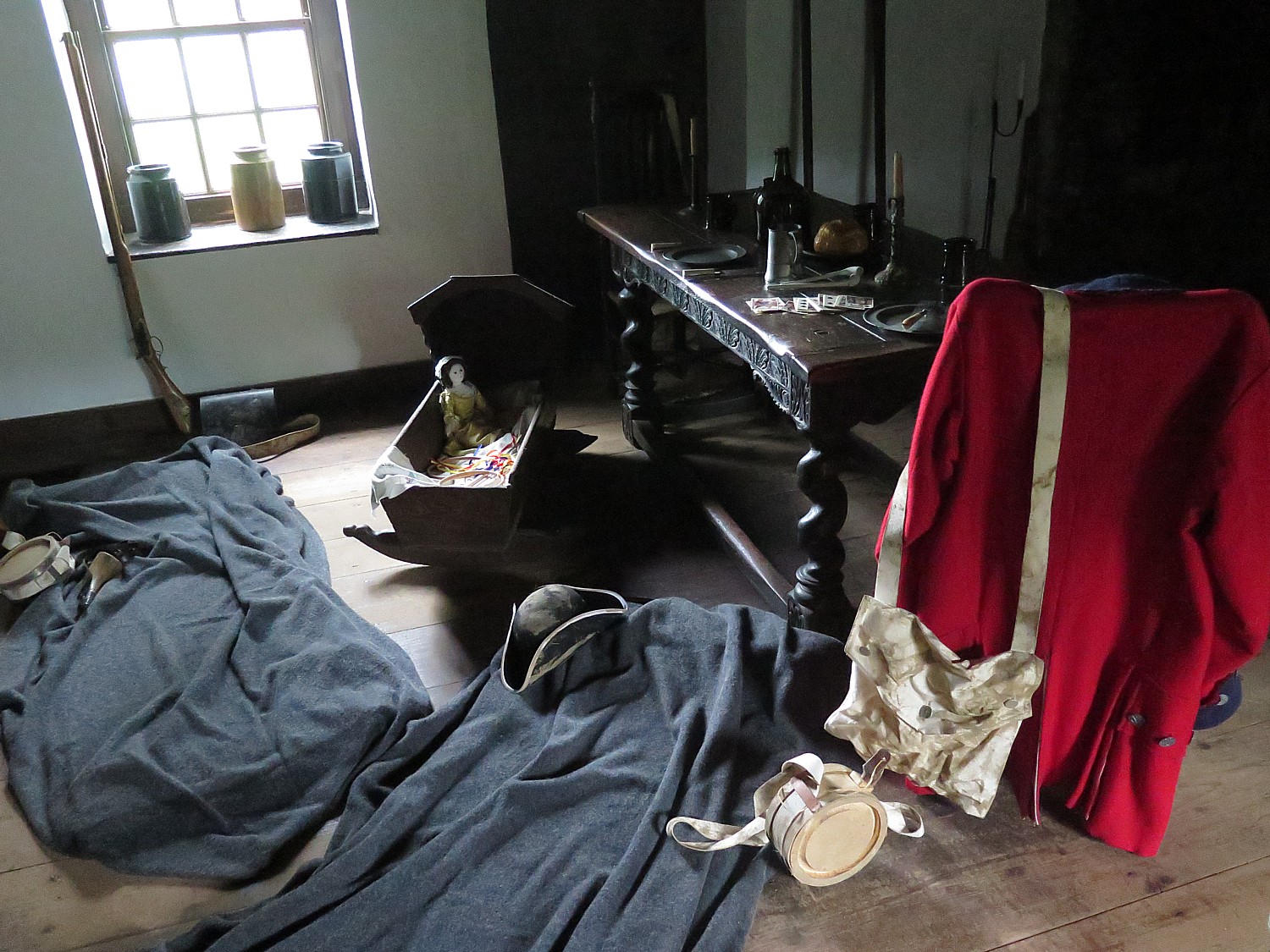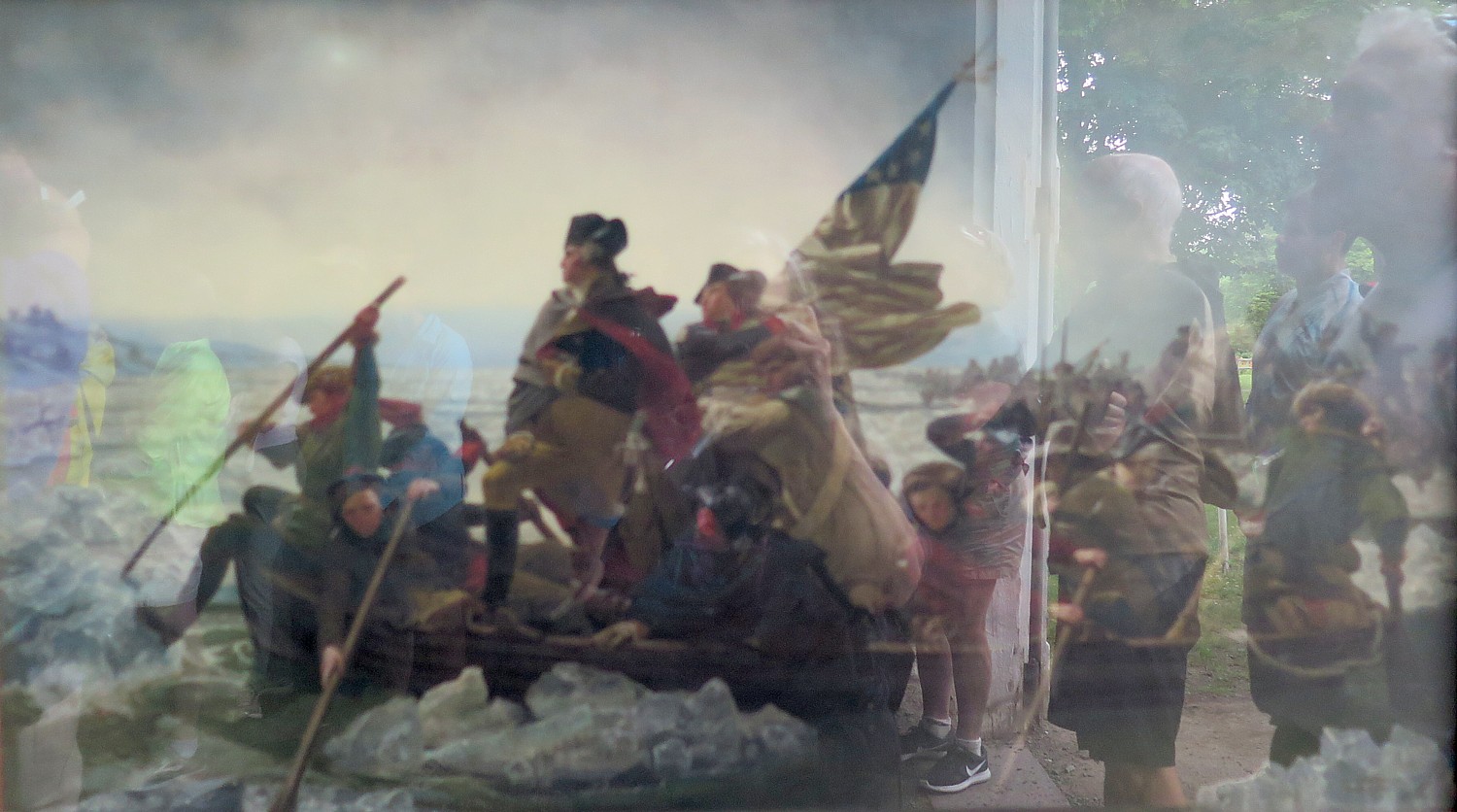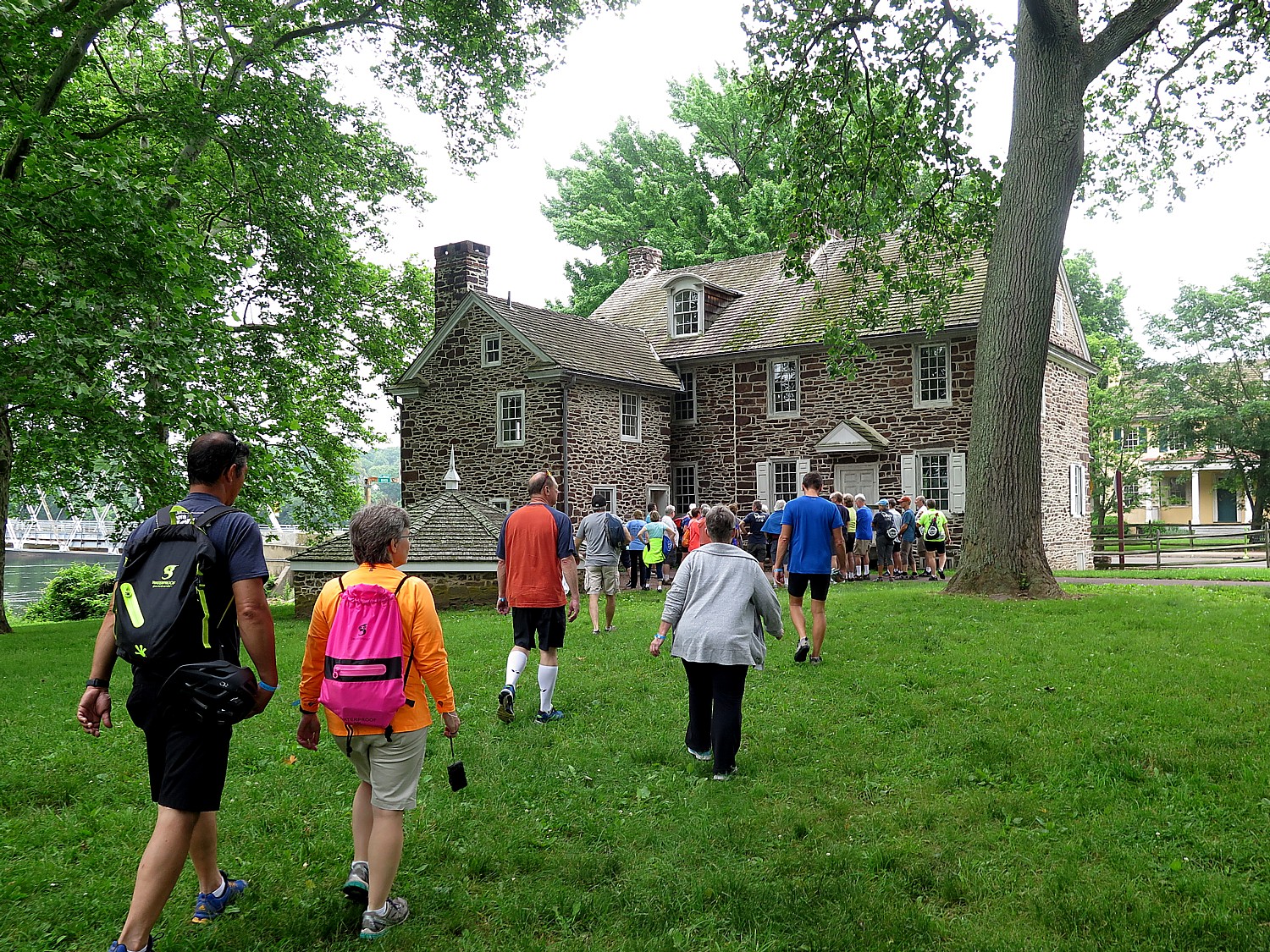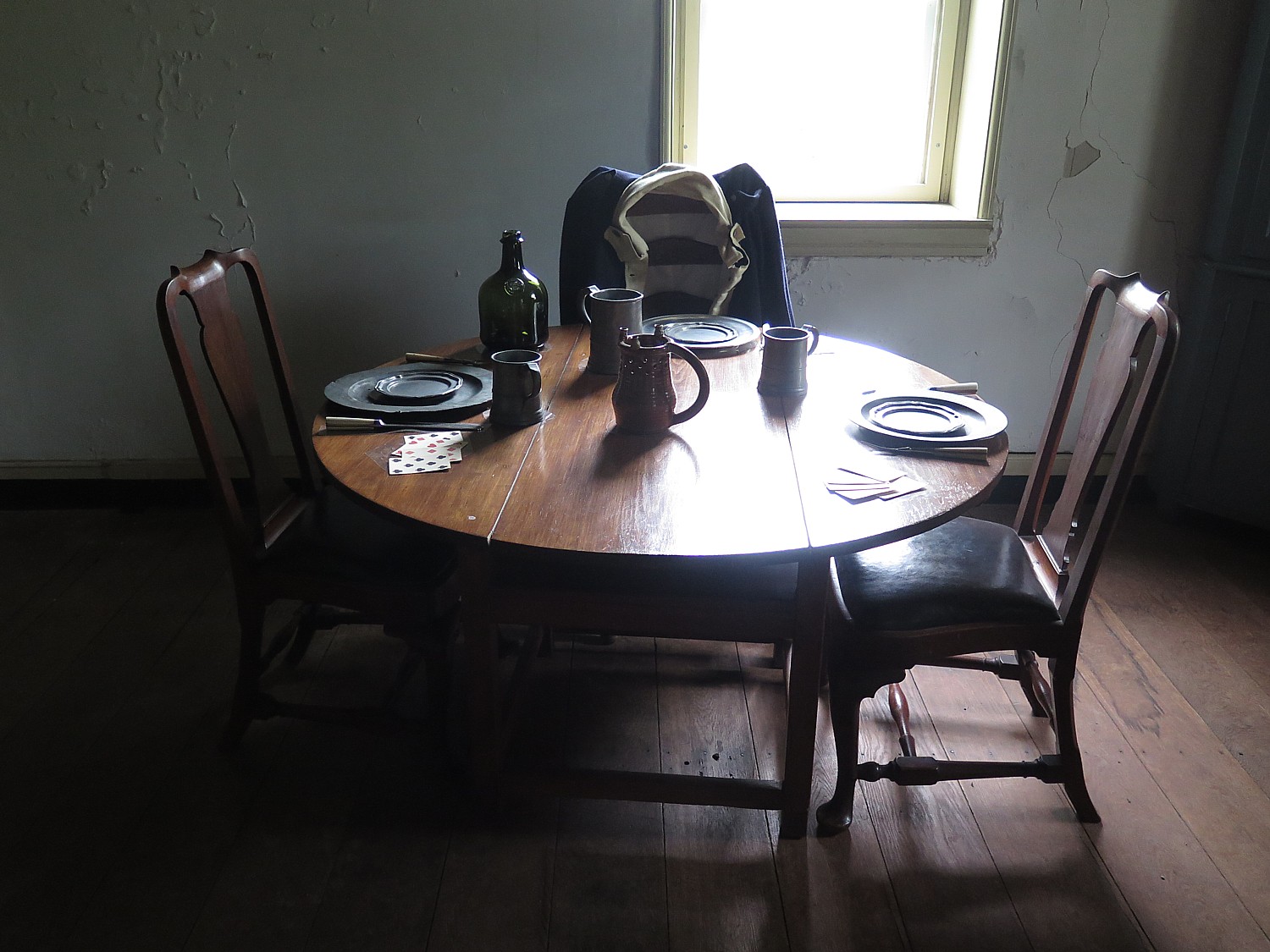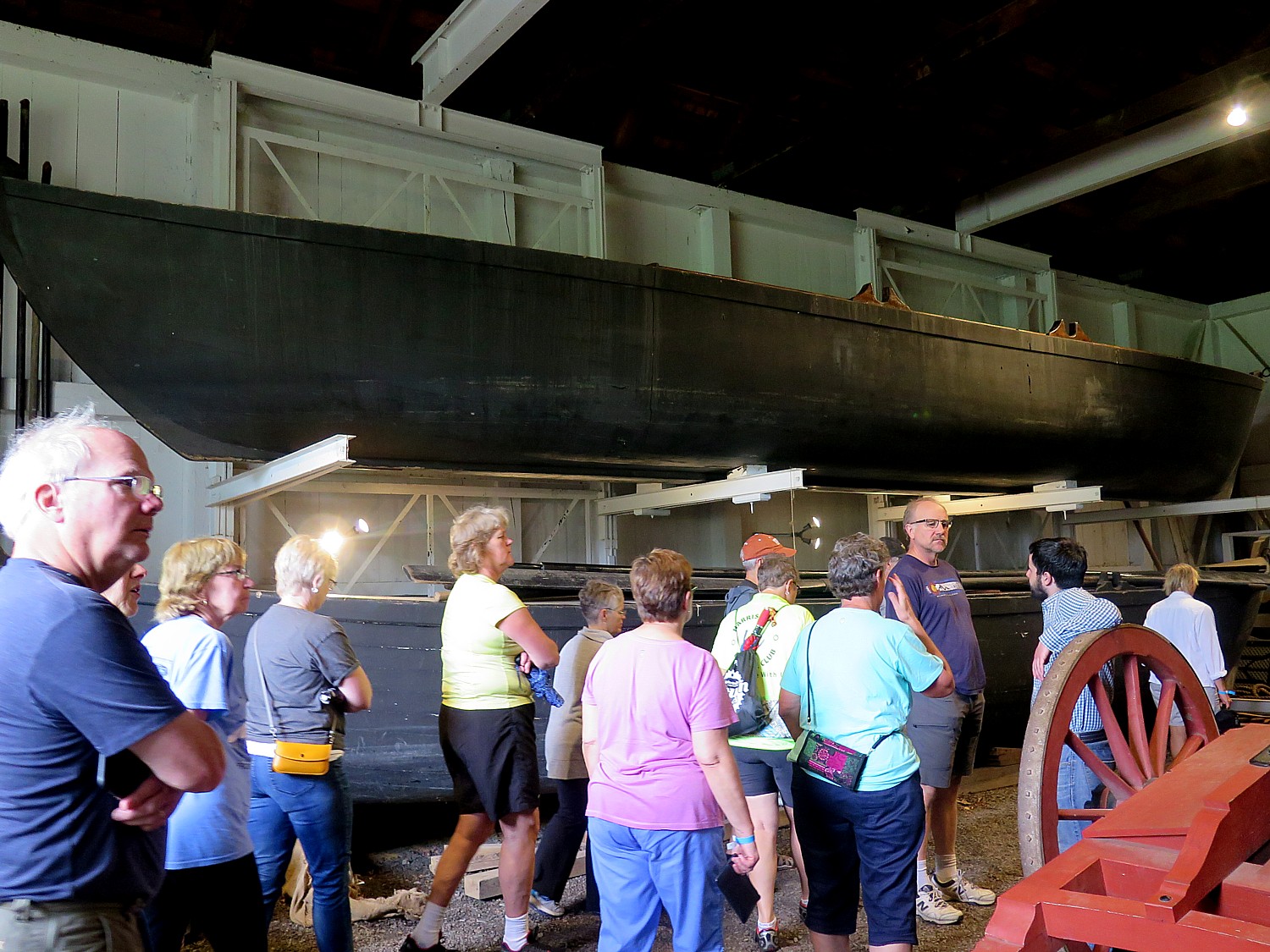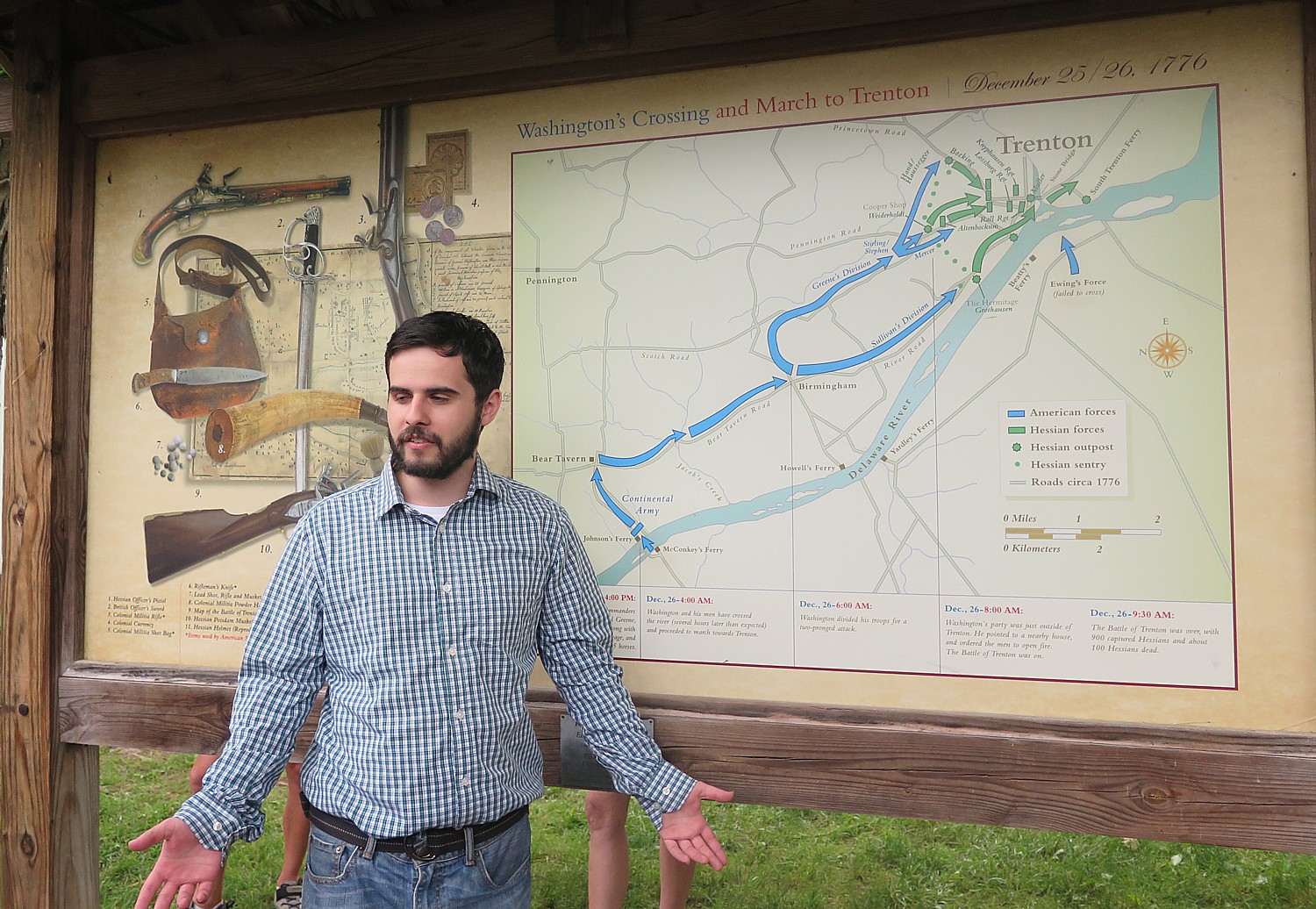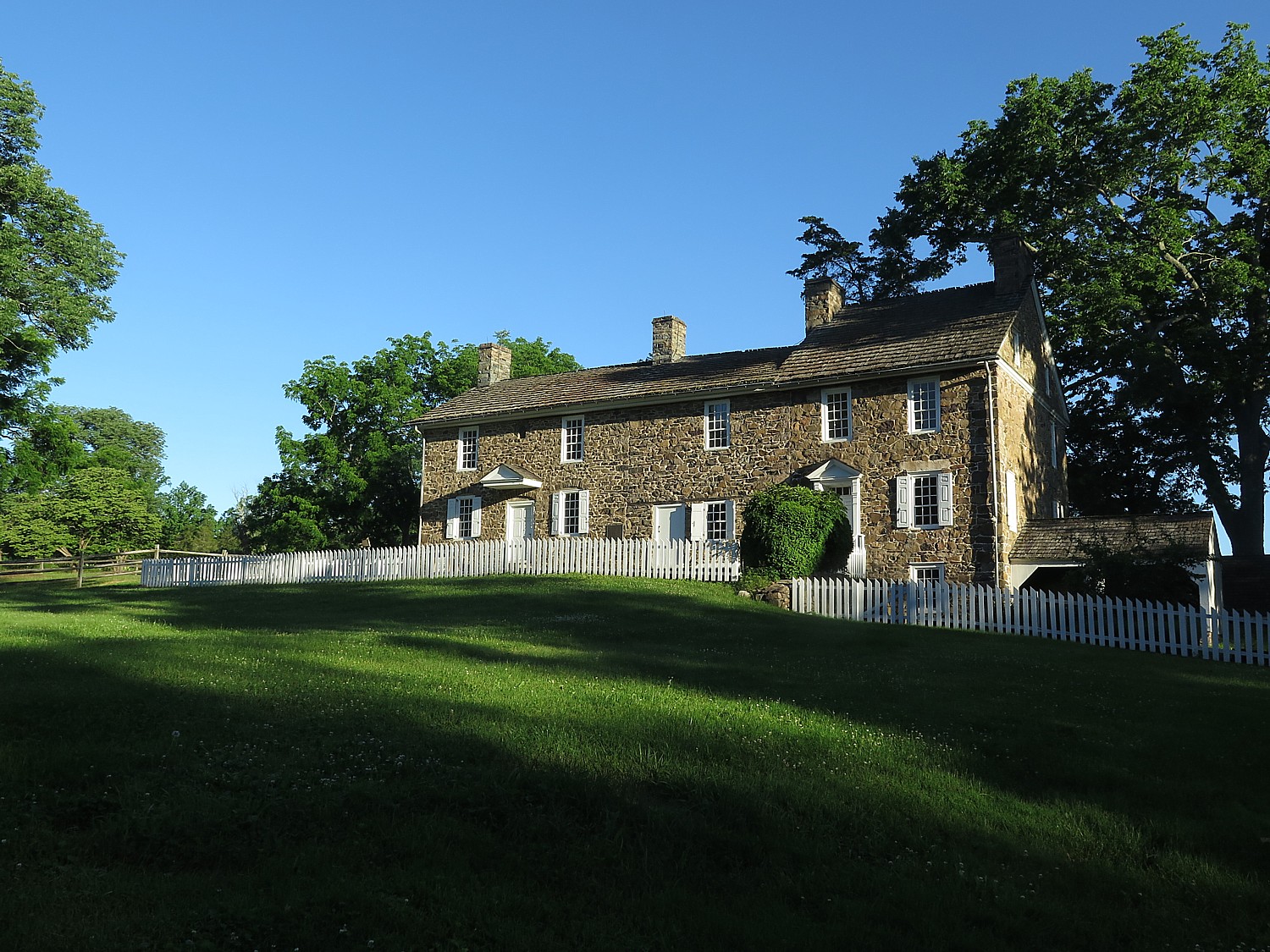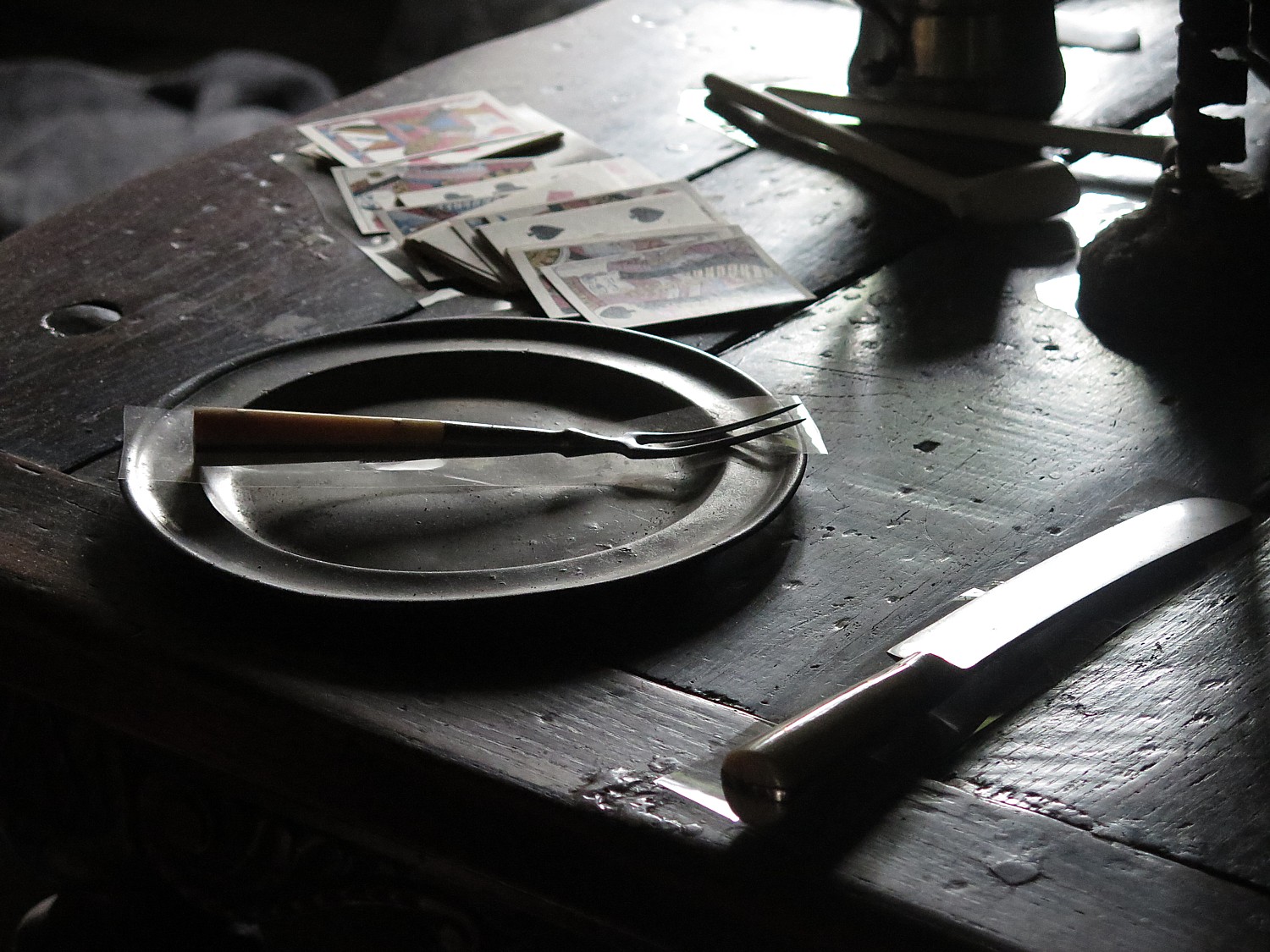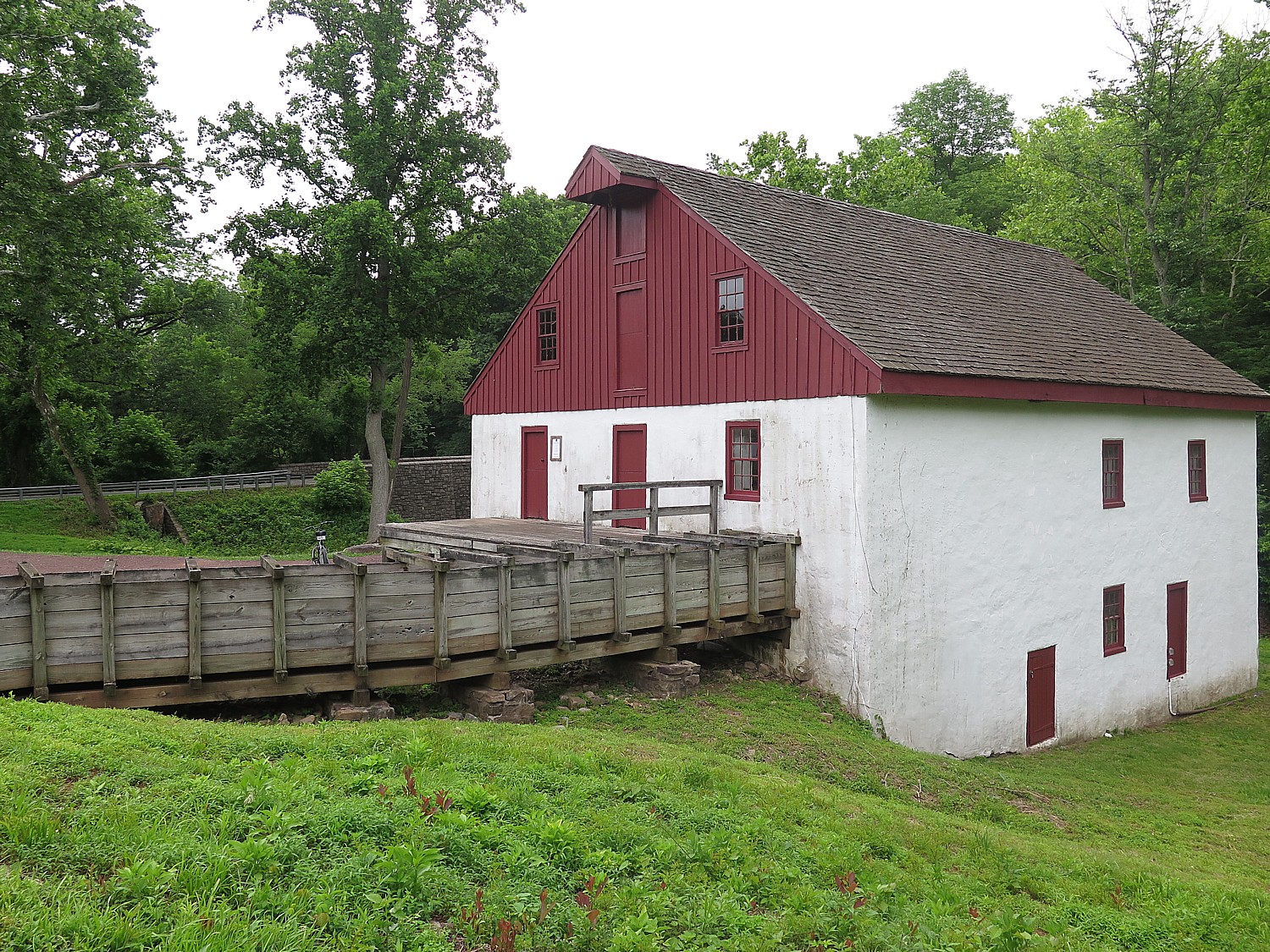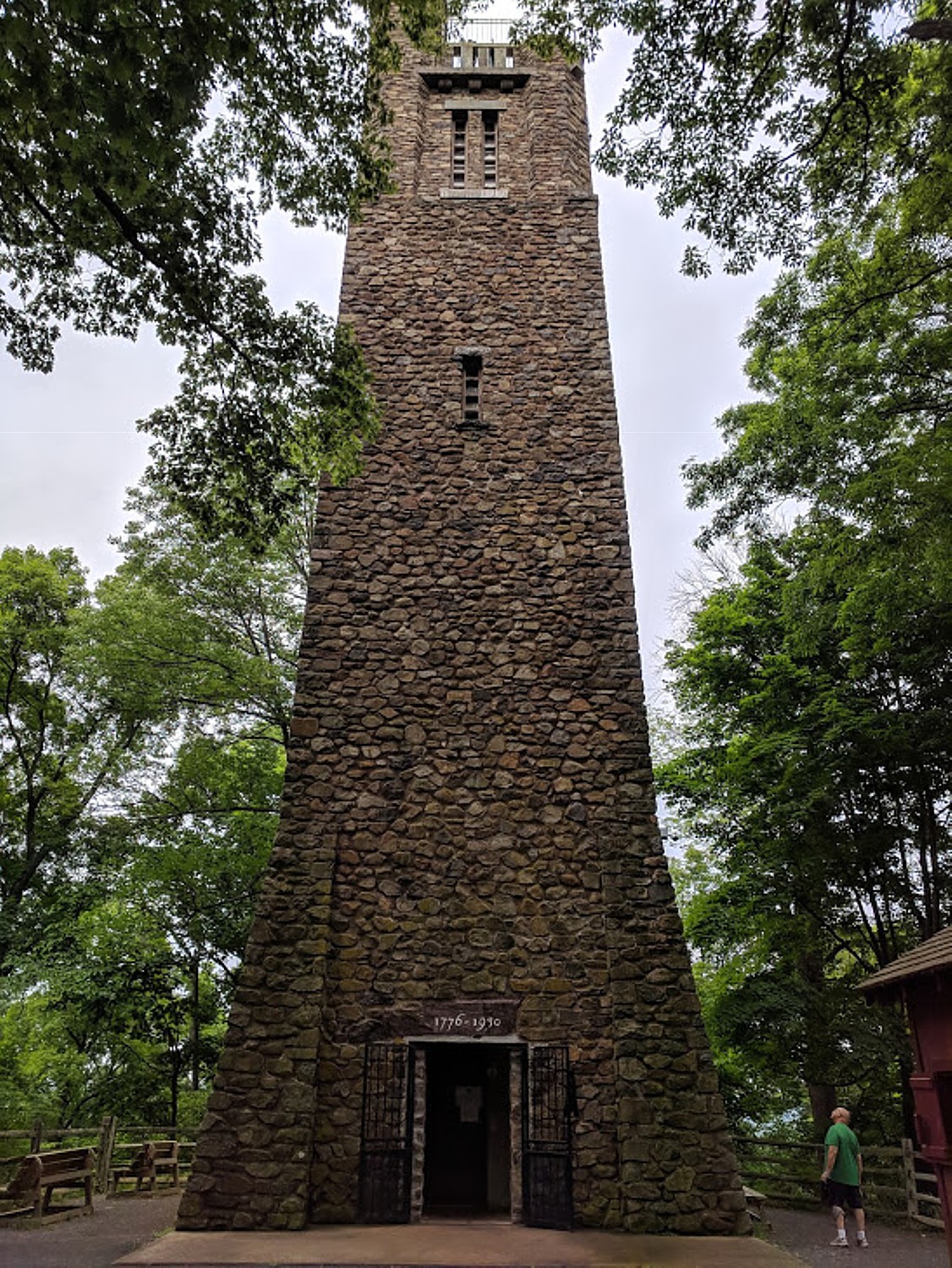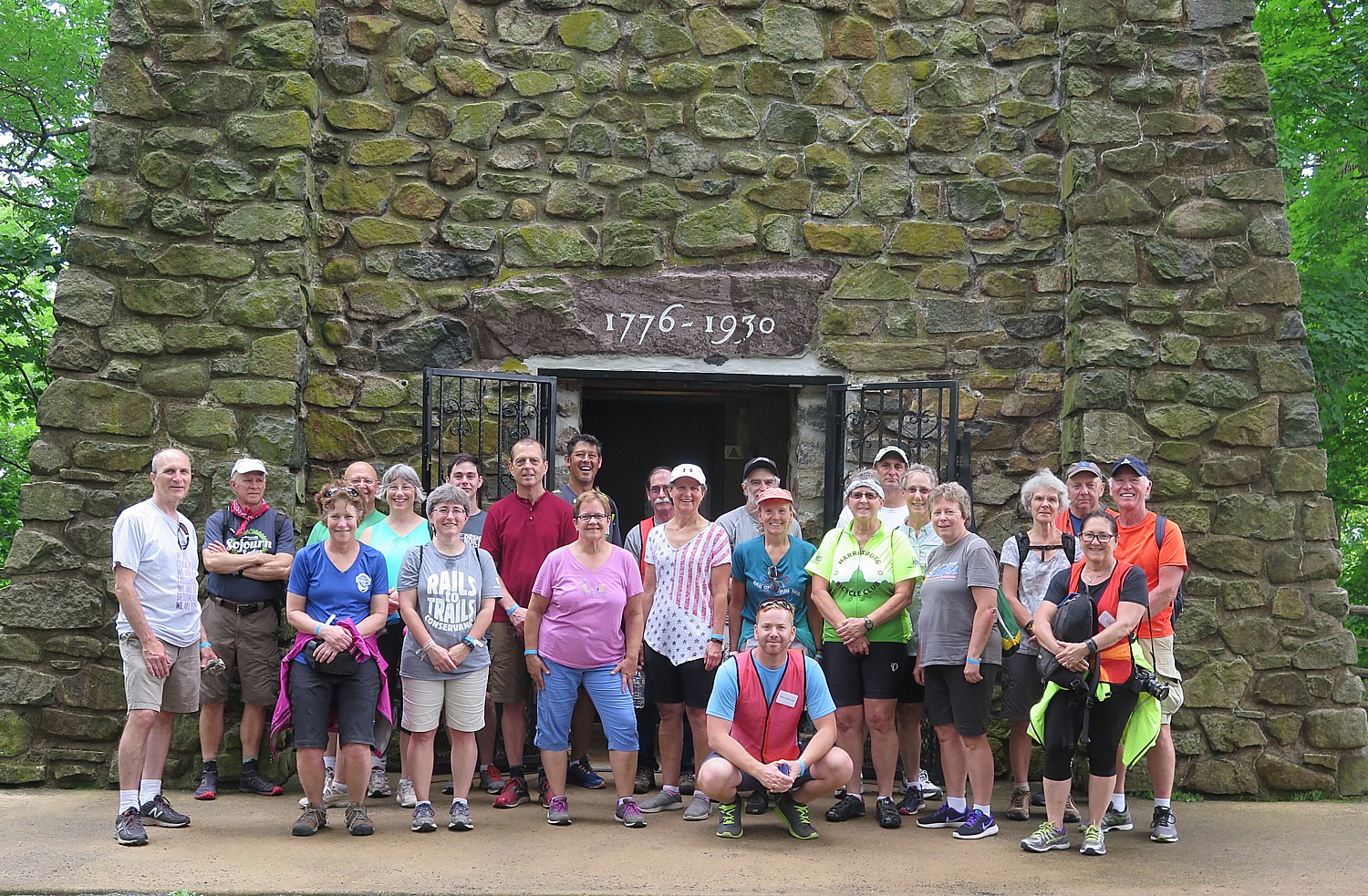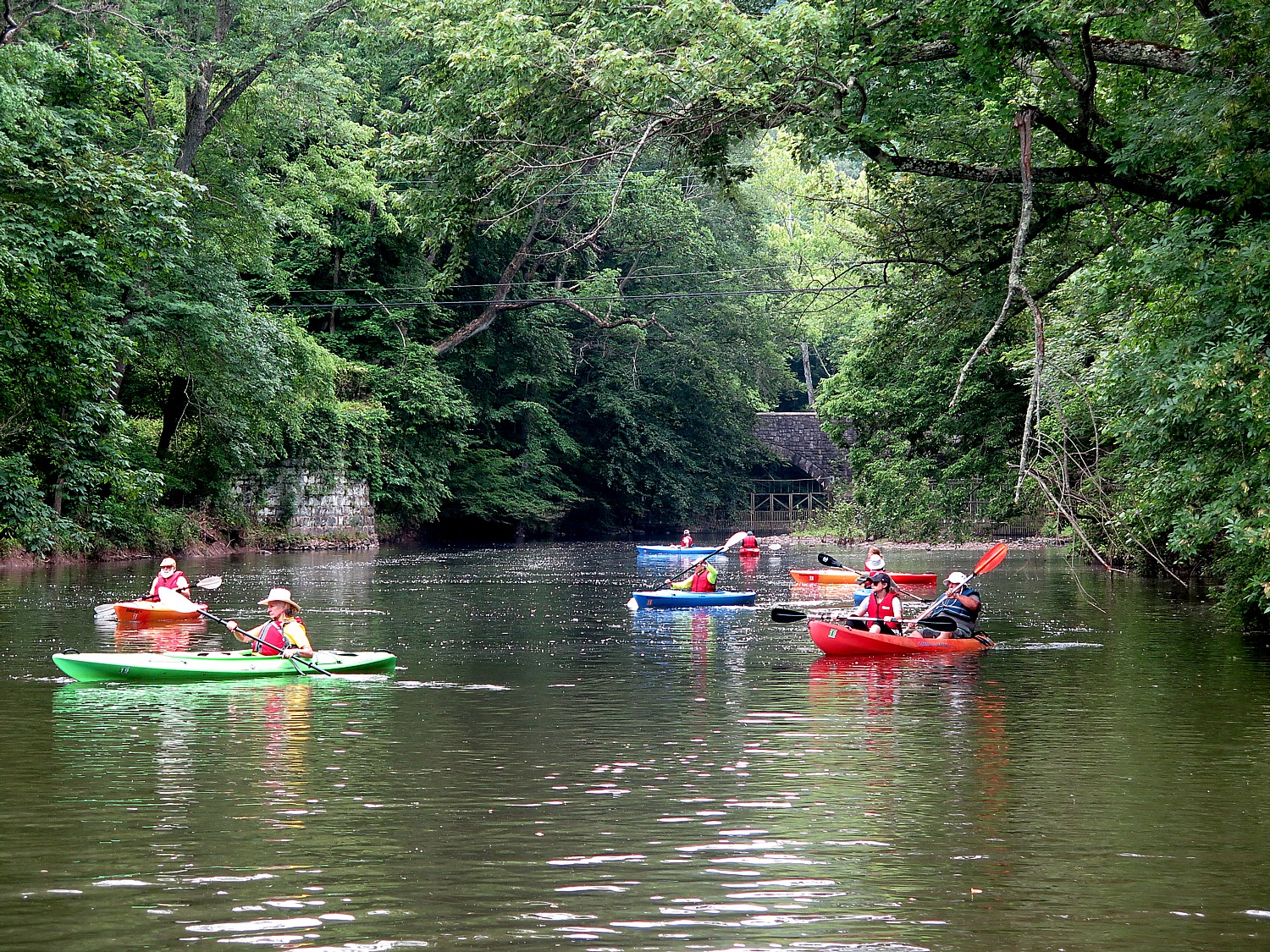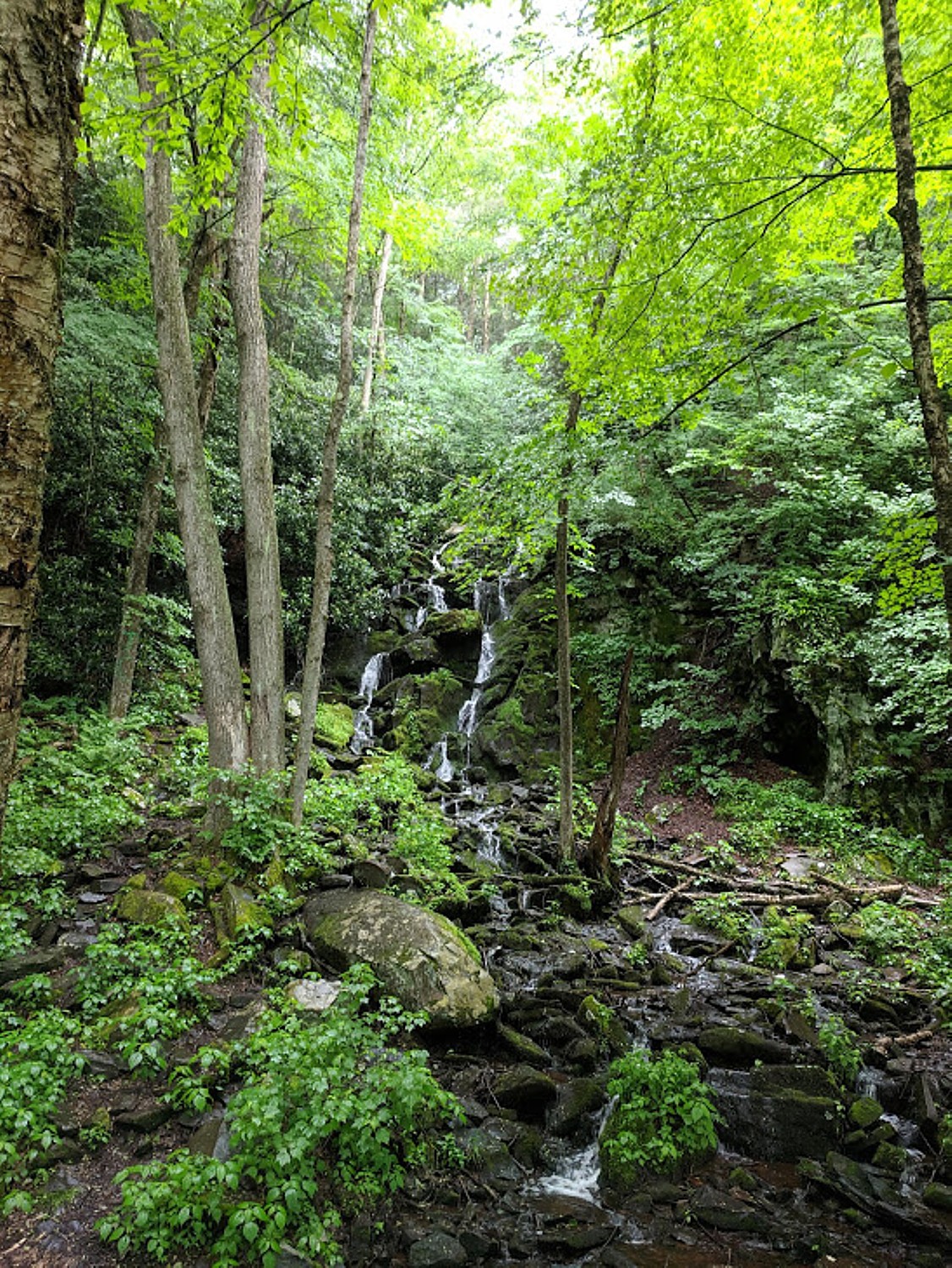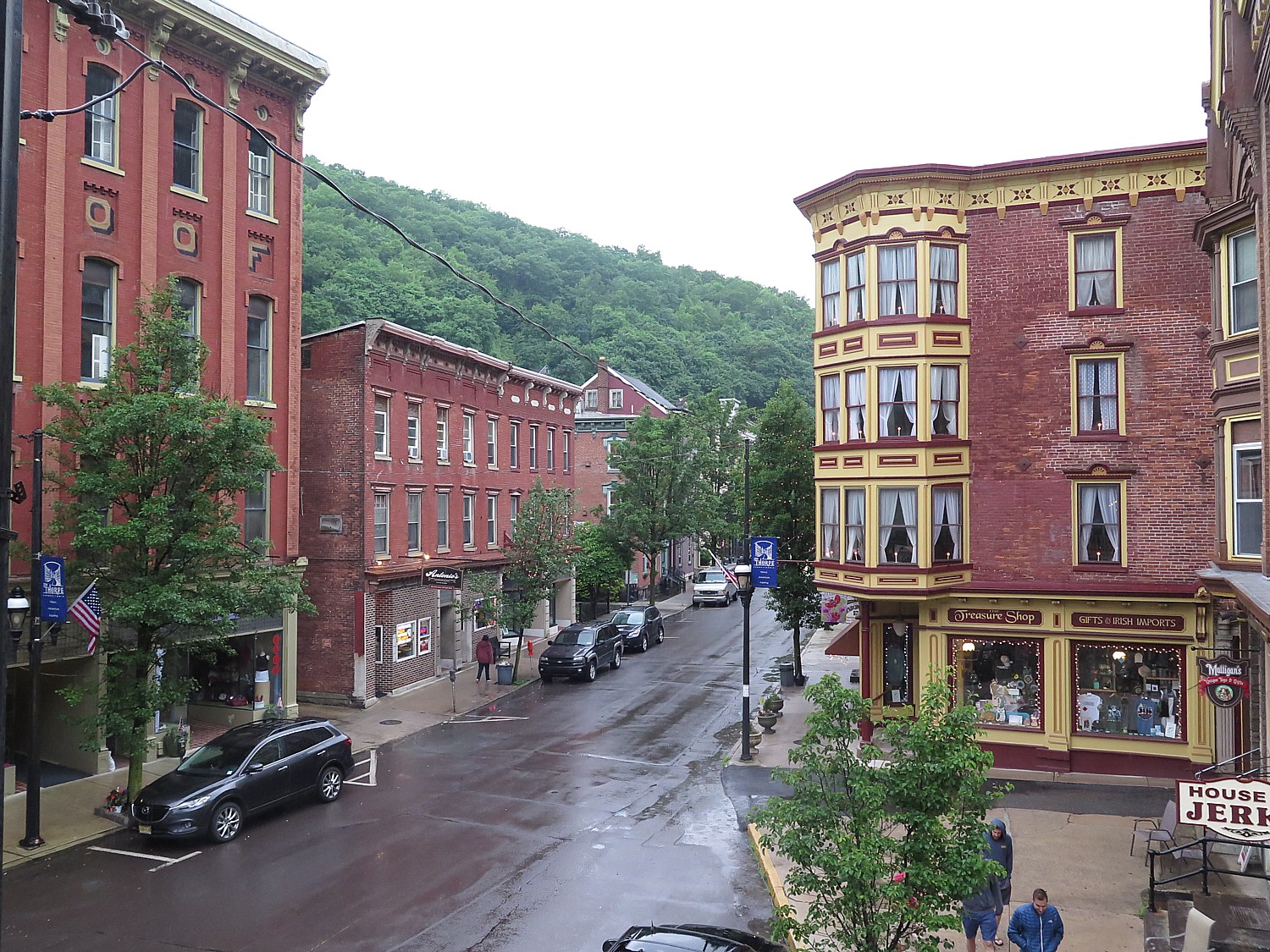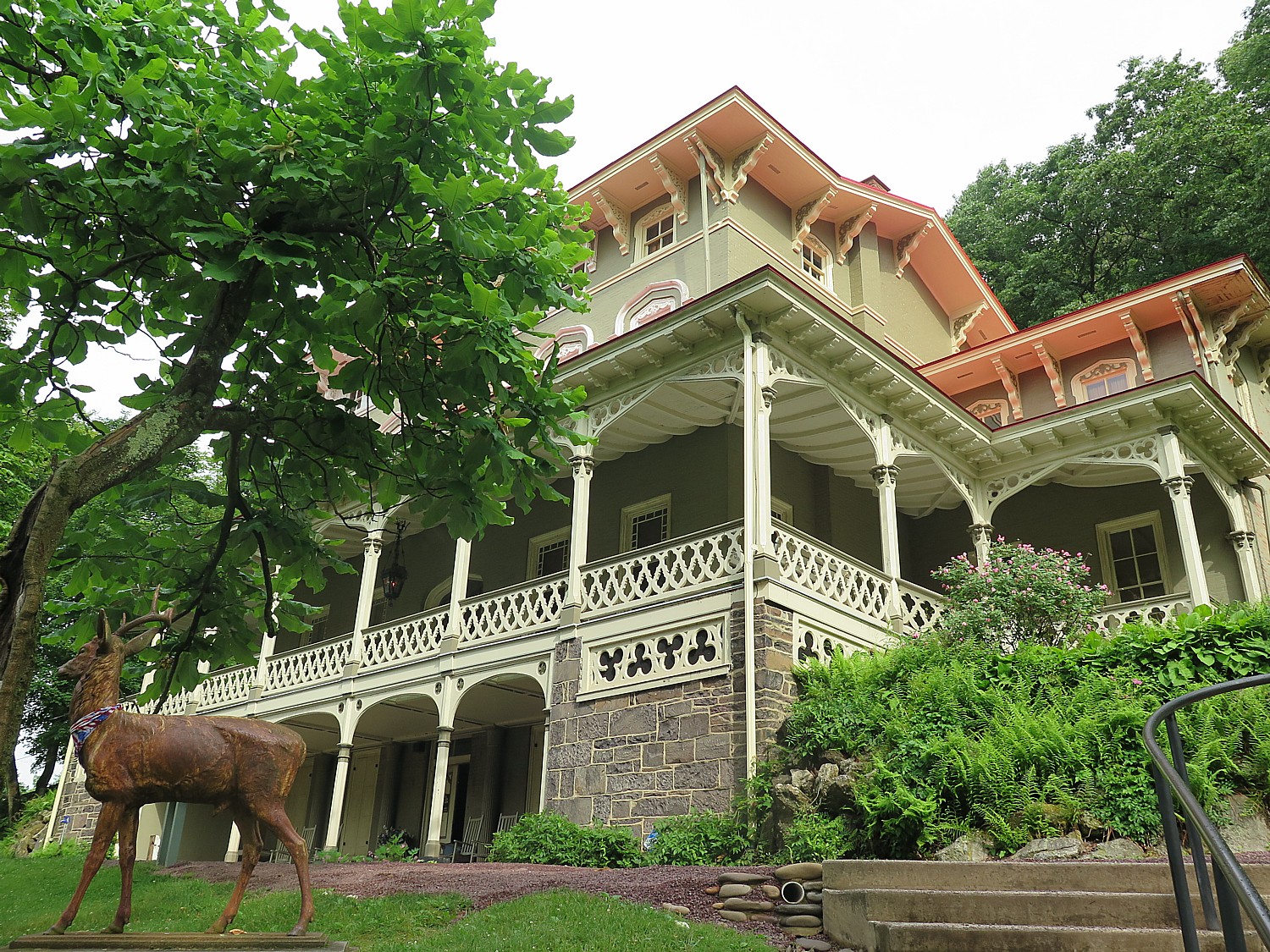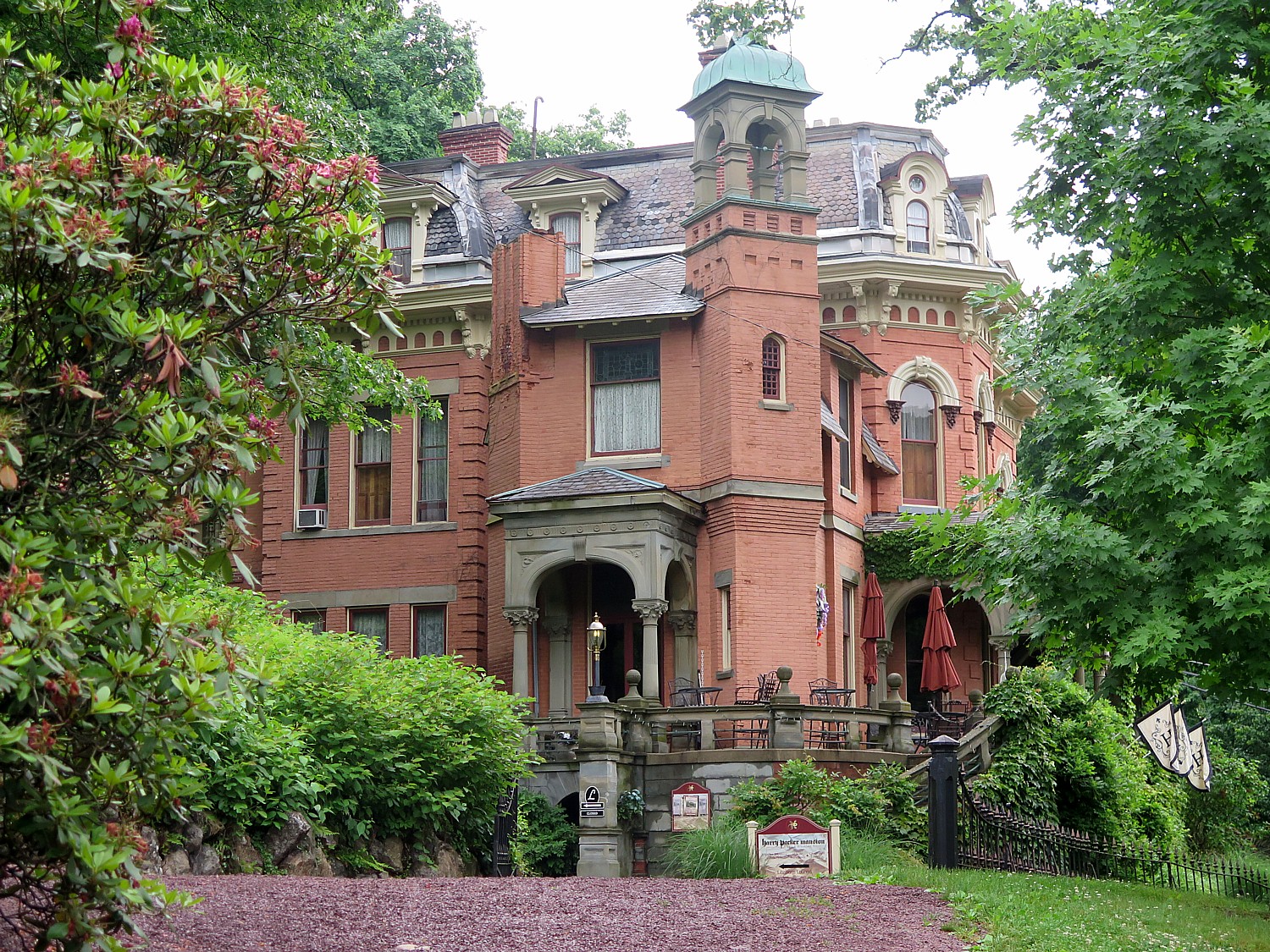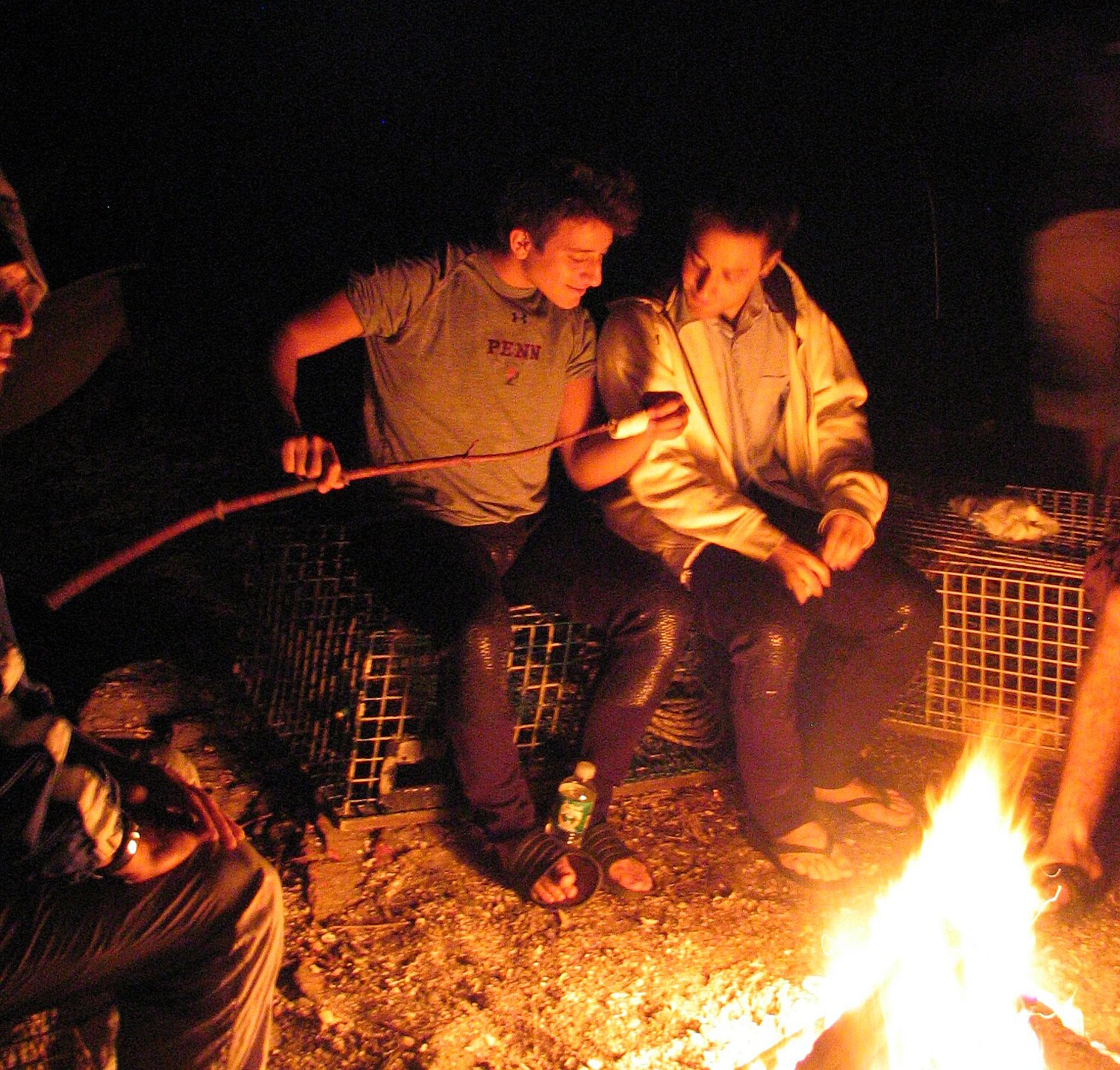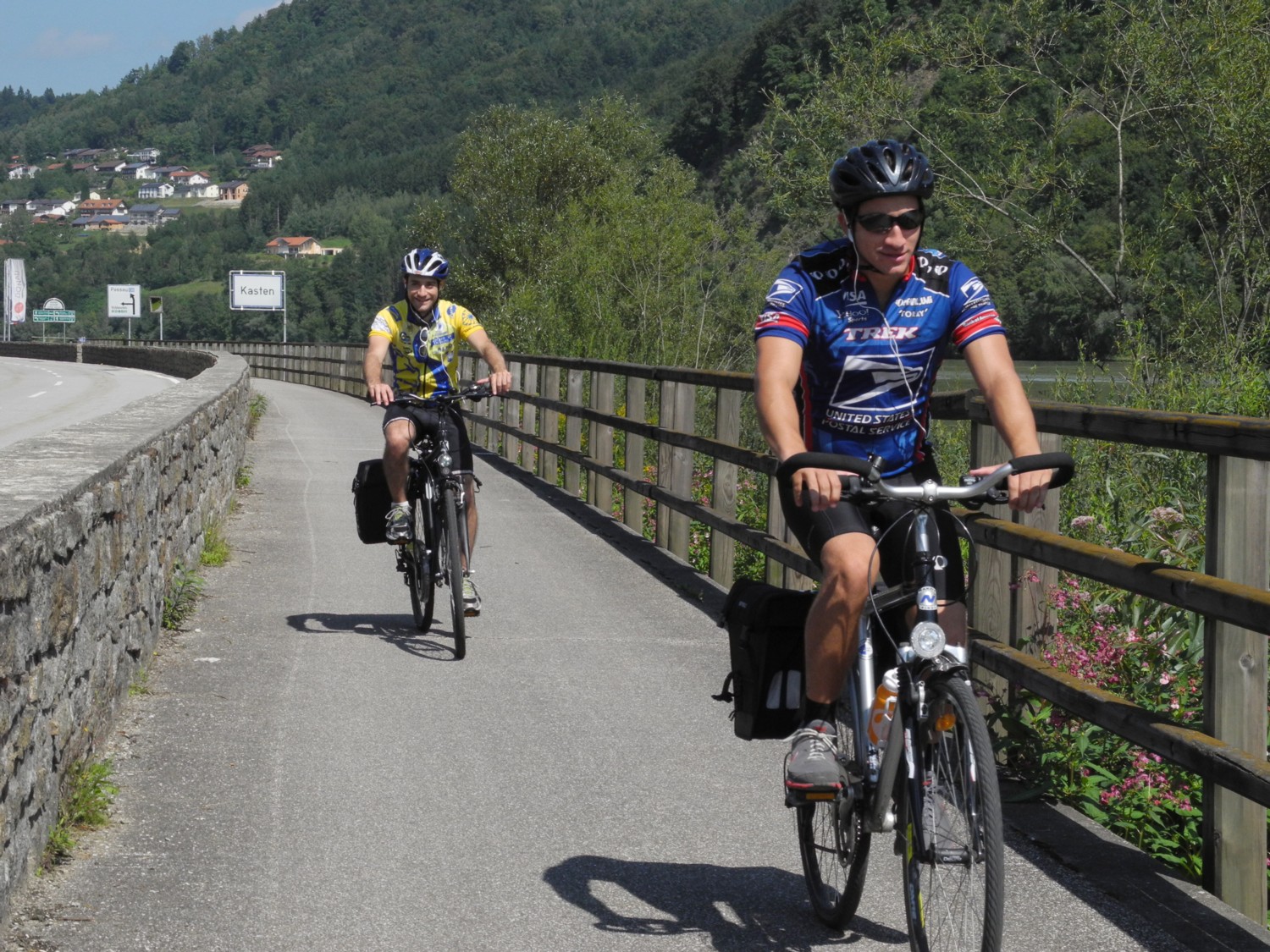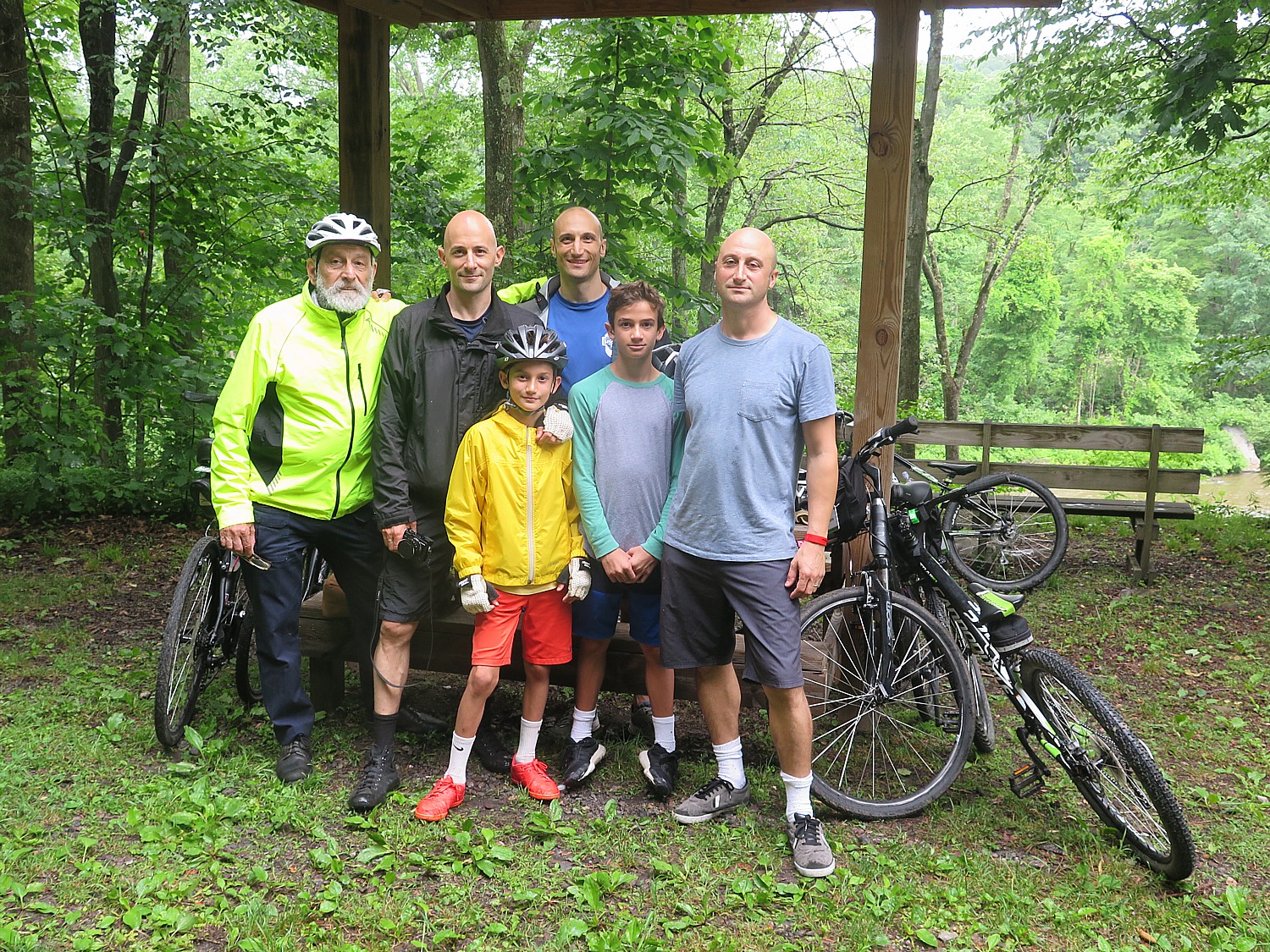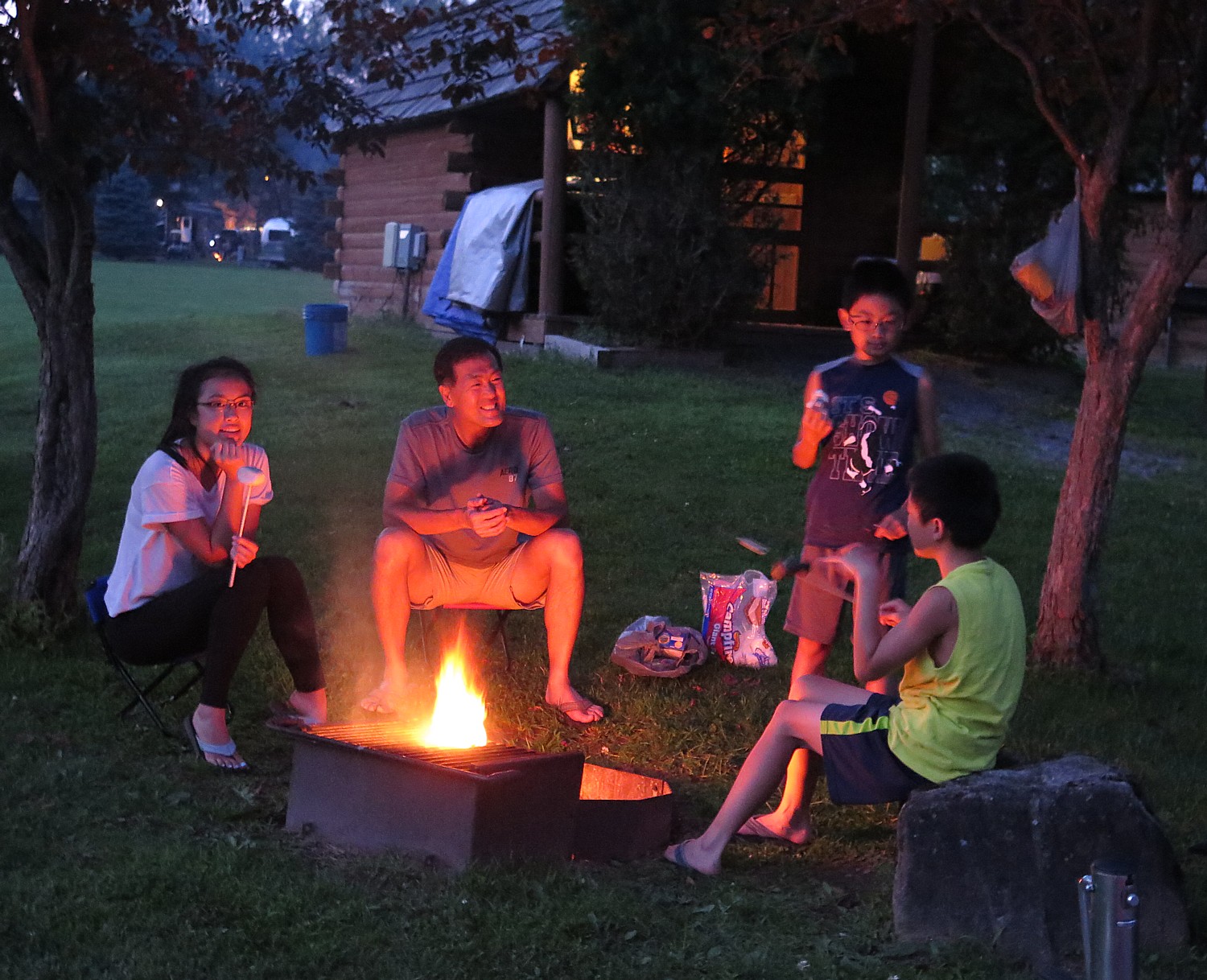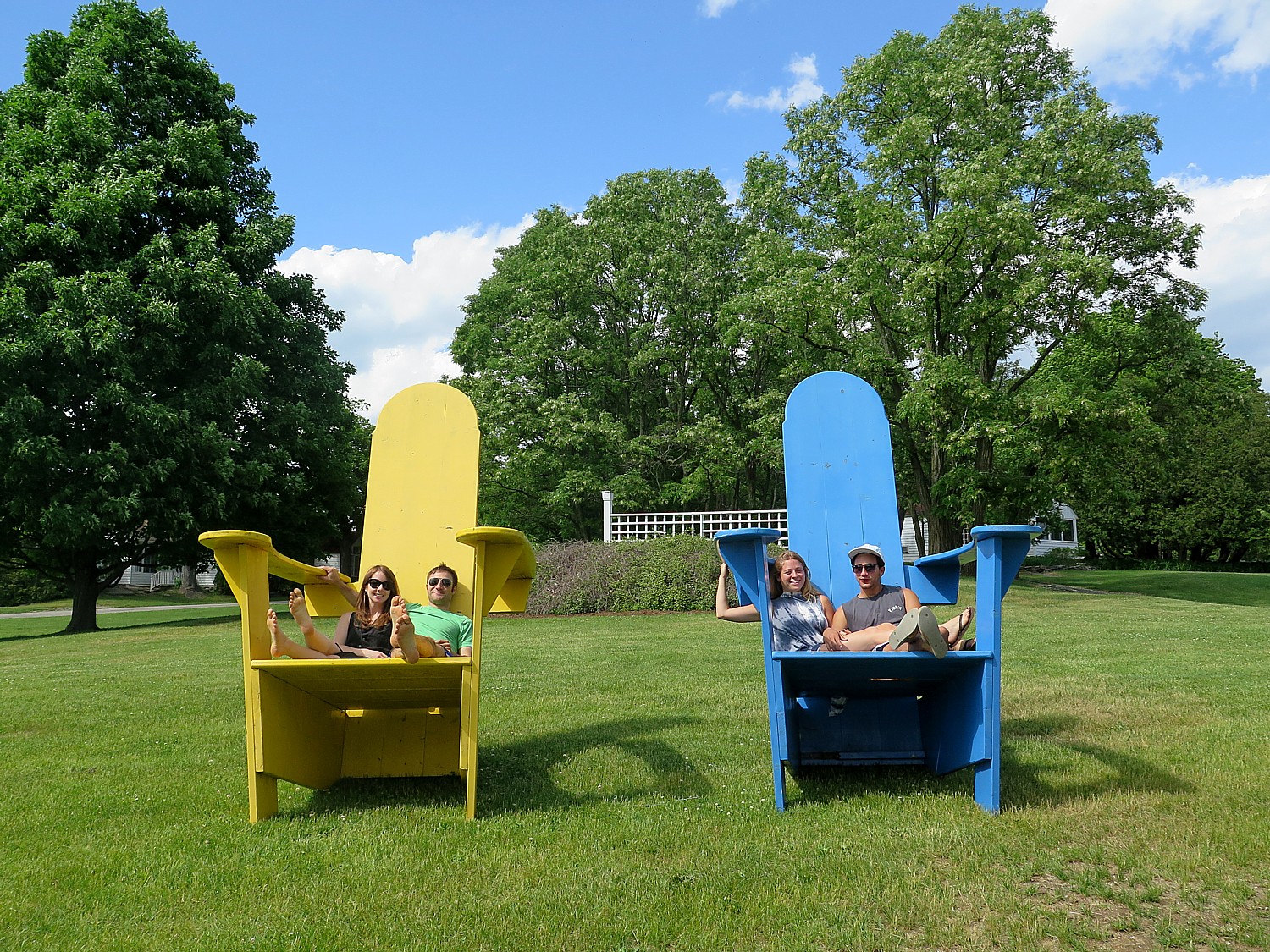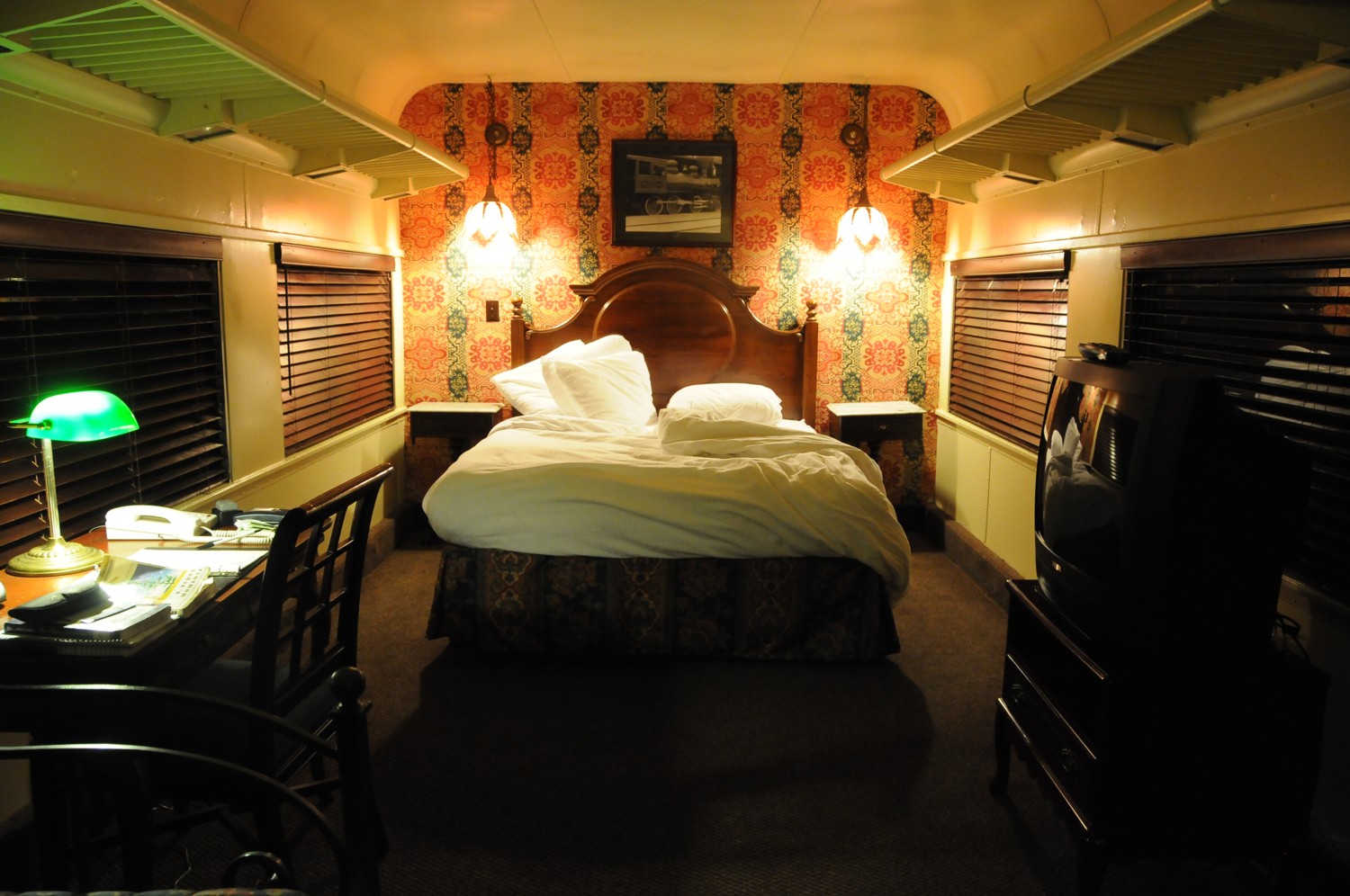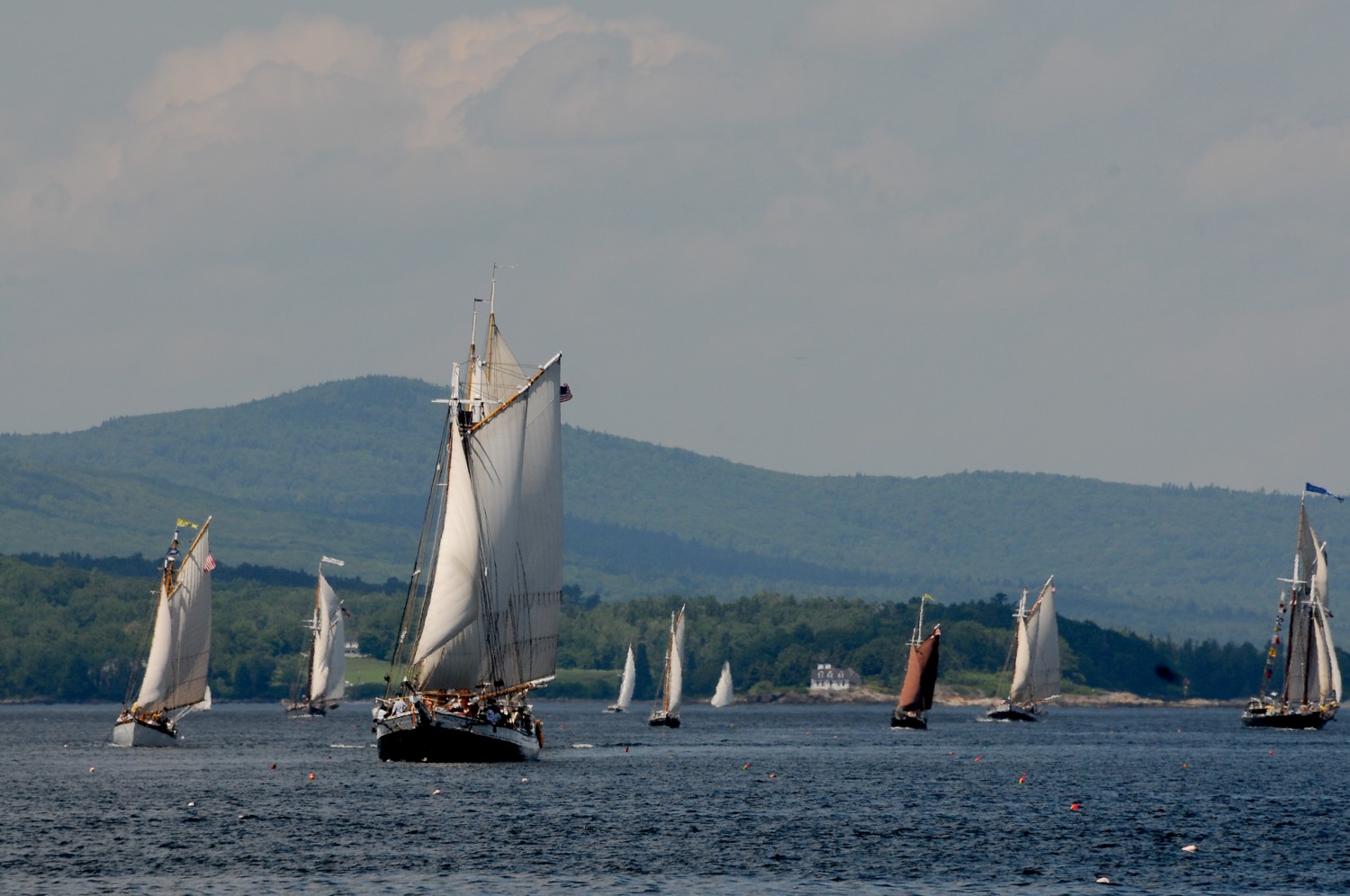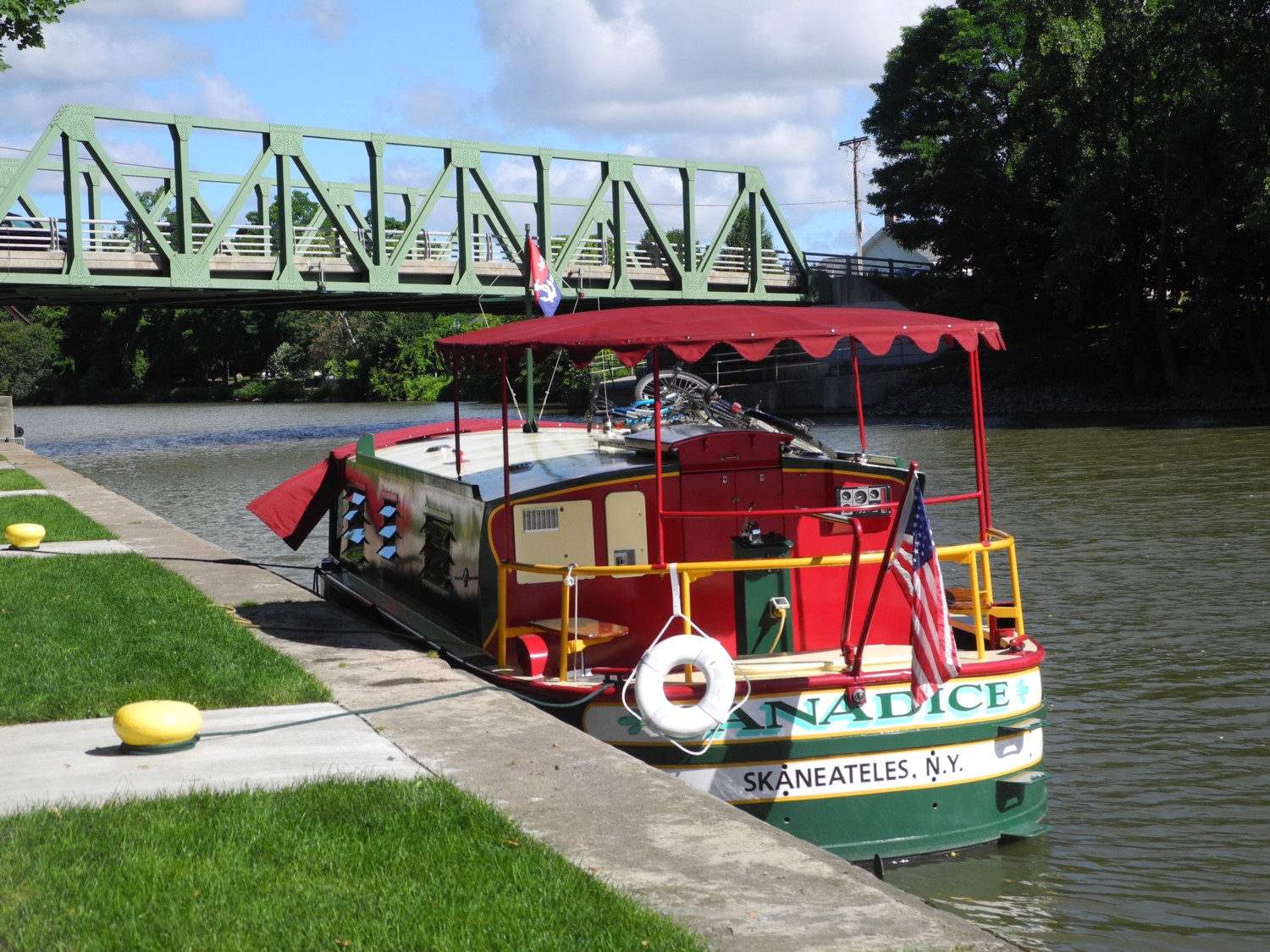
by Karen Rubin, Dave E. Leiberman & Laini Miranda
Travel Features Syndicate, goingplacesfarandnear.com
It doesn’t take long once you arrive at New York’s Letchworth State Park to see why this vast preserve merits its nickname, “Grand Canyon of the East.” One of the most dramatically scenic areas in the eastern United States, the Genesee River roars through a humongous gorge that extends the 17 mile-long expanse of the park, over three major waterfalls between cliffs as high as 600 feet, surrounded by lush forest.
Ever since I saw a poster of Letchworth State Park while riding the Long Island Railroad, I said, “Where is that!” So when our plan to camp and hike in the Southwest fell apart this year and feeling safe staying within New York State which has so scrupulously monitored and imposed safety conditions to contain the coronavirus, we sought out a comparable adventure driving distance from home: Letchworth is just south of Rochester in western New York in appropriately named Wyoming County.
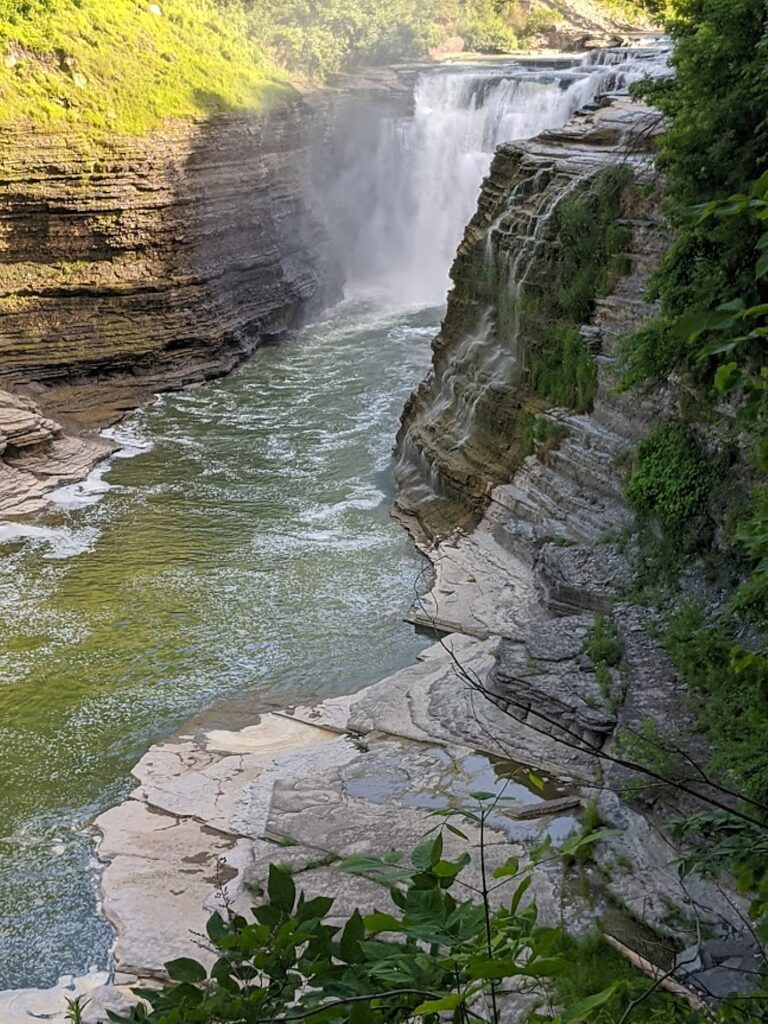
Our camping trip was made all the more special by staying in the campground within the state park that had only just reopened (private campgrounds, such as Kampgrounds of America, koa.com, are also available in the area) – so we could cook our dinner in the most spectacular settings – dinner with a view and be in prime places for the early light. (I booked our stay mere minutes after the website, reserveamerica.com, reopened reservations.)
During the two full days we were there, we hiked the most scenic, marquee trails: the Gorge Trail (#1), 7.6 miles following along the rim in the southern portion of the 17-mile long park, and the next day, the Highbanks Trail (#20), 4.5 miles along the rim and through forest in the north part of the park. Indeed, these hiking experiences were reminiscent of hiking the Rim Trail along the southern rim of the Grand Canyon.
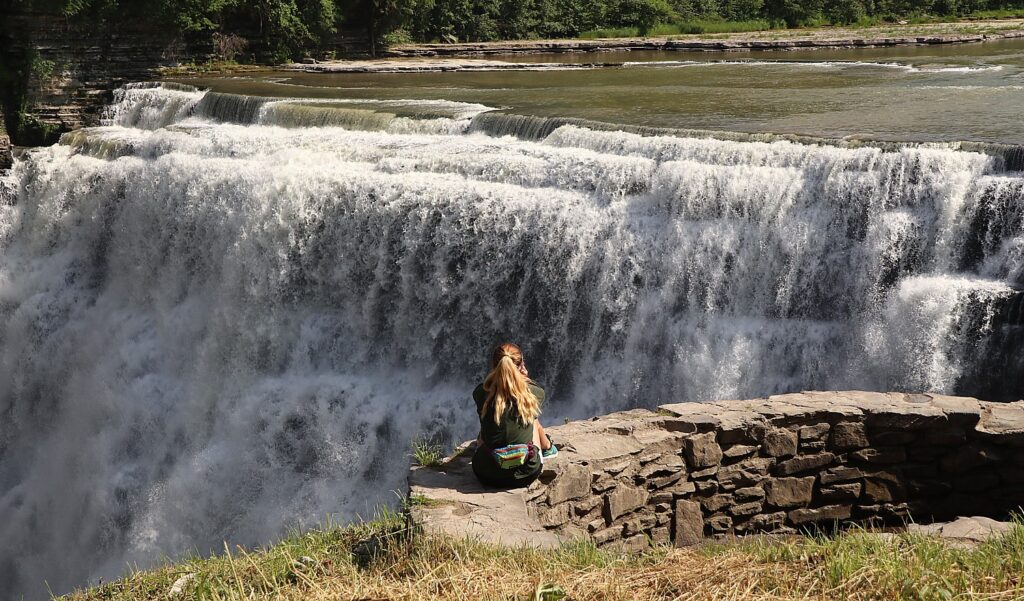
Letchworth State Park, (voted best attraction in New York State in 2017) is a geologic wonder. Its main attractions are three waterfalls (and if you visit in the late afternoon, you may well see rainbows over the Middle Falls) in the southern section. The trails take you to the most popular, scenic overlooks, which people can drive to, so they can be bustling with visitors (when we visited, people seemed to be respectful of wearing masks and keeping distance). This is another reason why camping in the park is such an advantage – the driving tourists tend to arrive at mid-day, so you can get out early and have these spectacular scenes almost to yourself.
If you do the hike early in the morning, do it from north to south. It’s out-and-back, so to avoid doing the 7.6 miles twice (that is, 15 miles), you can leave a second car or a bicycle at the end (as we did).
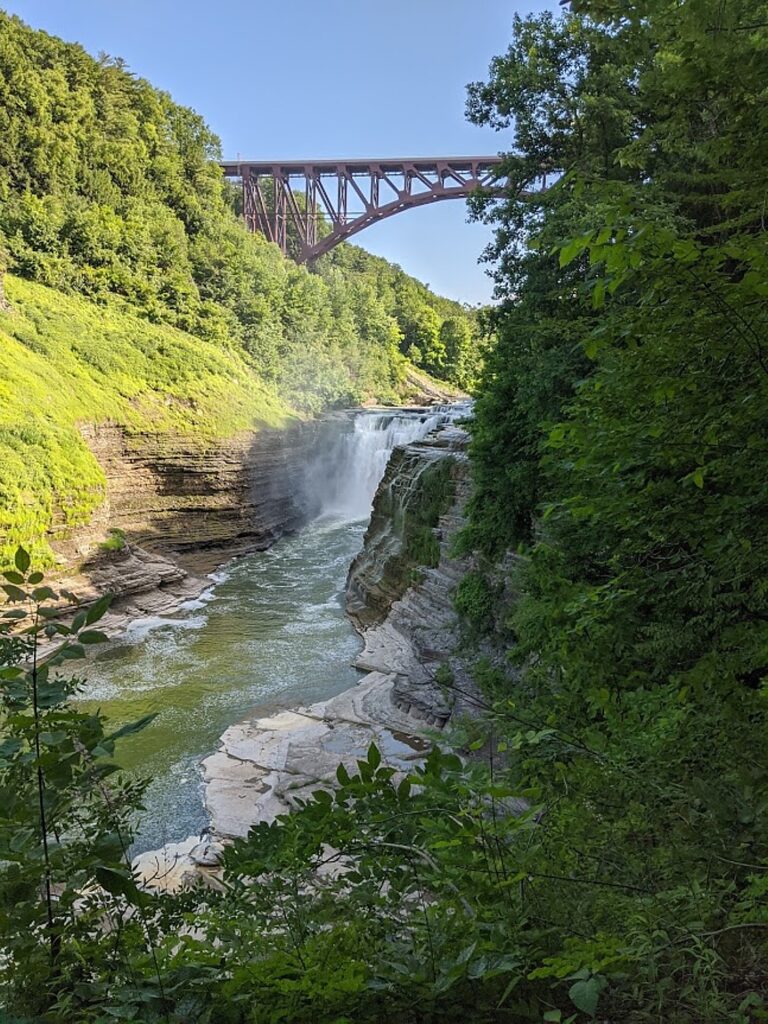
The park is huge, about 17 miles long (it takes about 20-30 minutes to drive from the campground to the Upper Falls along the Park Road which is narrow, winding and rolling with dips and rises) to the Upper Falls area. Indeed, the park is so narrow that the hiking trails are just alongside the road, separated in most instances by curtains of trees.
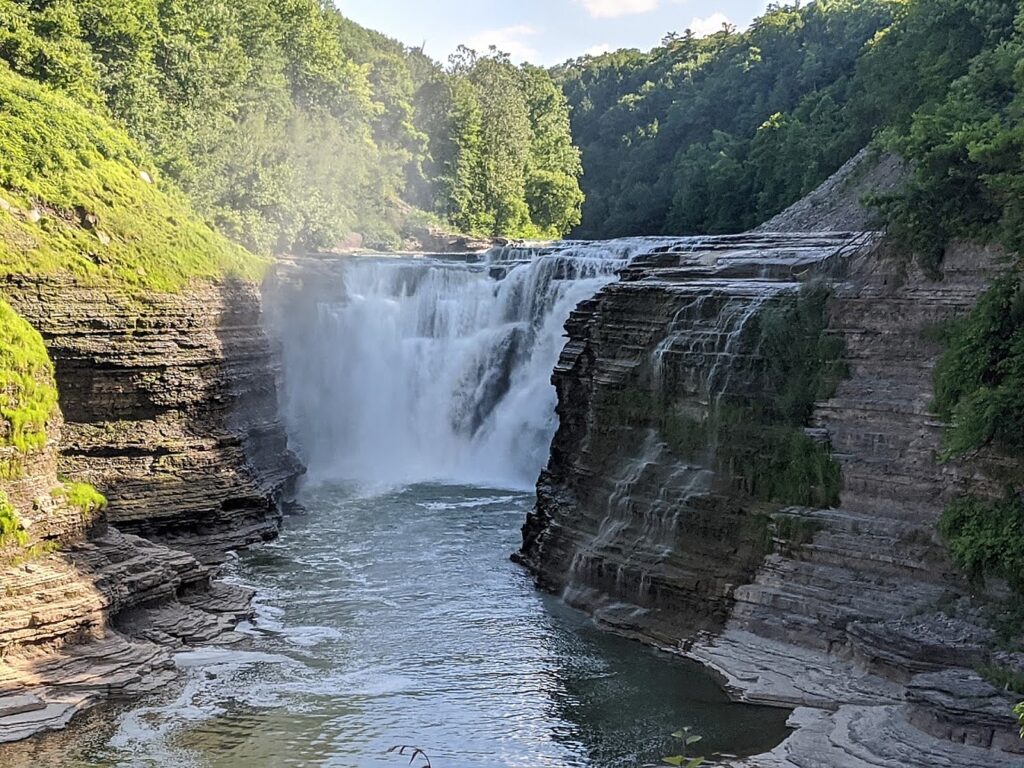
The Gorge Trail, in the south, brings you to the most spectacular views – Upper Falls and Middle Falls in quick succession, then Lower Falls. The real surprise is coming upon Wolf Creek waterfall and a bridge with a painterly scene. Along the way you come upon these stunning stone look-outs at Inspiration Point, Archery Field Overlook, Great Bend Overlook, Tea Table lookout, which also have stone tables and BBQ set-ups.

The Highbanks trail in the north section doesn’t have the awesome waterfalls, but is very special in its own way, providing the expansive vistas that evoke awe over just how enormous and winding this gorge is (respect for Mother Nature’s power) and why Letchworth has been dubbed the “Grand Canyon of the East.” Here, the hike brought us into stunning woods where the forest itself makes a painterly canvas.
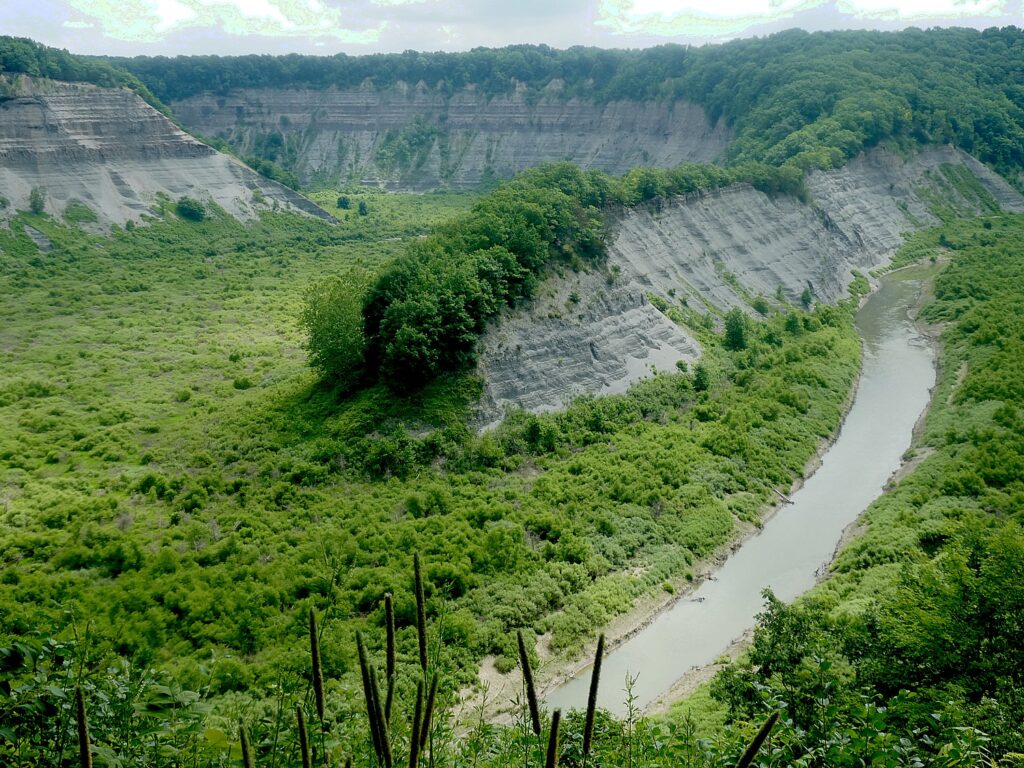
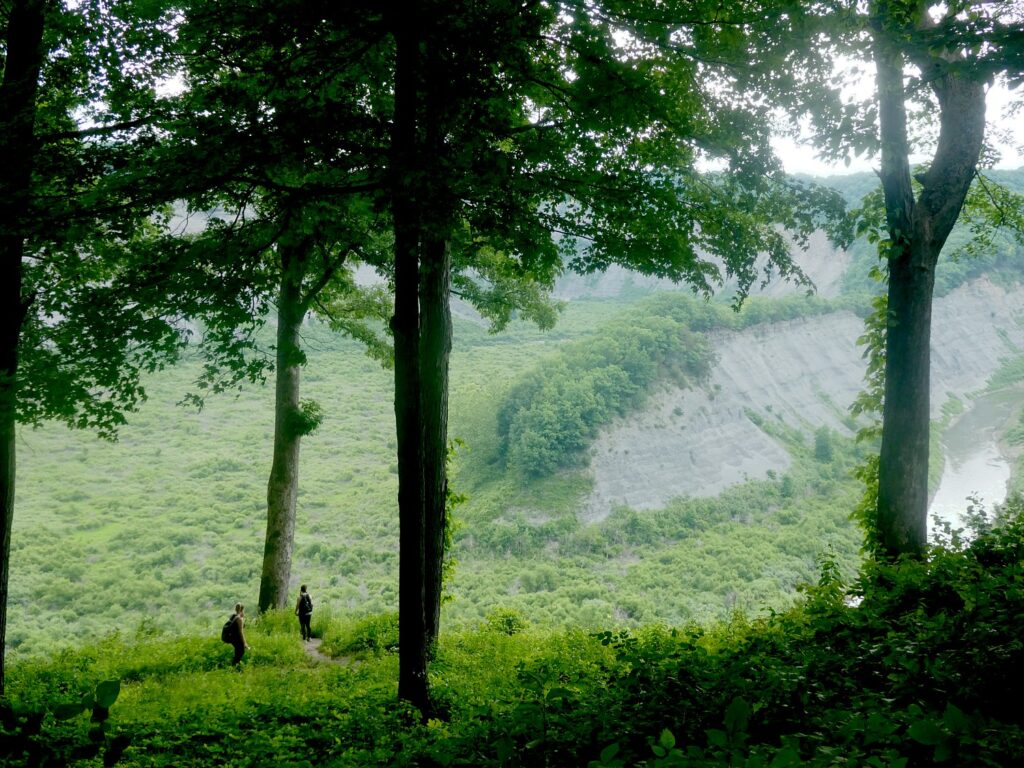
We started at the absolutely stunning overlook at Hogs Back (where we parked our car for the hike), going south about 2.5 miles, then reversing and going north from Hogs Back, you walk along the ridge, sometimes almost hanging over the gorge, until you come to the Mt. Morris Dam Overlook. The treat here comes at the end, at the Mt. Morris Dam Overlook Area, where there is a delightful snack bar serving excellent ice cream.

Two of the trails that I believe was closed during our visit, but definitely recommended is the Footbridge Trail that brings you down to the Lower Falls (#6A), just a half-mile long but rated “moderate” and the Portage Trail (#6).

Altogether, the park offers 66 miles of trails (almost all rated easy or moderate, and most on the west side of the park). But for hard-core hikers, there is a 22-mile Finger Lakes Trail that runs along the entire eastern section of the park
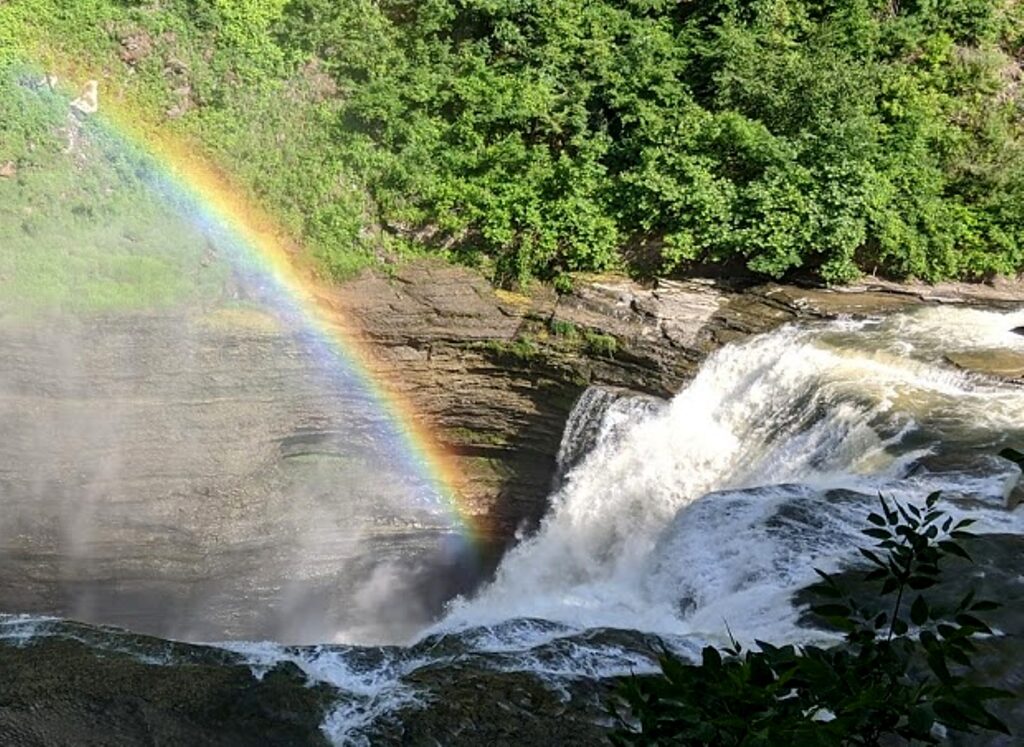
I tried to research in advance to find the best places for sunrise and sunset photos, which of course depends on season and weather. I wasn’t able to get any sunrise or sunset photos, but the late afternoon light proved best at the Upper Falls and Middle Falls (where rainbows seem not uncommon as the sun lowers and sends its rays through the mist).

Instead of eating at the campsite (not that scenic, but very pleasant for sleeping and breakfast), we kept our food in the cooler and equipment in the car and each evening would pick out a different setting – dining on tables with slate tabletops apparently taken from these very cliffs. David would haul out his Coleman stove and tiny propane tank, his culinary tools, cutting board, and perform his culinary magic. We dined at the appropriately named Tea Table the first evening, Wolf Creek the second evening, which proved our favorite, with a virtually private view of a sweet waterfall, that we discovered on our hike. We were going to have our third night’s dinner overlooking the Upper Falls, but realized this is the most popular part of the park, and since a priority was to avoid possible exposure to lingering COVID germs, we decided to return to Wolf Creek which we again had all to ourselves.
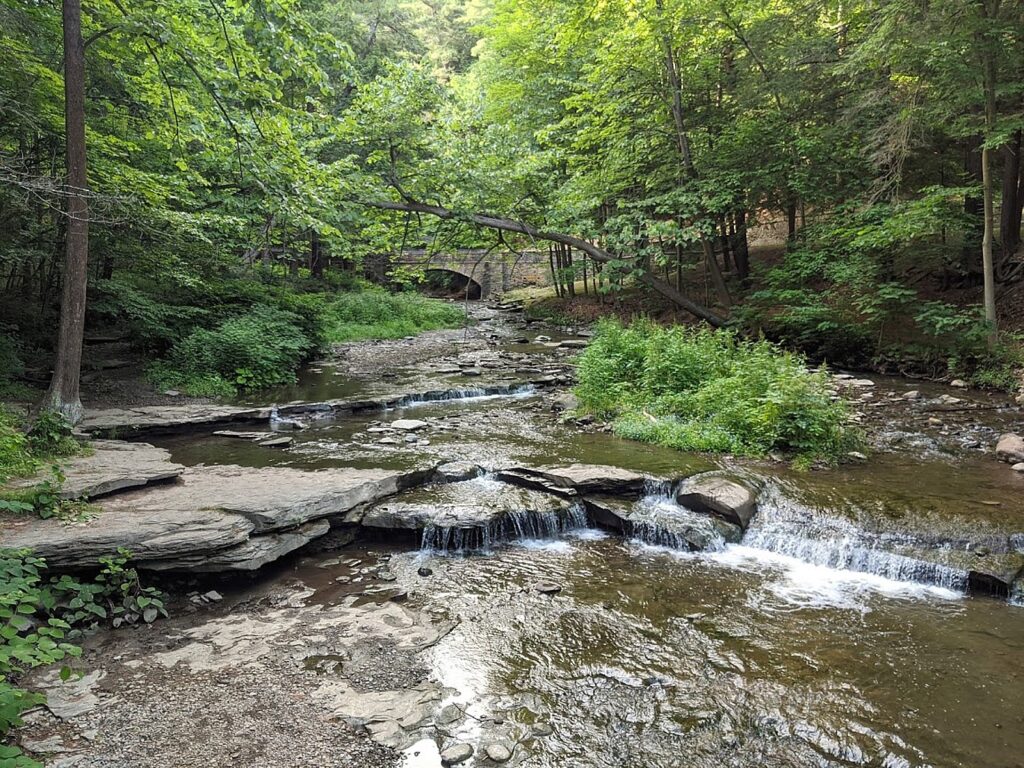
Each evening we returned to the campsite and David and Laini made a fire (s’mores for dessert!). The peace of this place, with tall trees opening to a blanket of stars, and fireflies darting about as if they were Superflies! or shooting stars, was perfect and priceless.
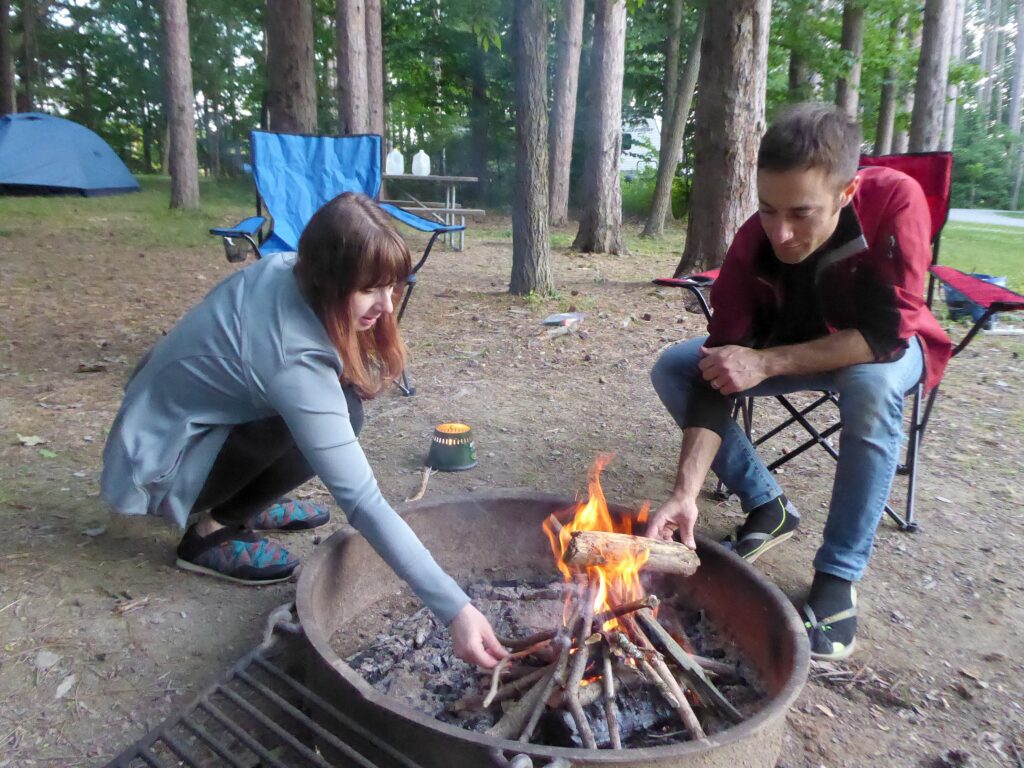
Letchworth, which was voted USA Today’s Reader Choice for Best State Park in the nation in 2015, is well maintained, especially during this heightened COVID-19 health emergency. The campground restroom facility was very clean, and all the restrooms (they indicate which are open), require masks and social distancing.
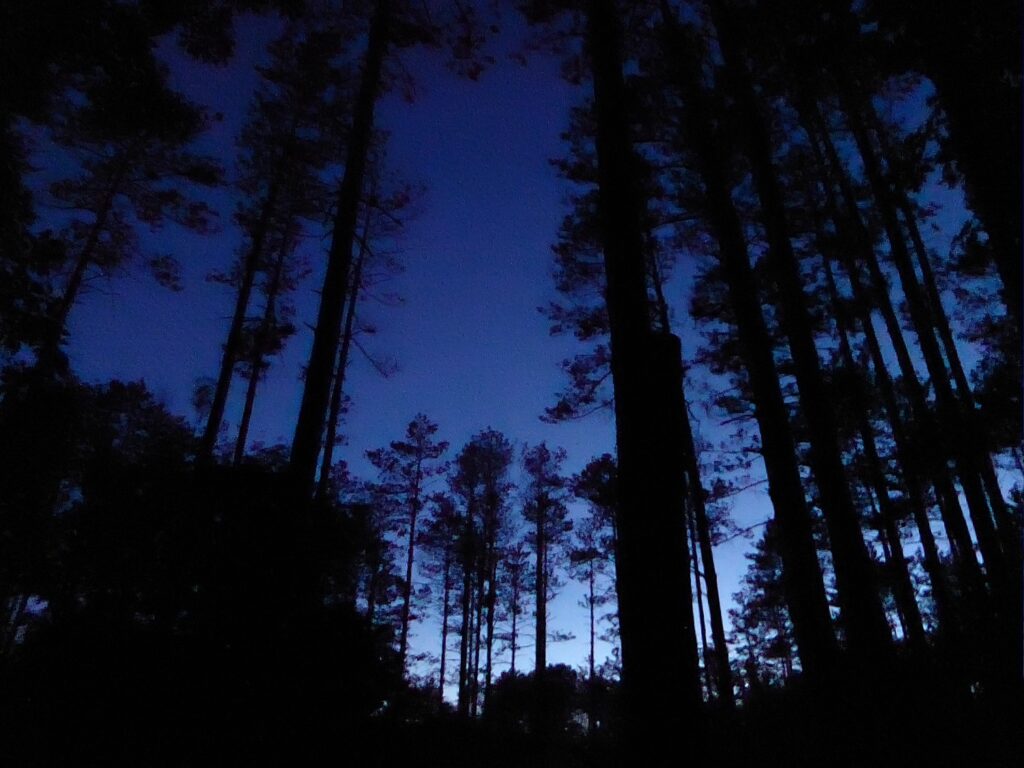
Our plan for this trip was to be completely self-sufficient so we wouldn’t have to worry about getting water or food, not knowing if places would be open to buy supplies and wanting to cut down our interactions as much as possible. We took enough supplies for our three days, though we did discover that by the time of our trip, this region of New York had achieved Phase 4 reopening, so places were open though with significant limitations, including the Highbanks Camp Stores. (Concessions also were at the Dam Overlook Cafe and Highbanks Pool Snack Bar on the North end; Letchworth Gift shop, Lower Falls, upper Falls Snack Bar.)
(Indeed, for the foreseeable future, travel will involve more planning and forethought, checking ahead what will be open and under what conditions; as a general rule, some places are requiring advance reservations or timed-ticketing.)
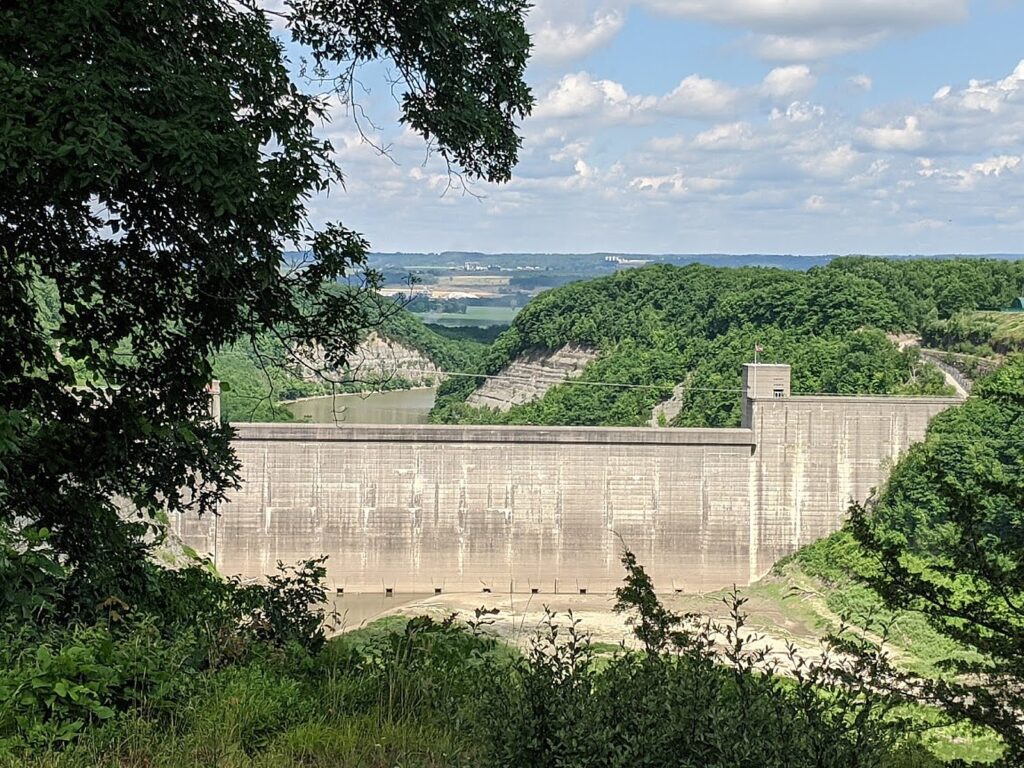
The Highbanks campground is wonderful – six miles from the entrance, and several more miles to get to the actual camping loops for tents and RVs. There are also cabins. Several areas accommodate pets.
There are also a few cottages and lodges available within the park. For a family vacation rental experience, the Maplewood Lodge, located at the entrance to the Highbanks Camping Area, sleeps up to eight and has a furnished kitchen, living room with working fireplace, TV and DVD/BluRay player and formal dining room.
Camping was one of the attractions for us to come to Letchworth at this time (so many are choosing camping and RVing and even AirBnBs over commercial hotels), but the park also offers the charming Glen Iris Inn, scenically set right above the Middle Falls.
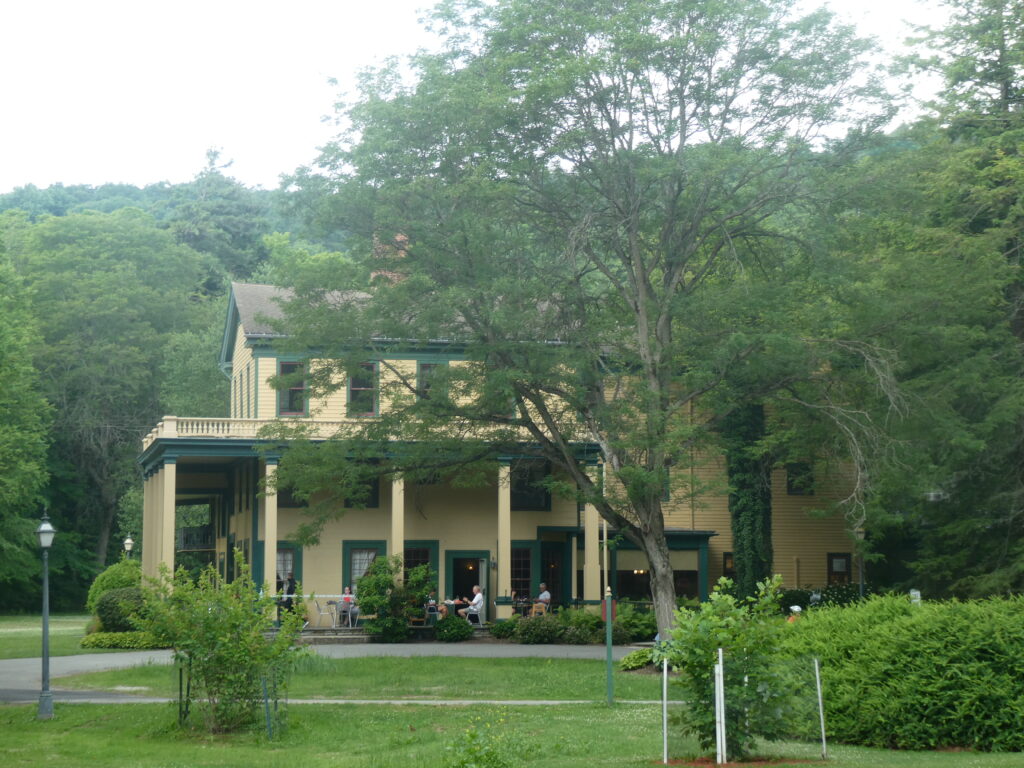
An inn since 1914, the historic Glen Iris Inn was formerly the country estate of William Pryor Letchworth. Completely restored, the inn offers accommodations and is open to the public for breakfast, lunch and dinner (banquet and catering services are available for special events). We see people dining on the lovely veranda, as well as in an enormous tent set up on the lawn to further accommodate those preferring to dine al fresco.
Addressing this historic moment, rooms are sanitized with an electrostatic cleaning machine and sealed for the guest’s arrival; capacity in Caroline’s Dining Room is limited to 50%. In addition to rooms in the Inn, the Glen Iris also offers some cottages (585-493-2622, glenirisinn.com).
Just across from the inn is the small stone William Pryor Letchworth Museum which tells the fascinating story of Letchworth Park, paying tribute to William P. Letchworth who preserved the land and its heritage by donating it to the state. The museum tells the history of the Genesee Valley, the canal, and of the Seneca who lived on these lands. Letchworth’s personal collection of artifacts from local Native American tribes is on view.
The museum also relates the compelling story of Mary Jemison, “The White Woman of the Genesee,” born on a ship from Europe in 1743 and kidnapped from her home in Pennsylvania in 1758 by Shawnee, then sold to the Seneca who adopted her into the tribe, becoming Dehgewanus. (Trail #2 is named the Mary Jemison Trail, the creek is named De-ge-wa-nus Creek and there is a statue of her, erected by Letchworth not long after her remains were brought back from a reservation and reburied on his estate, that Letchworth dedicated to her memory in 1910; read her remarkable story: http://www.letchworthparkhistory.com/jem.html)
We didn’t have the opportunity to visit the museum during our visit, but is one of the top items on our list for our return.
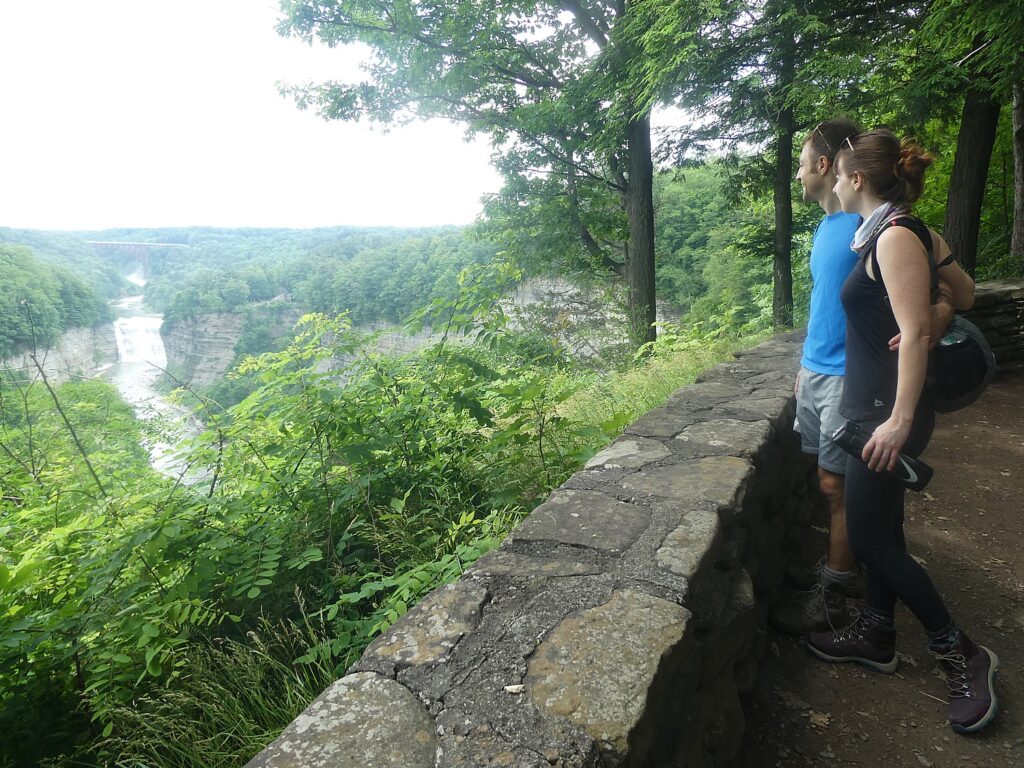
We also did not get a chance to explore the Humphrey Nature Center which in normal times, offers year-round environmental education programming and interactive exhibits highlighting the geology, wildlife, and ecology of the park.
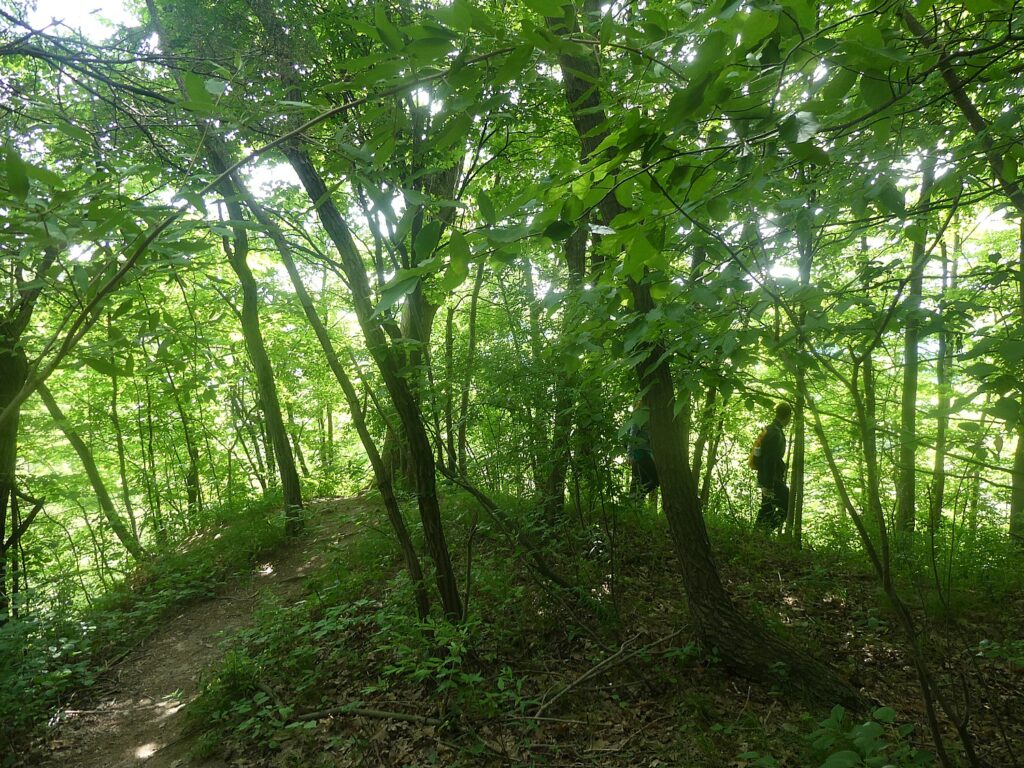
Letchworth State Park offers many recreational facilities and activities that were just beginning to reopen at the time of our visit – including nature, history and performing arts programs, guided walks, tours, a summer lecture series. The enormous Highbanks Recreation area has a pool. And since our visit, the park opened a new $2 million outdoor Lower Falls Recreation Center offering table games, badminton and pickle ball courts, bocce and shuffleboard, as well as a fitness loop.
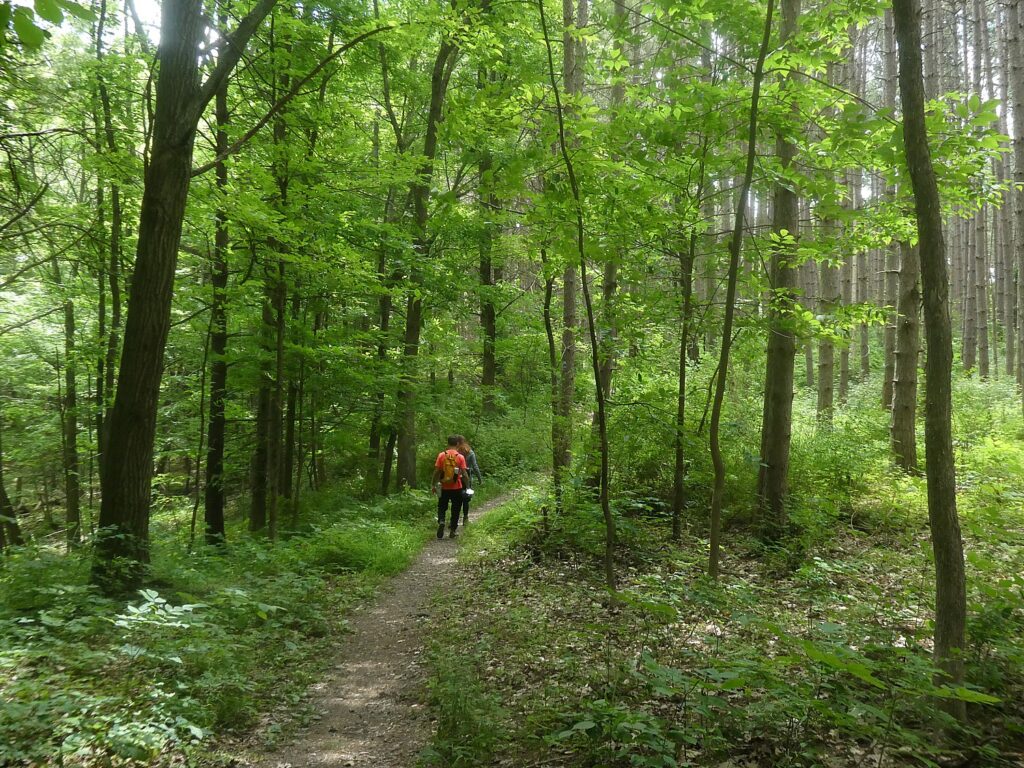
The project also involved restoration of a historic bathhouse that is used as the base for the whitewater rafting concessionaire, Adventure Calls Outfitters (https://adventure-calls.com/). Letchworth also offers kayaking, there is even hot air ballooning (https://balloonsoverletchworth.com/).
A half-dozen trails allow biking (I wouldn’t recommend biking on the main Park Road), and there is horseback riding as well.

Letchworth State Park is open year-round – the fall colors look spectacular, as do the winter scenes when there is cross-country skiing on most of the trails, snowmobiling on four trails, and snow tubing. Winterized cabins are available.
To book a spot in the state campground, go to https://newyorkstateparks.reserveamerica.com/.
Letchworth State Park, Castile, NY 14427 (there are several entrances, but Mt. Morris Entrance is closest to the highway; check out the wonderful antique shops in Mount Morris); 585-493-3600, letchworthpark.com.
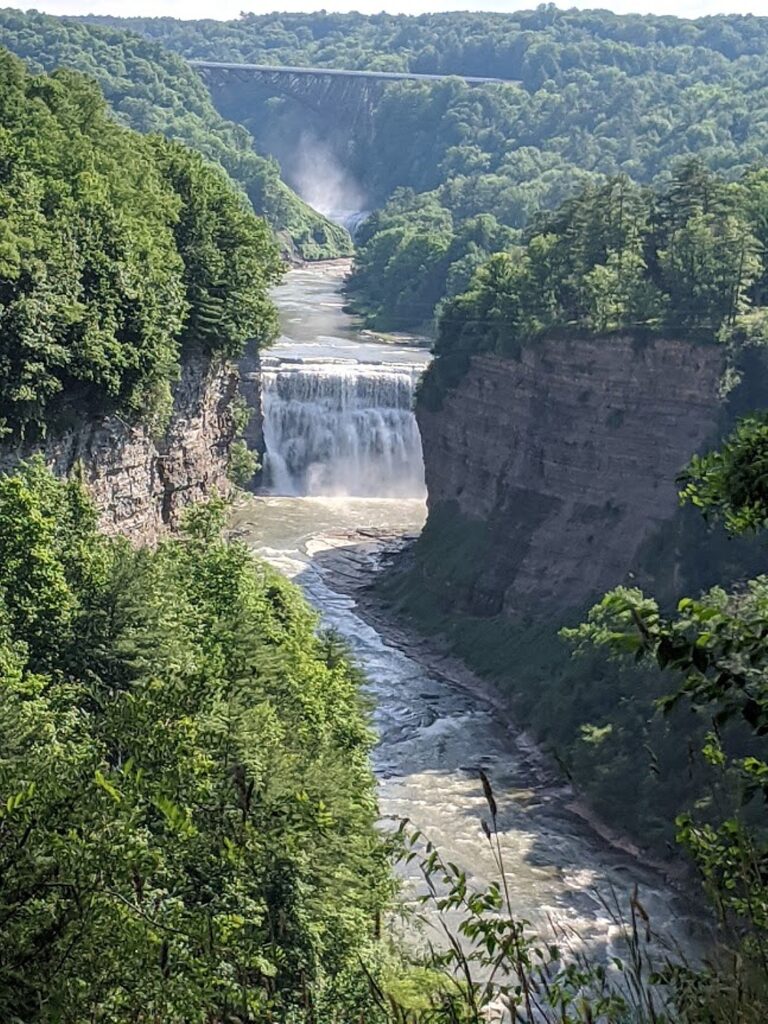
New York State Office of Parks, Recreation and Historic Preservation oversees more than 250 parks, historic sites, recreational trails and boat launches, which were visited by a record 77 million people in 2019. A recent university study found that spending by State Parks and its visitors supports $5 billion in output and sales, 54,000 private-sector jobs and more than $2.8 billion in additional state GDP. For more information on these sites, call 518-474-0456 or visit parks.ny.gov.
______________________
© 2020 Travel Features Syndicate, a division of Workstyles, Inc. All rights reserved. Visit goingplacesfarandnear.com, www.huffingtonpost.com/author/karen-rubin, and travelwritersmagazine.com/TravelFeaturesSyndicate/. Blogging at goingplacesnearandfar.wordpress.com and moralcompasstravel.info. Send comments or questions to [email protected]. Tweet @TravelFeatures. ‘Like’ us at facebook.com/NewsPhotoFeatures
